

Kruger National Park - South African Safari Tours
Steeped in legend and history, the iconic Kruger National Park in South Africa is waiting for you to explore its vast landscapes and spectacular African wildlife.
Plan your Kruger National Park safari trip from our recommended Kruger Park safari tours which range from exclusive private safaris to affordable group safaris. Take a journey of exploration to find Africa's Big Five : Elephant, Lion, Rhino, Leopard and Buffalo, you will discover unique wildlife on a real Kruger National Park safari in Africa.
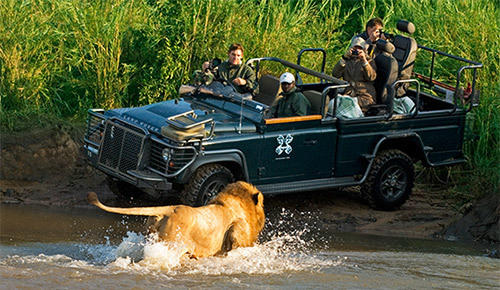
Classic Safari Tours
Our Classic Kruger Safaris offer you an authentic African safari experience with excellent wildlife sightings. Think 4x4 game drives followed by dinner under the African stars...
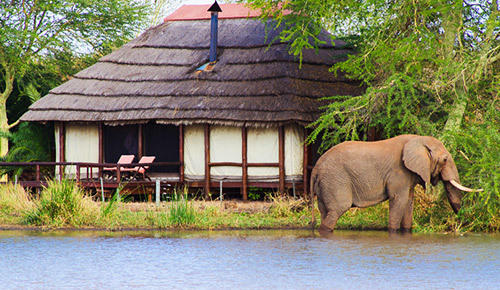
Safari Lodge
This Kruger Park lodging guide introduces you to the best safari accommodation in Kruger Park. You will stay in luxury safari lodges or opulent tented camps.
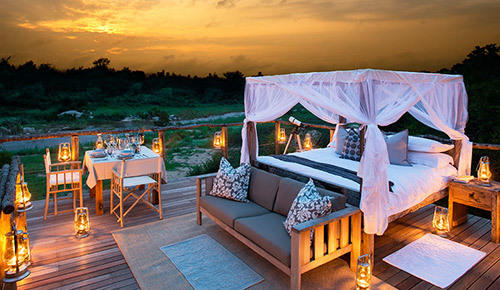
Romantic Safari
Romance, indulgence and luxury escapes. Exquisite destinations to celebrate your love. These Kruger Park honeymoon packages at the most sought after lodges...
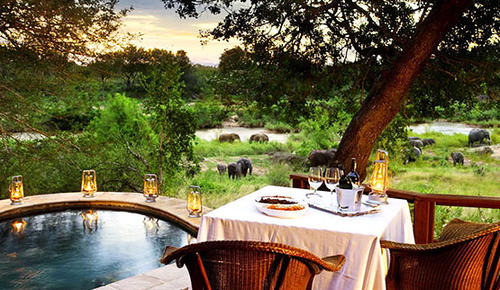
Premier Safari Collection
Create timeless memories on the ultimate private South Africa safari Experience a safari with every luxury on hand, outstanding cuisine and a range of five star facilities...
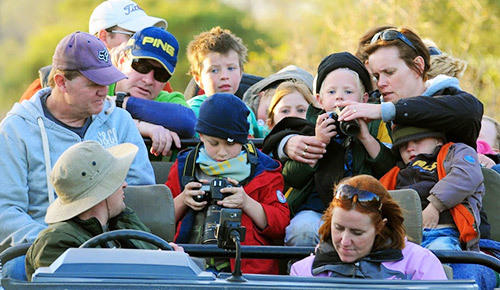
Family Safari Holiday
Take your children on a safe, magical journey of discovery into nature's wonders. These family tours in Kruger Park provide options for kids of all ages, with tailored programs, fun...
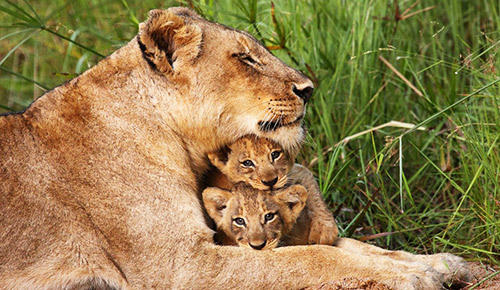
Popular Safaris
For the time-constrained traveller wanting to experience the essence of a wildlife safari, this collection of Krugerpark tours , offers you a choice of classic, deluxe and luxury...
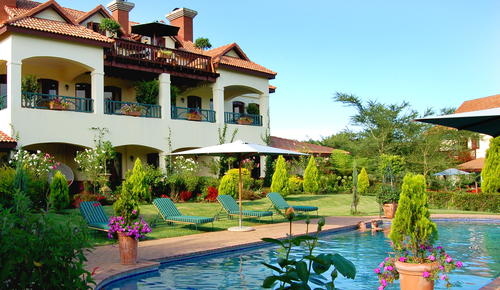
Accommodation Near Kruger Park
Hotel lodging and accommodation near Kruger National Park are close enough for you to participate in a self-drive or guided Full-day Safari Browse guest houses, lodges and hotels near Kruger Park entrance gates ...
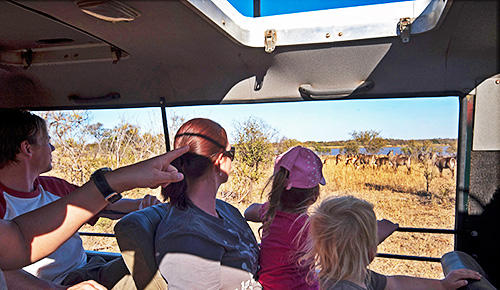
Fully Guided Safari
Enjoy traditional Kruger National Park safari comfort, accompanied by a skilled ranger on your game viewing safaris. These fully guided safari travel packages deliver standard lodge accommodation and guided game viewing...
Luxury Lodge Safari in Kruger National Park
This selection of the finest luxury accommodation and lodging in Kruger Park is where you will discover a way to appreciate the African wild and do it in comfort - with exceptional cuisine, magnificent wildlife experiences and great hospitality. Our South African safari and game lodges range from artistically elegant to super luxurious with en-suite bathroom facilities.
Self-Catering Rest Camps in Kruger Park
Looking for more affordable self-catering accommodation in Kruger National Park? Rest Camps in Kruger Park offer a range of accommodation from campsites to huts, bungalows, cottages, rondavels, safari tents and guest houses. Facilities include restaurants, shops, petrol stations and more. Ideal for a self-drive safari, although guided game drives can also be arranged.
Kruger National Park Map
Where is Kruger National Park? A Kruger Park Map is indispensable in the planning of any safari. Find out how to drive to Kruger Park from Johannesburg, and how to get around Kruger Park if you are doing a self-drive safari . Here you can find
- Main Kruger Park Map
- Best Game Viewing Routes Map
- Kruger Park Gate Times and Distances List
- Map of Historical Kruger Park Sites
- Map from Johannesburg to Kruger Park
Flights to Kruger National Park
Get flight times and schedules for departures from Cape Town, Johannesburg and Durban, to Kruger International Airport.
Sabi Sands Private Game Reserve
Timbavati private game reserve.
- Manyeleti Game Reserve
Thornybush Private Game Reserve
Balule private game reserve, nearby activities and attractions.
There are also other fabulous activities in the surrounding areas that will enhance your Kruger National Park safari experience. How about an amazing Kids elephant safari or a majestic hot air balloon flight? These are real once in a lifetime experiences! Other options include horseback riding, blissful spa treatments and golf.
You can also see what is being done on a grassroots level for the survival of African wildlife at rehabilitation, breeding and endangered species centres .
Combining any of these activities with your Kruger Park safari adventure is something you definitely should consider - maximize your holiday experience in every way.
- Customer Support
- Tel: +27 21 424 1037
- Fax: +27 21 424 1036
- Contact by Mail
- Business Hours
- Mon - Fri. 08:00 - 17:00
- Saturday. 08:00 - 12:00
- Reservations and Booking
- Booking Conditions
- Visa and Passport
- About Siyabona Africa (Pty) Ltd
- Game Reserves
- Balule Game Reserve
- Sabi Sand Game Reserve
- Thornybush Game Reserve
- Timbavati Game Reserve
- Near Kruger National Park
- Birding in Kruger Park
- Kruger National Park
- Most Popular Pages
- Kruger Park Maps
- Best Time to Visit Kruger
- Getting to Kruger
- Accommodation at a Glance
- Camp Gates Map
- Kruger Park Gate Times
- Kruger Travel Help
- Conservation Fees
- Kruger Park News
- Reference Guide
- Africa Mammal Guide
- Africa Bird Guide
- African Flowers Guide
- Africa Grass Guide
- African Tree Guide
- African Reptiles Guide
- Kruger Park Culture
- Kruger Park History

Kruger National Park
QUICK FACTS
- World-famous for it's wildlife
- Kruger Park is state-owned and accommodates budgets on both the low-end with self-catering, and on the high-end with luxury concessions
- Luxury customers usually fly in to nearby airports (KMIA / SZK / HDS) from either Cape Town or Johannesburg
- Self-drive possible but flying more common for luxury itineraries
- Game viewing best during the dry winters months May to Oct
- Wet summer season brings full waterholes, lush bushveld, many newborn wildlife and the summer migrant birds arrive
- 15+ luxury lodges in 9 private concessions (each run by a particular operator) over an area of 1,950,000 hectares. Bare in mind that the majority of this is state-owned and run.
ADDITIONAL READING
- https://www.safari.com/blog/top-5-kruger-national-park-safaris
- https://www.safari.com/blog/top-10-luxury-lodges-in-the-greater-kruger-park
Lodge and package options are shown below, but if it seems daunting, feel free to contact [email protected]

Sub regions inside
Broader region.

The Kruger National Park is one of the most famous and visited National Parks in Africa, for good reason. Home to an incredibly diverse wildlife population including the Big 5, a wide range of predators, the biggest collection of mammal species in Africa and an amazing range of bird species - the Kruger Park is a mecca for wildlife encounters.
Over and above the endless African wildlife within the reserve, there are also an incredibly large and unique variety of luxury lodges within and surrounding Kruger National Park.
The Kruger National Park is a destination that is generally considered to be good all year-round.
The attraction to the Kruger National Park is most certainly the wildlife and there is no question that the dry winter season from May to October is considered the best time to experience phenomenal game viewing and walking safaris. The bush is less dense and animals tend to gather around the fewer permanent water sources, allowing for better viewing opportunities.
Mid-winter - June to August - is a very comfortable time of year to visit the Kruger as there are few mosquitoes, little if any rain and temperatures are pleasantly warm during the day and refreshingly cool at night. The bone-dry, end-of-winter months of September and October often experience uncomfortably hot and humid conditions but concentrations of animals around water sources are at their highest - this period is often regarded as the best game-viewing time for a Kruger safari.
The summer rains arrive from November onwards , peak in January and February and end around April. The Kruger is transformed into a beautiful, thriving green landscape and it makes for superb photography. Game viewing is still good with many young animals around, making it a predator's paradise. It is also the best time for bird watching as well as safari-and-beach holiday combinations.
The Kruger National Park is considered a low malaria area, however, we would recommend consulting a medical practitioner for advice about malaria.
The Kruger National Park is also very popular during the long December/January school holidays, so should you be looking to travel during this time period, we strongly recommend that you book well in advance and consider the northern parts of the park or the Kruger's private reserves and concessions, should you desire a less crowded experience.
The Kruger National Park is regarded as the ultimate safari destination and the largest in South Africa . With almost two million hectares of pristine wilderness, the park is split into northern and southern reserves. The northern reserves are often referred to as the Greater Kruger National Park .
Home to the famous Big 5 : lion, leopard, rhino, elephant and buffalo, and the highest number of large mammal species on any African reserve, the Kruger offers a rewarding safari experience and an array of accommodation options including luxury lodges and self-catering. Activities offered at most reserves include morning and afternoon/evening open vehicle game drives and guided bush walks. Some reserves offer optional local village tours, hot air ballooning, elephant interactions, visits to animal rehabilitation centers, treehouse sleep-outs and photographic safaris.

May 17, 2024
So helpful so friendly.
So helpful so friendly. Wow 5 stars not enough for Lisa
Safari booked. SA here I come.
I have never been to SA before, so naturally I was a bit apprehensive about booking a safari on my own. I turned to safari.com for help and I'm so glad I did. Keith was so helpful, patient and saved me money! That's a win, win, win. I would recommend safari.com to anyone planning their trip and their experiences in SA.
As all ways the best service from Dolan…
As all ways the best service from Dolan Sequera
May 16, 2024
Trip planning made easily and with kindness!
I was in need of help quickly to book a place to stay for 6 people. I wasn’t sure if I should drive or fly and Pascal helped me so quickly and was so kind and patient. He texted with me, called me and was wonderful to work with. He provided me with 2 quotes and helped me through the booking process. Looking forward to our trip!
Safar.com review. Victoria falls Safari
Leigh Anne was a pleasure to deal and worked tirelessly to make sure we had the best experience. Thank you.
Great customer service
Heleen went out of her way to find us accommodation. We left our planning way to late and were looking at the busiest time of year yet she worked her magic.
May 15, 2024
Sara - great travel agent!
Sara was amazing to work worth and was very quick to respond with any questions I had!! She put together multiple safari packages for me to choose from and guided me every step of the way. I highly recommend working with her!
May 14, 2024
Helpful, friendly
Tanya from Safari were a great help at such short notice. Her friendliness, kindness and great service are much appreciated. 5 Stars for Tanya
Username or E-Mail
Forget Password?
Do not have an account?
Already a member.
- Umbhaba Specials
3 Day Best of Kruger Safari
- Umbhaba Accommodation
- 4 Day Kruger and Panorama Safari
- 5 Day Kruger and Panorama Safari
- Kruger and Panorama
- Group Open Vehicle Safaris
- Full Day Cape Winelands Tour
- Full Day Cape Canopy Tour
- Full Day Walk to Freedom Tour
- Full Day Cape Point & Peninsula Tour
3 Day Best of Kruger Private Safari
- 4 Day Kruger and Panorama Private Safari
- 5 Day Kruger and Panorama Private Safari
- Private Vehicle Full Day Safaris
- Private Vehicle Morning Safaris
- Private Vehicle Afternoon Safaris
- General FAQ’s
- Accommodation Kruger Park
- Image Gallery
- Video Gallery
- Our Open Vehicle
- Kruger National Park News
- Kruger Park Mammal Guide
- Kruger Park Bird Guide
- History of the Kruger Park
- Morning Safaris
- Afternoon Safaris
Full Day Safari
- Full Day Panorama Tour
- Half Day Soweto Tour
- Full Day Soweto Bicycle Tour

Book the Best 3, 4 or 5 Day Kruger Park Safaris and Tours
“Kurt Safari is the # 1 Rated Kruger National Park Safari Company on Tripadvisor. We specialise in 3, 4 and 5 Day Kruger Park Safari Packages , as well as Day Safaris and Tailor-Made Kruger Safari Trips .

Safaris Depart Johannesburg Every Monday – Wednesday – Saturday
4 Day Best of Kruger Safari
4 day kruger & panorama safari, 5 day kruger & panorama safari.

Private Safaris Depart Daily
Private Full Day Safari
Private morning safari, private afternoon safari.

4 Day Kruger & Panorama Private Safari
5 day kruger & panorama private safari.

3 Day Best of Kruger Budget Safari
4 day best of kruger budget safari, 4 day kruger & panorama budget safari, 5 day kruger & panorama budget safari.

Tailor Made Guided Safaris

Morning Safari
Afternoon safari.

2 Nights Umbhaba Eco Lodge Self-Drive Safari
3 nights umbhaba eco lodge self-drive safari.

Namibia Tours & Safaris
Garden route tours, cape town / johannesburg day tours, trip advisor reviews, for the last 20 years, kurt safari’s experienced kruger guides have been driving both local and international travellers through some of the most exquisite and wildlife-filled areas of the world-famous kruger national park..
Today, we are a highly ranked, and much recommended, TripAdvisor Kruger National Park safari company. We have curated an exclusive array of safaris, activities, and tours that promise to give you a wildlife encounter that is nothing less than absolutely extraordinary. We offer some of the very best 3, 4 and 5 Day Kruger Park Safari Packages, as well as an array of Day Safari options.
A place of untouched African landscapes, the Kruger National Park is a true haven for those seeking adventure in a place that is home to a rich and diverse wildlife and plantlife. It’s a place made for the more adventurous spirit. Have a look at our comprehensive selection of Kruger National Park packages and discover the magic within each expedition.
Our Kruger Park Safaris Depart from Johannesburg Every Monday, Wednesday and Saturday
OUR OFFICE IS THE ROADS, CAMPS AND ATTRACTIONS OF THE MAJESTIC KRUGER NATIONAL PARK. AND OUR PASSION FOR THIS EXCEPTIONAL PLACE HAS MADE KURT SAFARI SOUTH AFRICA’S MOST ESTEEMED KRUGER NATIONAL PARK SAFARIS TOUR OPERATOR
We have a selection of the very best Kruger National Park Safaris travel packages, each of which have been created for clients who are looking for that real African Safari experience, where a rustic adventure meets first world comfort. Every aspect of our Kruger Park safaris and tours are tailor made to suit a variety of budgets, experiences, and tastes.
Our Kruger National Park safaris include a range of affordable trips, created just for those travelling on a limited budget, and we also have a selection of Kruger Park tours designed for holiday makers wanting a luxury African vacation. Not only do our guests get to explore the best of the Kruger National Park , spending their days slowly driving along some of the most famous roads, those well-known for their wildlife population’s, but they also have the option to explore some of the region’s most interesting and beautiful attractions.
In the company of a trained and passionate guides, our guests spend up to 9 hours a day in the Kruger National Park . This is more time than most other companies allow for, and this means our guests have a better chance of seeing the Big 5 and more. We make use of the most comfortable, open-air safari vehicles, giving guests a real bird’s eye view of the wildlife we encounter.
Most of our Kruger Park safaris and tours are conducted in areas of the Southern Kruger, where wildlife populations are abundant. This part of the park is home to the Big 5 – Lion, Elephant, Buffalo, Leopard and Rhino – herds of rambling zebras and wildebeest, and more birds than you could imagine. The Kruger National Park has over 148 mammal species, and many of which can be seen in the Southern regions of the park.
Kurt Safari offers one of the widest varieties of Kruger National Park Safari Packages, from exciting 3, 4, and 5 Day Packages to an epic 8 day Photographic and Birding safaris. Each tour is conducted with professional guides, who are both passionate about the park and knowledgeable about its inhabitants.
To book any of our Kruger Park safaris , you can browse through our website and find the one most suitable for your needs, your expectations and your budget. You can then book directly via our website, pay online and start preparing for your trip. Alternatively, you can contact us and have a chat with one of our knowledgeable consultants.
We are based in the sleepy Lowveld town of Hazyview, which is a 15-minute drive away from the Kruger National Park . Our consultants, guides and management team are predominantly locals who’ve spent a lifetime living in the area. They all have tremendous knowledge about the Kruger National Park and its wild inhabitants and can give you the kind of advice that you won’t find online, which you can use to make your holiday simply unforgettable.
Guests who choose an overnight holiday with Kurt Safari, stay at some of Hazyview’s most incredible private lodges. Just a 15 minute drive from the park, the lodges we use are chosen for their comfort and their high standard of excellence and friendly hospitality. The lodges we choose have Wi-Fi and the booking includes breakfast and dinner. We are also able to block book accommodation.
Kurt Schultz, the Director of Kurt Safari personally guided Kruger Park safaris for almost 12 years before creating his safari company. Today, the company is rated as one of the leading Kruger Safari operators on TripAdvisor, and all of our packages have been personally curated, after many years of trial, error, and trips in the park. We believe that the Kruger Park safari should be simple but wild, with a focus on quality guiding and safety. We also believe that what can make a market truly special is the added benefits such as secluded but comfortable accommodation, indulgent meals, and the opportunity to have a memorable experience, even if you are travelling on a budget.
We very much look forward to welcoming you to one of our our favourite places, the Kruger National Park. We hope that you truly enjoy your Kruger Park safari with us.
Read our Complete Guide to the Kruger National Park here
Welcome to kurt safari. here you will find a selection of well-priced kruger park safaris as well as travel information., your adventure begins here.
Kurt Safari Co is one of the Kruger’s leading tour operators, with over 20 years spent welcoming guests from all over the world to experience the ultimate Kruger Park safari.
We have a diverse selection of fantastic Kruger safaris for our clients to choose from. Each safari is carried out in an open safari vehicle and in the company of one of our professional guides, each of whom has years of experience guiding tours through the Kruger. Our safari packages are designed in such a way that you are guaranteed to have a truly unforgettable time in our beautiful country. We know that for many of our guests, a visit to the park is a once in a lifetime adventure and so we try to ensure that our Kruger Park safaris are as entrancing, captivating and as memorable as possible. Our tailor-made safaris as well as our standard safari packages, offer something for everyone. Whether you are looking to spend a single day, 3 days, 4 days or even 5 days in the Kruger, we have the tour for you. We also have shared safaris and private Kruger Park safaris, as well as packages for guests wanting to see the Panorama Route and the Kruger National Park.
Our guests stay in the exclusive Umbhaba Eco Lodge, where they can look forward to a world class experience in their air conditioned en-suite room. Should there be no availability at Umbhaba Eco Lodge during their trip, guests will stay at the equally stunning Sanibonani Lodge in Hazyview.
The Kurt Safari Kruger Experience
A Kurt safari is a laidback experience and our itineraries, as well as all that is included in each tour, will ensure that you are well taken care of and in the best company.
Our guided tours are well priced and well organised and accommodation is included with each overnight package.
We specialise in small guided group Kruger Park safaris and with our daily departures from Johannesburg to Hazyview, you can arrive in the city in the morning and be enjoying the Kruger in the afternoon! Our Kruger safaris are ideal for both locals and international visitors.
Each safari vehicle is open, giving you ample visibility, allowing you to easily spot animals through the wild vegetation. This visibility makes each safari perfect for budding and experienced photographers looking to capture those one of a kind snaps. If you are in search of a more photographic focused safari, please have a look at our custom photographic safaris.
The Kruger National Park is without a doubt the best place in South Africa to spot the Big 5. The Kruger is home to the Lion, Leopard, Elephant, Rhino, and Cape Buffalo and a day trip to the park can offer enough time to spot these animals and many more. Keep in mind that when visiting the Kruger, you never know what is waiting around the next twist and turn in the road! The Kruger boasts a massively diverse number of wildlife and bird species.
Although we have a wide range of Kruger Park safaris and exciting game drives for our guests to choose from, we are also more than happy to customise a package to fulfil all of your wildest safari daydreams! We always go the extra mile for our guests as we know how truly amazing and memorable a real African safari should be. We are SATSA accredited, which is our guarantee to you that the safari you are paying for will live up to all of your expectations. You can look forward to a safe, well-priced, one of a kind safari. Each of our safaris will meet your expectations for that African experience you seek.
You can view the pricing of our bestselling Kruger Park safaris on our website.
Should you have any questions about our tours kindly get in touch with our helpful Hazyview based team. You can also check out TripAdvisor to see all of our latest reviews.
We look forward to welcoming you to the African continent. You can make your safari booking via our website or by getting in touch with us via email.
Kruger park safaris: must know info.
The majestic Kruger National Park is one of South Africa’s best loved iconic landmarks. Each year the conservation reserve welcomes thousands of guests from all over the world. Embarking on one of the many Kruger Park trips available, or taking a self-drive through the park , is the way that most guests are introduced to the quiet solitude that you will only find when out in the wild. But it is not the quietness that brings guests to the park. It’s the animals.
Booking a Kruger Park safari or a Kruger Day Tour has also never been so easy. A quick look online will present you with a huge number of options, most of which are from top-notch safari companies, such as ours. Why book a safari instead of doing a self-drive?
We reap the benefits of the wisdom and foresight of those who came before us. The Kruger Park safari is an experience to be remembered and it’s one that is not as costly as you might think.
The Founding of a Legendary Conservation Park
Paul Kruger , the onetime president of the now-defunct Transvaal Republic, made it his mission to have an area of the Transvaal set aside for the conservation of animals. Without his efforts, the animals that we now see roaming the park would have long been erased from the land. Back in 1898, when the park was first founded, hunting was rife and trophies of big game, such as lions and elephants were much sought after by overseas visitors.
To prevent the local animal life from becoming completely eradicated, the park became a no-hunting zone and to this day remains one of the oldest and biggest areas of conserved land in the world.
The Kruger National Park might have been proclaimed in 1898 , but it was only in 1927 that it was named the Kruger National Park and opened to tourists. Those early days were interesting, to say the least, with tourists literally flying through the park on a train. Not a lot could be easily seen, and the route was one that could not be changed. But this was the safest way for the earliest visitors to see the park. These were the days before the can.
By 1928, the Kruger Park was being steadily run by a board of directors and it was decided that in order to make the park more accessible, overnight accommodation needed to be built. The park’s first rondavels, a round hut style of accommodation that is as synonymous with the park as the Big 5, were built at Skukuza, Pretoriuskop and Satara. As more guests visited the park, more accommodation was added for their benefit while the former accommodation used for rangers was also converted into unique accommodation for guests.
Fees were never exorbitant and so the park became known as the People’s Park; a place where anyone could experience all that the conservation effort had to offer.
If you have done your research about South Africa, and the Kruger Park in particular, you will know that the summers are exceptionally hot and humid. So you can sympathise with the park’s earliest overnight guests and their struggle to stay cool.
In fact, staying over in the park, in one of the rondavels, was not a popular choice. Sure it was a novelty, but the heat was as unbearable as the mosquitoes, which could not be kept out. These days, rondavels have fans and some even have air-conditioning.
Kruger Park Flora and Fauna
While animals are what draws people to the park, the flora of the area is just as captivating as the fauna. The plants and trees of the Kruger are really diverse, and different flora can be seen in different areas of the park. The Kruger is divided into 4 distinct areas, each distinguishable based on the flora of the area.
Thorn trees and red bushwillow veld
In the west and more or less centre of the park, just south of the Olifants River, lies the red bushwillow trees as well as acacia (thorn) trees. The area also boasts plenty of marula trees. The acacia trees line the rivers and streams. Along with the Nwatimhiri Bush, the areas along the Sabie River are very dense with vegetation.
Knob thorn and marula veld
In the area south of the Olifants River, and to the east of the park, lies knob thorn and marula veld. This region provides plenty of grazing ground. Red grass and buffalo grass, as well as the knob thorn and marula trees, make this an important region of the park.
Red bushwillow and mopane veld
North of the Olifants River and to the west of the park, the red bushwillow trees and mopane trees mostly make up the vegetation.
Shrub mopane veld
Almost the entire northeastern area of the park is covered with mopane trees.
While these areas have more plants and trees than mentioned above, it is the abundance of these trees and bushes that contribute to the naming of the areas. Each region is exceptionally important for the survival of fauna.
Famous Fauna and the Effort to Conserve
The park is famously home to the Big 5, which consists of the lion, leopard, elephant, rhino and buffalo.
These iconic animals are part of the allure of visiting the Kruger, but they are not the only incredible animals to have a home here.
In fact, there are more species in the Kruger than in any other park on the African continent!
Overall, there are 147 species of animals in the park. Along with numerous predators and large species such as elephants, the park also has a host of antelope such as kudu, impala, nyala, and eland. The Kruger National Park is also home to various endangered as well as rare species, such as the wild dog.
Anti-Poaching Efforts
As the park has many endangered species, efforts to prevent poaching have been underway for many years. Anti-poaching units are equipped with the latest in prevention equipment such as night vision technology and advanced telescopes. Game rangers, the police and the army have been actively involved in the effort to stop poaching and while instances have been reduced, animals are under constant threat.
While elephants are occasionally hunted, it is the savage slaying of our precious rhinos that makes the headlines. Poachers sneak into the Kruger, often when the moon is full, and hunt rhinos for their horns. The horn is worth around $ 66 000 per kilogram and although there is a ban on the trade of the horn in most countries, the ban sadly has little effect.
Those who go on a Kruger Park safari drive are incredibly lucky to see a rhino.
Must Know Kruger National Park Rules
In the beginning, the rules for guests visiting the park were very relaxed and not widely enforced.
But as time has gone by, more rules have been added to the sheet given to guests upon entry. All of the rules are simple to understand and very easy to follow. If this is your first time going to the park, here’s what you need to know:
- Guests are only allowed to drive in the park from sunrise to sunset. Before the evening comes, guests need to be out of the park or they need to be at the rest camp they are booked into. An exception is made when guests embark on a Kruger Park night drive but guests are not allowed to self-drive after dark, so you’ll need to make arrangements and bookings for such an experience.
- Another important rule and one that applies greatly if you are going to be doing a self-drive through the Kruger is the speed limit. There is a strict speed limit in the park ; 50 km on tar roads and 40 km on gravel (dirt) roads.
- It goes without saying, but indeed sometimes needs to be said, that guests are not allowed to leave the safety of their vehicles . There are also those rare cases of guests wanting to touch the animals, which is also forbidden. One of the major park rules is that people must remain in their vehicles.
- Feeding or disturbing the animals is also very much against the rules . Littering goes in this category and it is also forbidden. Because all of the animals are wild, feeding them can do more harm than good. Animals also often mistake litter for feed and end up eating the litter and becoming ill or dying.
- If you will be doing more than a Kruger Park day tour, then there are other rules that you will have to adhere to. Being booked into your camp before 14:00 pm and leaving by 10:00 am the following day is a must.
- Another thing to take into consideration is the noise rule . Camps are generally quiet places. What keeps them quiet is the rule that states that guests must limit noise between the hours of 21:30 pm and 6:30 am. Cell phones are permitted in the camps, but minimal use is encouraged.
- Only safari vehicles and private vehicles are granted access to the parks . Motorbikes are not allowed and roller-skates and skateboards are not permitted.
- All of the rules and regulations are enforced by legislation (the National Environmental Management: Protected Areas Act of 2003). This means you can be charged or fined for breaking the rules. The rules and regulations are there for the safety of the guests while they can also make the trip more relaxed and enjoyable.
Reputable safari companies always adhere to the rules of the park.
The kruger’s 12 main camps.
There is a laundry list of reasons why you should visit the Kruger National Park.
And one of those reasons is the history and the hospitality you will find in every camp. If anything, the park is one really laid-back place to be. Even the busy main camps, of which there are 12, are in their own bubble, away from the modern world.
Berg-n-Dal is one of the few camps in the park set in a mountainous area and the natural environment and habitat have been well preserved within the camp. The camp has dry riverbeds on the southern and northern borders, along with very large trees. Some of the animals to see near the camp include the wild dog, the klipspringer, and the leopard. If you are staying over in the park, then you’ll be happy to know that there are a number of facilities available along with great accommodation.
Berg-en-Dal is one of the Kruger’s newest camps. The beautiful rocky region in which it has been built often makes it the perfect place to see cats while the camp also has an indigenous rock garden that guests can explore. The camp was originally built in 1984 but just before the camp was opened, it just about completely burned to the ground. Officials scrambled to get the facilities rebuilt, and somehow managed to get everything done in time for the opening.
The camp has been built on top of a prehistoric settlement and the area around the camp is filled with all kinds of examples of ancient life and it has a Bushman Trail which allows guests to view San Bushmen rock art. The bush walk is about 20 minutes and guests will see various ecological and geological sites when viewing the paintings.
There are a few archaeological sites close to the camp and pot shards and bone fragments have been unearthed here. Some of the latest evidence shows that those who lived in the area were from the Iron Age.
The camp is in the southern Kruger, a region of the park that is well-known for its abundant wildlife. The camp has all kinds of accommodation including camping, cottages, guesthouses and bungalows. It also has a big swimming pool, an internet cafe, a conference centre, and picnic areas for day tourists. Not many guided Kruger Park safaris stop here, but those that do enjoy a quieter setting than compared to Skukuza. The Kruger National Park accommodation at Berg-en-Dal is rustic but comfortable and affordable.
Crocodile Bridge
One of the smaller camps in the Kruger National Park, Crocodile Bridge gets its name from the Crocodile River, which flows close to the camp. Game viewing is excellent when you drive the Southern Circle which is near to the camp. In this area, lions are often spotted. Other animals known to prowl the area include kudus, giraffes, spotted hyenas and cheetahs. This camp has been time and again nominated as the best camp in the park.
Situated at the halfway point of the park, a perfect fit between north and south, is Letaba. The name means River of Sand and it is one of the best-known places to spot elephant. While a lot of areas in this sector of the park are already turning into grassland, Letaba is green and lush. And the night erupts with life. When you stay at Letaba, bats, owls, nightjars, frogs and cicadas keep the night alive. But there is more than the nightlife to keep you entertained. The areas surrounding Letaba are known for sightings of elephants and bushbuck.
Lower Sabie
Lower Sabie is situated along the banks of the Sabie River. The camp’s location gives it a laid back, calm atmosphere that guests can really unwind in. The camp is well known for having numerous, massive trees which makes it the ideal place to see leopards. Other animals you can see in the area includes hippo and lion, along with all of the usual antelope. A large number of other animals also visit the river to have a drink of water. At Lower Sabie, you will also have access to fantastic accommodation.
This is one of the camps in the park that is home to plenty of Mopani trees. But the most significant feature of the camp is the massive baobab tree that sits in the centre of the camp. Most of the camp’s vegetation is left to grow naturally. Some of the animals that you can spot in the area include hippo, waterbuck and tsessebe. The camp is on the border of the Pioneer Dam, so seeing animals late in the afternoon and early morning coming for a drink of water is the norm.
Olifants is well-known for the amazing views that it has on offer. The camp is situated high up on a hill, above the Olifants River. The camp is surrounded by viewing platforms, which offer a great way to spot the wildlife roaming near the water below. Some of the animals you can see here include crocodile, lion, elephant and hippo. Along with great accommodation, there is also a great picnic spot for day visitors.
With two satellite camps, Maroela and Tamboti, Orpen is well situated. The camp got its name from the Eileen Orpen who was owner of the land which was donated to the park and became the place where Orpen now is. This grassy area is a great place to spot grazing animals, while the wide open surrounding plans are home to many prides of lions. By night, the air is filled with the sounds of roaring lions, something that you will never forget. Orpen is well known for having a diverse array of wildlife, and some of the animals you will come across include rhino, buffalo, elephant, leopard and lion which make up the Big 5. Other animals include wildebeest and jackals.
Pretoriuskop
Pretoriuskop is a camp nestled between millions of years old outcrops of granite rocks. There are a number of interesting granite boulders in this south-western based camp. But the real attraction here is, of course, wildlife. Pretoriuskop is one of the park’s oldest camps and evidence of its age can be seen in the layout and style of the camp. The animals that are often spotted here include the Sable antelope, Lichtenstein’s Hartebeest, wild dog and kudu. Many people like to stay at this camp because it is quite close to one of the entry points to the park.
Punda Maria
Only those willing to brave the heat are brave enough to stay at Punda Maria during the intense summer months. And even in the midst of winter, this camp can get hot. Punda Maria is found in the north-most part of the park and because of the sandveld habitat, it is home to a number of interesting plants. Punda Maria is often called the botanical garden of the park. When travelling in this region you might come across nyala, wild dog and plenty of zebra herds. The drive is a long one when you are heading north. Often only those who will be spending more than a few days in the park will attempt a stay here.
Some of the first rondavels were built at Satara after more and more guests became interested in spending a night in the park. Today, Satara is a very busy camp and one known for its excellent game viewing opportunities. Satara is in a wooded area and the camp itself is considered to be rustic. If you are an avid bird watcher, this is definitely the place to go. And along with the birds you can see here, there is also a variety of animals such as lion, giraffe, wildebeest and the honey badger.
Another camp located in the northern region of the park, Shingwedzi is known for its wildlife sightings, such as nyala, waterbuck and elephant. To get to the camp, you will need to take the scenic route along the Shingwedzi River. This camp is also one that is considered to still be rustic, with a lot of the conveniences of modern living not found here, a factor that makes staying here a real break away. If it is tranquillity that you are seeking, you’ll find it here. Along with tranquillity, you will also find some interesting birds such as the Giant Eagle Owl and the Green Pigeon.
Of the plants that you can see here, there is Natal Mahogany, mopane scrub, brack thorn, sausage trees, and mustard trees. There is also a lot of bird life in the area.
As a northern camp, Shingwedzi is worlds away from the wet and humid sub-tropical southern areas of the park. Here the vegetation is sparser, which makes seeing wildlife a little easier. The further north you travel, the terrain changes from mountains and hills, to wide open plains and you can imagine cheetahs darting over the grassland. Shingwedzi is not on the day Kruger Park safari destination list because it is further away than most camps, but it is the ideal place to spend a holiday if you are looking for tranquillity.
Shingwedzi is famous for being home to some of the biggest elephants the park has ever seen. The Magnificent Seven once roamed the areas around the camp, and they became famous for having the biggest tusks ever recorded for elephants in the Kruger. An artist who learned of the elephants searched the area to find them and immortalise them in his artwork. Once the art became public, and more people learned about the elephants, guests from all over the world came to see them. The great tuskers lived in the area during the 1070s and 1980s, when the last of the tuskers died. The park has not seen the likes of these elephants again, and today, their tusks can be seen in various camps. The Shingwedzi River runs close to the camp, and it is one of the best places in the area to spot all kinds of wildlife. When the river comes down in flood, even more animals can be seen. Beyond the river lies an old alluvial plain which has a few trees and little vegetation.
Shingwedzi camp is a modern one with a touch of that rustic appeal that the Kruger has become so well known for. The camp has a restaurant and café, a swimming pool, a shop, a petrol station and a picnic area. For those who want to stay over in the camp, they are really spoiled for choice when it comes to their accommodation options. Shingwedzi has camping spots, huts, bungalows, and more luxury accommodation such as guest cottages and houses. The fixed Kruger National Park accommodation is kitted out beautifully and has fans and/or air conditioning for those intense northern Kruger summers. The camp is laid out perfectly for those wanting privacy while staying in the park and during the day, their Kruger National Park safaris offer unforgettable sightseeing.
Leaving the best for last, we have Skukuza. This camp is the capital of the park and when you are on a Kruger Park safari, this is the camp where you are sure to be stopping off for lunch. The camp is situated along the southern banks of the Sabie River and there are plenty of lookout points here. Guests stopping off for lunch can do so outside in a seating area as well as on benches that look out on the river. The camp is nice and shady, the perfect place to catch your breath, cool off and eat a snack. A few of the animals often spotted in the area include spotted hyena, bush baby and warthog.
Some wildlife comes into the camp, and day visitors enjoying a Kruger Park safari can get really up close to the wildlife. Monkeys and warthogs can be found roaming the camp in search of left over picnic snacks. Guests should be warned, however, as the monkeys can get very brazen and end up stealing food from your table or even your hand. Skukuza means “He who sweeps clean”, and it is named in honour of one of the camp’s most famous and beloved wardens, James Stevenson-Hamilton. The camp was originally called Sabie Bridge Camp, but upon the 30th anniversary of James Stevenson-Hamilton working in the park, it was renamed.
Serving as the camp’s administrative headquarters while also being the one place where all day visitors converge, Skukuza has a long and important history. As the “Capital City” of the Kruger National Park, all of the day to day administration and management of the park is done here. Well away from the prying eyes of the tourists, the park’s officials work around the clock to ensure that the park is running smoothly. Those who live and work in the park have made their homes in the quiet Skukuza Village, where there is also a school, a few shops and a weather station.
As far as Kruger National Park accommodation goes, there are all kinds of options to choose from. Camping and rondavels remain the most common and the most popular style of accommodation, although the camp does have more luxurious lodgings. There are plenty of things to do in the camp, for both day visitors and those staying over. The most luxury lodgings is the Kruger Shalati Train, which is to be built on the Sabie Bridge in 2019. The camp has a refreshing swimming pool, a golf course, and countless memorials and museums. Be sure to take a look at the dog memorial, which pays homage to the hounds that helped shape the park. You should also see the oldest hut in the Kruger, which is now a museum.
The camp has all kinds of modern conveniences, such as shops, ATMs, a classy restaurant, a café and ablution facilities. Guests staying over can look forward to air conditioned accommodation.
One of the best ways to spend your time in Skukuza, when you are on a day Kruger National Park safari is to set up a picnic while overlooking the Sabie River. You never quite know what you’ll see when you are in the camp.
Most Kruger National Park safaris will end up at Skukuza at some point in the day. We, for instance, enter the camp at around 10 am to give our guests some time to stretch their legs and grab a bite to eat.
In addition to these main camps, there are also a number of satellite camps, bushveld camps, overnight hides, bush lodges, luxury lodges and campsites.
Select your kruger park safari.
The biggest decision you need to make when planning a trip to the Kruger National Park is deciding what type of safari experience you would like to have. A quick online search brings up all sorts of safari packages, but the only way to narrow down the search is to know more or less what you want to get out of your Kruger National Park safari. It doesn’t help to book a Kruger Park day safari when what you really want is 10 days in the park.
Generally, the more time you spend in the park, the more animals you will see. The Kruger is home to hundreds of different animal species, including the Big 5. And the different regions of the park have unique habitats, meaning where you go in the park will be a deciding factor for what you see.
Kurt Safari offers guests a variety of safari packages, including 3, 4, and 5 day tours of the Kruger National Park as well as morning, afternoon and full day game drives and night drives.
Full and Half Day Safaris
To save time, and particularly if you are on a budget, opting for either a Kruger Park day tour or a half day tour is one of the easier ways to get a taste of the Kruger. Generally, we encourage visitors to spend more than a day in the park, in order to see everything. But when you are limited on either time or money, choosing a day or half a day in the park, can be a great introduction to this magnificent place.
We have Kruger Park Full Day Safaris, Afternoon Safaris , Morning Safaris and tours that combine the best of the Kruger, with a trip to the picturesque Panorama Route.
Full day private Kruger Park safaris can offer you the best way to see the park, and you have the added benefit of enjoying the sights on your own or in the company of friends and family. We offer private morning and afternoon Kruger Park safaris as well as full day safaris.
The other option is to have a full day Kruger National Park safari. Again, this private Kruger experience will give you just enough time to spot all sorts of animals. And the more time spent in the park, the more animals you are likely to see. A full day safari is also less likely to leave you feeling rushed. Along with taking you to the best places in the park, there is also the added opportunity that comes with being in the company of an experienced tour guide, who is sure to share a few stories of their time in the park.
Visiting the park during the morning or afternoon is often considered to be the best times, as the heat is not intense and the animals are likely to be grazing. During the peak heat times of the day, animals tend to seek out shade, leaving guests with a disappointing drive.
We depart on our safaris in the early morning and later afternoon, when the heat of the day has either not yet arrived or has cooled off, as these remain the best times of the day to see animals. Each of our Kruger Park Safari prices are affordable, and each will take you into the parts of the park best known for wildlife sightings.
Private 3, 4 and 5 day Kruger Park Budget Safaris
Within our selection of safari packages, we have something for every type of traveller, including those travelling as part of a small group. For these guests, we have created the 3, 4 and 5 day Kruger National Park safaris. Our tours are designed to include sophisticated,comfortable accommodation.
- The 3 day Kruger Park safari
This tour includes 3 days and 2 nights. The days are spent on safari, while in the evening you will return to the beautiful Umbhaba Eco Lodge or an equally upmarket nearby lodge should Umbhaba lack capacity. Breakfast and dinner are included as well as your transfers. Along with days spent on safari, this tour package also includes a Kruger Park night drive. With the 3 day Kruger Park safari , you will certainly have plenty to see, especially as we travel to those areas best known for animal sightings.
- The 4 day Kruger Park safari
Much like the 3-day package, your evenings will be spent at either Umbhaba Eco Lodge or a similar nearby lodge. This package includes 4 days and 3 nights in the wild, with your days being spent on safari. The ideal tour package to give you ample time in the park, you are sure to see numerous animals while you are on this safari.
- The 5 day Kruger Park safari
Finally, the last budget safari that we have available is the 5 day Kruger Park safari. While this package is similar to the 3 and 4-day tours, you will have 5 days in the park . And with this extra time, seeing the Big 5 is very much a possibility. You will be accommodated in either Umbhaba Eco Lodge or another nearby lodge.
The 3, 4 and 5 Kruger Park Classic Safaris
If you are looking to have a truly relaxing safari experience, and you are not so tightly constrained by your budget, the 3, 4 or 5 day classic Kruger Park safaris are a must. Stylish accommodation in a 4 star hotel and just the right amount of time spent in the park, when you sign up for one of our classic safaris, you will be in for a treat.
- The 3 day classic Kruger National Park Safari
Heading out early in the morning and late in the afternoon for a real Kruger experience, the 3 day classic safari is as comfortable as it is exciting. Your guide will be taking you to some of the best areas in the park, spending the day on the dusty Kruger roads looking for the Big 5 and all the other interesting park inhabitants. We offer guests transfers from Johannesburg and for the next 3 days you can sit back while we drive you through the Southern regions of the park. Breakfast and dinner are included.
- The 4 day classic Kruger National Park Safari
With 4 days and 3 nights included as a part of this tour package, you will have plenty of time to relax and enjoy your Kruger trip. The day starts early with an exciting Kruger Park tour, while the afternoons are for relaxing until late afternoon, when guests go on another game drive. This tour package also includes a night drive, something that everyone should experience at least once in their lives.
- The 5 day classic Kruger National Park Safari
The more time you spend in the park, the more opportunity you will have to see the Big 5. The 5 day classic Kruger National Park safari is a must for anyone who wants to take their time and have a truly memorable holiday. You will be accommodated in 4 star lodgings and breakfast and dinners are included. Much of this tour package is similar to the 3 and 4 day classic safaris, although you will have extra time in the park.
The 3, 4 and 5 day Kruger National Park Backpackers Safari
Not at all like the classic safari, and quite different to the budget option, the various Kruger National Park Backpackers safaris are designed for those who enjoy an on the move type of holiday.
Regardless of the number of days you want to spend in the park, your accommodation will remain the same, as guests opting for the Kruger National Park Backpackers safari will be lodged at the Bushpackers Campsite and Accommodation. This accommodation includes meals and will give you that touch of rustic living that you might be after when visiting the Kruger. This is more than a backpacker’s safari, it is also ideal for students looking for an adventure!
- The 3 day backpackers Kruger National Park safari
With 3 days spent enjoying a safari , and accommodation provided by the Bushpackers Campsite and Accommodation, guests embarking on this safari package are in for a real treat! Days will start off and end with a Kruger Park safari.And as always, we take guests to the more exciting areas of the park, where animal sightings are frequent.
- The 4 day backpackers Kruger National Park safari
Regardless of the package you select, always keep in mind that the more time you spend in the park, the more chances you have of seeing the animals you really want to see. Some guests have truly seen all they wanted to see in the 4 days that they have been on safari. We take guests to the Southern areas, as these are the most populated regions of the park.
- The 5 day backpackers Kruger National Park safari
You cannot go wrong with any 5 day safari . Giving you more than enough time to see many of the park’s inhabitants, anyone embarking on a 5-day safari is in for a once in a lifetime trip. And when opting for the backpacker’s safari, you won’t be breaking the bank. This safari also includes a tour of the Panorama Route.
The Guided Group Open Vehicle Safaris
Experiencing the Kruger National Park in the comfort of an open safari vehicle remains one of the most popular ways to see the park. Guests are up close to nature, and even though you are in an open safari vehicle, you will still be kept safe. With fresh air blowing in your hair, and the unmistakable sounds of Africa filling up the vehicle, seeing the Kruger in an open vehicle will leave you with memories to last a lifetime. And they are also the perfect vehicle for capturing some incredible photographs.
At Kurt Safari, we offer some of the best priced Kruger National Park safaris. With private Kruger National Park tours and Kruger National Park day tours, guests have a number of different options to choose from when they are planning a visit to the park.
Book your tour today.
Why book a kruger national park safari with us.

Affordable World-Class Safaris
With a range of safari options, which include all of the comforts you can expect as well as conservation fees, you can save money by booking one of our exciting Kruger Park safaris.

SATSA Accredited
As a SATSA accredited company, we are dedicated to and bound by the rules and regulations as set out by the South African Tourism Services Association.

Professional Services
From booking your accommodation, to planning your day trips into the Kruger National Park in the company of one of our tour guides, Kurt Safari will do it all for you.

Constant Support
To ensure that your stay in Africa is the best possible experience, we strive to provide our guests with 24/7 support.

We are passionate Africans
We love every part of the African wilderness that we are privileged enough to call home. Our guides, consultants and management team are all locals and we live close to the Kruger National Park.
Frequently Asked Questions about the Kruger National Park
Is a kruger safari the best african safari.
The Kruger National Park is a truly wonderful and famous tourist destination in South Africa. The animal conservancy is world known for its diverse range of animals, biomes and plant life. The park was founded all the way back in May 1926, by the hard working game warden James Stevenson-Hamilton and the late President Paul Kruger. The Kruger National Park came to be after areas around it and the Sabi Sand Game Reserve merged together to form the Kruger National Park we know today. The Kruger National Park was built with the conservation of animals in the Lowveld in mind.
The Kruger National Park is home to an unbelievable number of animal, plant and bird species. The Kruger National Park hosts some of the largest and fastest animals known in the world. Animals like the African Elephant, Cape Buffalo, White and Black Rhinos and lions are some of the most popular animals in the Park and attract visitors from around the world. The Kruger Park’s location in the Lowveld provide a surprizing amount of different biomes. Each of these different biomes have stunning diversity when it comes to animals and plant life. Guests can find a sandy and dry area that hosts resilient plants, sparser landscape and lesser animals that are adapted to the hot and unique environment, while traveling a distance onwards and encountering a dense savannah bush with lush trees, lots of water and plants.
Because the Kruger National Park is such a sprawling and diverse place, every experience is different. One day guests will be able to see the Big 5 in a few hours while other days they only see zebras and impala and this is why the Kruger Park is such a well loved and visited place, for the random and exiting adventures that await. Safaris in the Kruger National Park are also great ways to experience the wonder and the beauty of the Park as guides can take guests to a variety of unique areas, provide helpful and interesting information, and they can enlighten and enrich the knowledge of the Guests. The guides are all well trained and they are living their passion, and that passion shines through with how well guests are treated on safaris.
Kurt Safari is the No.1 Rated Kruger National Park Safari Company, we offer quality and affordable 3-4-5 Day packages and day safaris with Leading guides. The sheer size coupled with the breath-taking scenery and unbelievable amount of different animal species is very inviting. The Kruger is filled with amazing history and great stories that will entice and entertain people of any age and inclination. Safaris in the Kruger are so memorable that many guests never forget their first ever time, leaving lasting memories of adventure in one of the wildest and most diverse places in South Africa.
With so many ways to explore and experience the Kruger National Park and the ease of applying for a safari, along with the friendliness and helpful ness of the guides, you can never go wrong with a Kruger Park Safari.
Is the Kruger Park Dangerous?
The Kruger National Park is world famous for its amazing animals, stunning scenery, and great history. Thousands of people visit the Kruger Park on a daily basis and want to experience all that the Park has to offer. There are plenty of great sights in the Kruger, from stunning hilltop camps overlooking the river, lookout points near a river or watering hole and even a beautiful clearing next to the road. Guests can interact with animals almost anywhere in the Kruger National Park which means there is always a risk of an altercation, with both animals and people.
Some of the “Big” dangers
One of the animals that can potentially cause problems and cause for concern when travelling in the Kruger Park is the African Elephant. These gentle giants are passive and don’t generally cause any problems unless a calf is present. Elephants have a strong maternal instinct and will protect its calf at all costs. Agitated Elephants can attack out of nowhere but will luckily provide warning before attacking. The Danger comes when you are separating the calf from the mother or when you are backed into a difficult position with little room to move. Luckily, Elephant attacks are not a common occurrence so guests can rest assured. Buffalo herds are more dangerous than an elephant herd as if you antagonize them, they attack without warning. Buffaloes are very social animals and often attack or defend in groups. When the herd is threatened by a vehicle, they will often charge or stampede to or away from the threat, causing complete chaos and providing a serious danger to all involved. Buffaloes have been known to damage cars and kill people.
The Hidden Dangers
Taking a break from the larger dangers in the Kruger, guests also face dangers when on foot in the Kruger. Some of the more hidden dangers guests can encounter when on foot, be it during a bush walk or walking around in the rest camps, are snakes and spiders. The Kruger Park is home to 152 different species of spider that range from the Crab Spider to the Baboon Spider, but out of all these, guests should avoid the Button Spider, Sac Spider and the Violin Spider as they are the three most dangerous species in the Park. Snakes have a tendency to seek shelter in a variety of places, from holes and bushes, to cracks in a wall and inside containers. Snakes are one of the biggest threats a guest can encounter while in a rest camp or bush walk as they are always well hidden and strike without warning when threatened.
The common treat
Some of the residents of the Kruger Park are extremely curious and will often be in closer interaction to humans, one of these residents is the Vervet Monkey. Vervet Monkeys are very clever animals that travel in large troops and are very common near rest camps where trash cans fresh food can be found. Vervets can enter people’s homes and cause havoc and will sometimes lash out and attack people when cornered or injured. Where there is one, there are plenty and many members of a troop can attack, causing a dangerous situation for both parties.
How much does a Kruger Park safari cost?
The Kruger National Park is the most popular tourist attraction in South Africa. The pure size of the reserve paired with the large amount of animal and plant species as well as stunning photography opportunities makes the Kruger a must visit when visiting South Africa. Many visitors to the Kruger National Park are international and are not as knowledgeable to what they can encounter and what they can expect everything to cost while they are staying here.
Your whole safari experience and the cost of it all depends greatly on what you want to do while in the Kruger. Entrance fees to the Kruger National Park vary, depending on where you are from. Guests with a South African ID will pay R200/adult and R50/child, while guests from outside SA will pay R400/adult and R200/child. Everyone international or not must pay conservation fees per day staying in the Kruger, with R400/adult and R200/child.
Guests can easily take part in a self drive safari, which means that guests are responsible for everything the whole safari, driving from place to place and making their own adventure. Self drive safaris are very popular among guests looking to experience the Kruger National Park at their own pace, spending time with family and friends without being on a tight schedule or rush. The Costs regarding a self drive safari are generally the entrance and conservation fees paid at the gate, fuel money, money for food and snacks for the long day ahead and money for souvenirs. Accommodation, should you wish to stay over are paid separately and can sometimes be pricey.
There are plenty of safari companies that can take guests on amazing safaris. There are a large variety of different tours that guests can take that will provide them with different experiences and that will cost differently. Many companies have a 3/4/5 day safari series that allow guests to experience the Kruger National Park in multiple days. Many of these 3/4/5 day safaris range from cheap budget safaris to expensive tours through the park and surrounding areas with meals included. Every safari company is different and its worth doing your homework. For the Guests that are planning on taking a 3/4/5 day safari will see that their accommodation costs are also included into the tour costs allowing guests to focus their minds on the experience and not where they are going to spend the night(s).
A Kruger Safari with a safari company allows guests to experience more of the Kruger National Park, they are driven around by an experienced tour guide that provides them with very interesting information about the park and the animals they will encounter along the way. Guides stay in the loop with animal sightings providing very reliable and exciting tours. Self drives are relaxing and cheaper alternatives to Guided Tours. Guests have the whole day to get where they need to do and make memories along the way with friends and family and isn’t a rushed affair. Newer guests to the Kruger Park are encouraged to take part in a guided tour as they are not always familiar with the landscape and the suurroundings.
Which Kruger Camps are the best?
The Kruger National Park is surrounded in a truly stunning landscape with a large variety of different biomes that house different plant life, climate and animals. The Kruger National Park is a very large conservation reserve and because of its large size, it needs to provide plenty of opportunity for guests to stretch their legs, enjoy some food, cool off and lay down their heads after a long day. The Kruger Park is littered with a variety of unique rest camps, tent camps and lodges to accommodate and meet any person’s expectations.
Luxury Living
There are so many amazing rest camps in the Kruger National Park, each providing something unique that other camps don’t have. If you are looking for central access to the Kruger National Park, great accommodation options, stunning scenery and plenty of amenities like a cinema, library and restaurants, Skukuza is the perfect place to visit. Satara is famous for its location, smack in the middle of Lion territory. Guests are guaranteed to encounter plenty of lion prides while visiting the area and staying at the camp. The Camp has a rustic appeal and isn’t as busy as Skukuza, meaning you will have the luxury of a Modern camp with the peace of a small rest camp.
Home of the Elephants
Elephants are always a huge attraction in the Kruger Park and is one of the most popular animals, which means an area that is known for their amazing elephant sightings will be an immediate hit. Olifants is built on the top of a hill that provides a view that is almost unrivalled. The camp is known for its stunning views and is also the home of Elephants. Olifants is often considered one of the best camps in the Kruger, because of its views, its peacefulness and because it is a hotspot for elephants, providing a truly unique experience as the accommodation options are also top notch.
Secretive and Relaxing
For those who prefer to live a little lighter, there are plenty of rest camps that provide great camping spots. Berg en Dal is one of the larger camps in the Kruger but its location in a hilly area surrounded by dry riverbeds, provides one of the most relaxing and chilled places to stay the night. Some of the best places to set up your tent is near the fences of the camp as you have a front row seat to the beauty of the Kruger and your views aren’t obstructed by buildings and trees. Located close to center of the Kruger Park, Balule is the second smallest camp in the Park. Though it is located close to Satara, many people who want some peace and quiet often flock to Balule. Balule is a satellite camp that has no electricity, with the kitchen run on gas, and has very spacious areas that mean less shade but more places to do stargazing. The camp is frequented by Hyenas and Elephants that patrol the low fence. Guests can truly feel close to nature while staying at Balule Satellite Camp.
Which animals can you see in the Kruger National Park?
The Kruger National Park is home to a large variety of different species of Mammals, Birds and Plants. Since the inception of the Kruger National Park back in May of 1926. Back then, before the founding of the Kruger, the Sabi Sand Reserve already focussed on the conservation of animals of the Lowveld. When the Kruger National Park was founded, it was declared that no animals are to be hunted as they were found on Conservational Ground. The Lowveld is known for a large variety of unique mammal species, many of which can only be found in the Lowveld. The Kruger Park is home to a surprising number of wild cats, the most common of the Kruger Wild Cats are the Lions. Lions are the 2nd largest species of cat in the world and largest in South Africa, only bested by the Tiger. Lions are very social animals that can live in large prides that consist of a dominant male, a number of juvenile males, many lionesses and their cubs. The most popular or sought-after cat is the Leopard , a solitary and secretive hunter that blends in perfectly into the savannah plant life. The Cheetah is the world’s fastest land animal and a true surprise for anyone on a Kruger Park Safari. The Cheetah has an appearance similar to the Leopard but is much less stocky and has smaller spots. The other cat species in the Kruger National Park are lesser known and much rarer than the Lion and Leopard. The Rooikat, Wild Cat , Serval and Caracal are very solitary animals and are much harder to encounter while on safari as many of them are nocturnal hunters.
Antelope make up a majority of the animals that can be encountered in the Kruger National Park and is probably the first animal you will encounter when entering the Park. The most common antelope in the Kruger is the Impala . These social animals can be found in large herds and are often in the vicinity of Zebra and Buffalo herds. Impala are known as the McDonalds of the Kruger as there are so many of them in the park and they are an easy catch for most predators. Some of the famous antelope in the Kruger Park include the Kudu , which is used as the face of the Kruger National Park, and the Eland , the largest species of antelope in the world. These stunning antelope are prized animals on hunting reserves but are luckily safe in confines of the Kruger National Park.
Though not belonging to the same species, the following animals are some of the largest animals in Africa. The African Elephant is the majestic and gentle giant of the Kruger National Park and is well known for its amazing herds and strong maternal instincts. The African Elephant is the largest and heaviest land animal in the world and one of only a few species of elephant in the world. The Black and White Rhinos are some of the most popular animals in the Kruger National Park, but unfortunately due to poaching their numbers have dropped dramatically and there are very few left in the wild. Some of the more common of these giants are the Cape Buffalo and the Blue Wildebeest . These animals are most commonly found near water sources and socializing with Zebra and Impala herds. These animals are mostly passive but can be very dangerous if provoked.
The variety of animals that can be encountered in the park is staggering. Zebras are always fun to see in the Park as they socialize with Impalas and interact uniquely with them. Wild Dogs , though rare are very popular animals and on many people’s wish list during safaris. Hyenas aren’t very common during the daytime but are quite active during the afternoon. You can often hear Hyenas long before you encounter one. Giraffes are great fun to encounter and can sometimes be tricky to spot amongst the trees. They travel in small herds, but you are almost guaranteed to encounter one on you adventure through the Kruger Park.
Which birds can be spotted in the Kruger National Park?
The Kruger National Park is mostly known for their large variety of mammal and reptile species and not many people give much attention to the large variety of bird species and the amazing bird watching opportunities the Park has to offer. The Kruger Park has a diverse and unique variety of bird species. Birdwatching in the Kruger National Park is a very popular activity that provides plenty of great sights and thrills. One of the most iconic and popular birds in the Kruger National Park is the Bateleur Eagle. This beautiful bird can often be seen perching in trees near more sandy parts of the Kruger. The Bateleur is a very sought-after bird by bird watchers and is a true blast to encounter while on a Kruger Park Safari. One of the most common birds you will likely see when stopping at a rest camp is the Greater Blue Eared Starling, that beautiful blue bird that often flies close to people in search of dropped food. The Kruger National Park is actually home to a number of different eagle and hawk species. Some species like the Bat Hawk , Hawk Eagle , Crested Eagle amongst the many. One of the most iconic birds in the Lowveld is the African Fish Eagle. This majestic raptor can more often than not be heard before you spot them circling in the skies. Its iconic whistle has become synonymous with the lowveld is often spotted near bodies of water that can sustain it. Their rather large nests are often seen near watering holes in the trees, with nest sizes averaging 2m in diameter and a meter deep. These birds often have more than one nest that they travel between when food is scarce in an area. A bird that, by many people, has become synonymous with the Kruger National Park is the humble Helmeted or Spotted Guinea Fowl. These little birds can often be seen in small flocks in rest camps, picnic areas and next to the road in the mornings. A common story that is known in the Lowveld is, Guinea Fowls can be eaten but only during months that do not contain an R in them like May, June, July, and August. There is a grouping of birds that were created to mirror the Big 5 of mammals. The big 6 consists of the Kori Bustard, known as the world’s heaviest flying bird, the Martial Eagle, that is strong enough to knock an adult man off his feet, the Leppetfaced Vulture, Africa’s Largest Vulture, The Pel’s Fishing Owl, known as the leopard of the group because of how rare it is, the Saddle-billed Stork, the most colourful of the group and the Southern Ground Hornbill. The Kruger Park also houses some of the more common birds that can be found around the lowveld. Birds like the Hadida, Hammerhead, Hoephoep, Kingfishers, Woodpeckers, and the Piet-my-Vrou are all common and can be found spread out through the park and provide a sense of familiarity for most people.
Explore Southern Africa
From rolling red desert sand dunes that shift in the afternoon breeze, to vibrant, natural green forests brimming with life, Southern Africa is as diverse as it is beautiful.
Those travelling to Southern Africa can enjoy a truly memorable journey to some of the most desired destinations such as Cape Town , the Garden Route and Namibia . Tours are carried out in groups, and in the company of a guide who knows the roads, the best attractions and those secret off the beaten track adventures.
Namibia tours, tours of Cape Town and Garden Route tours all include a slice of history, a dash of discovery and a whole lot of fun! Bring along your hiking boots and good camera, and prepare yourself for an unforgettable trip.
The featured tours include your accommodation, entry fees for the various attractions on the itinerary, comfortable transportation while on tour, and a few added extras. To get a more accurate idea of what to expect, be sure to read through each tour on offer.
With a wide selection of Southern Africa tours available, you can find and book a tour via our website. If you are having difficulty finding the right tour to meet your needs, you can always contact us directly and have a chat with a consultant.
Proceed Booking
Already a member.
Username or E-mail
Don't have an account? Create one.
Or continue as guest.
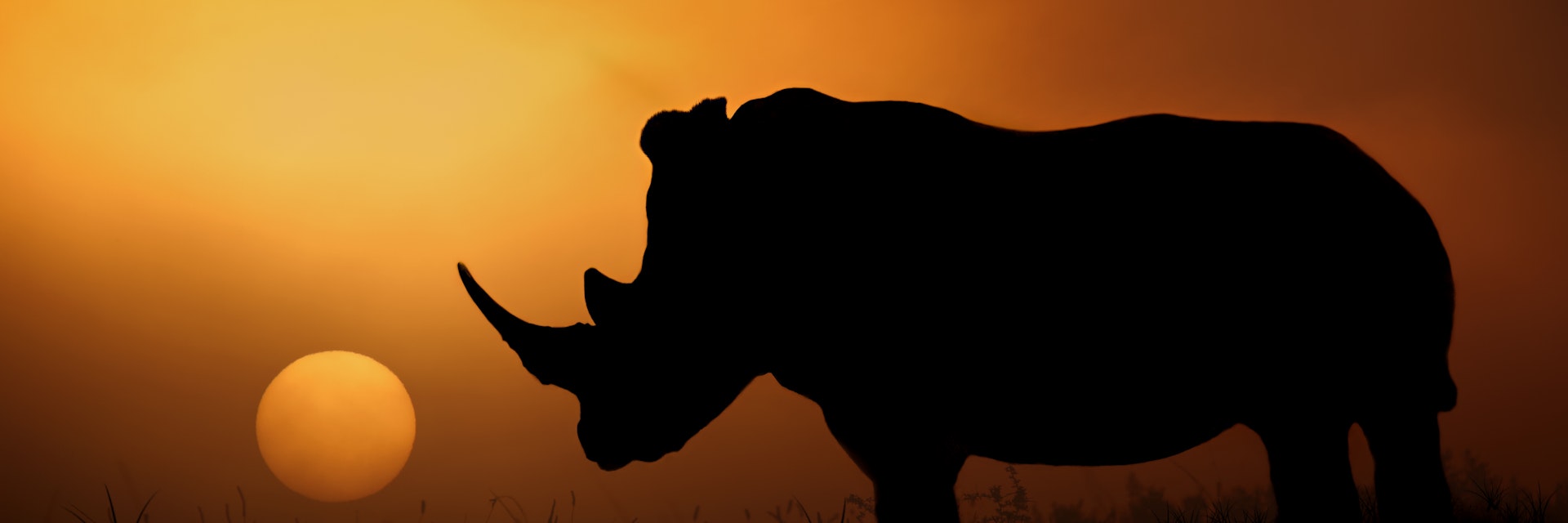
Kruger National Park
Kruger is one of the world's greatest wildlife-watching destinations. All of Africa's iconic safari species – elephant, lion, leopard, cheetah, rhino, buffalo, giraffe, hippo and zebra – share the bushveld with a supporting cast of 137 other mammals and over 500 varieties of bird.
Attractions
Must-see attractions.

Elephant Hall Museum
Even if you're not staying at Letaba Rest Camp, it's worth swinging by to check out this excellent museum. It has life-size skeletons and dozens of…
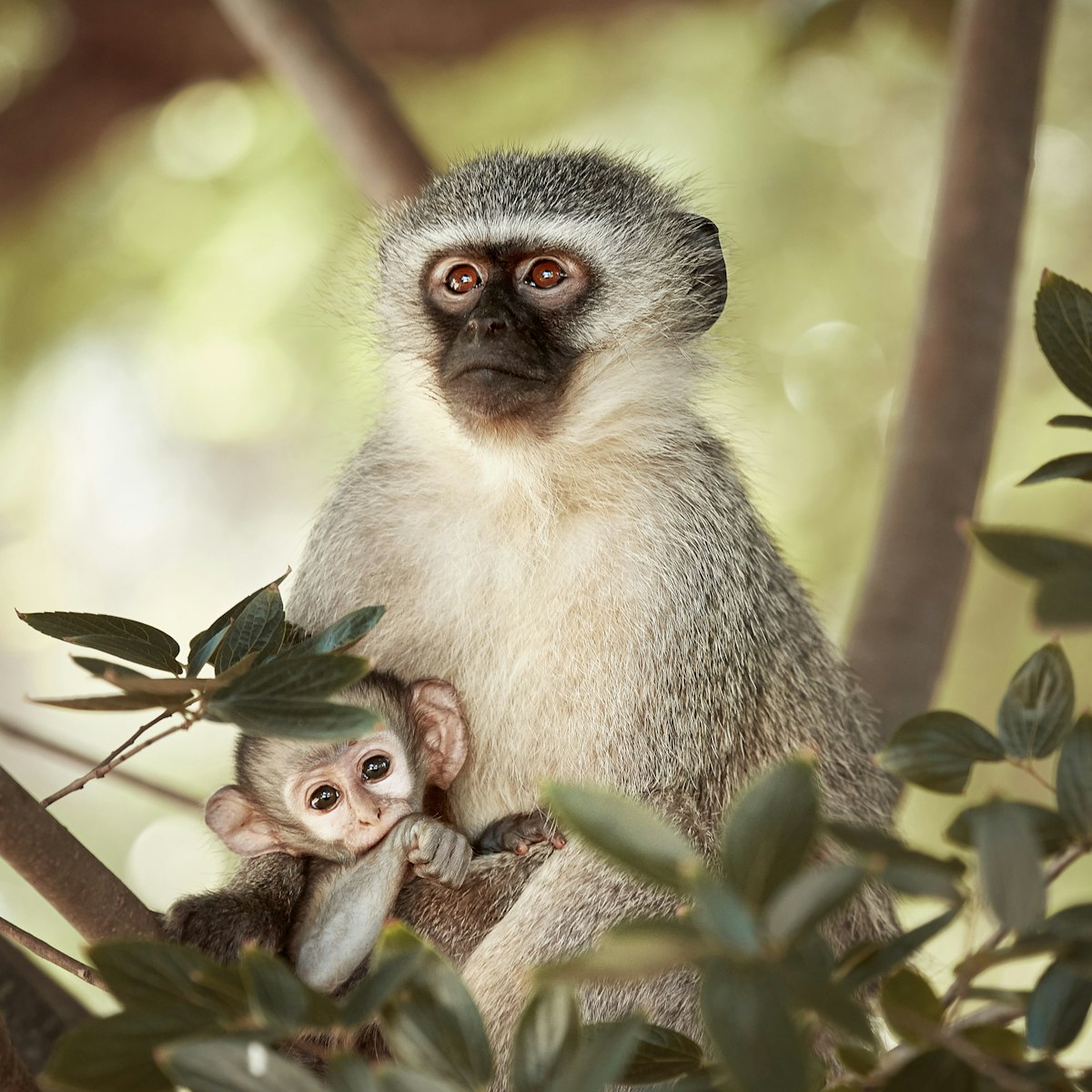
Sabi Sand Game Reserve
Within the borders of the large Sabi Sand Game Reserve are some of Southern Africa’s most luxurious safari lodges and the best wildlife watching on the…
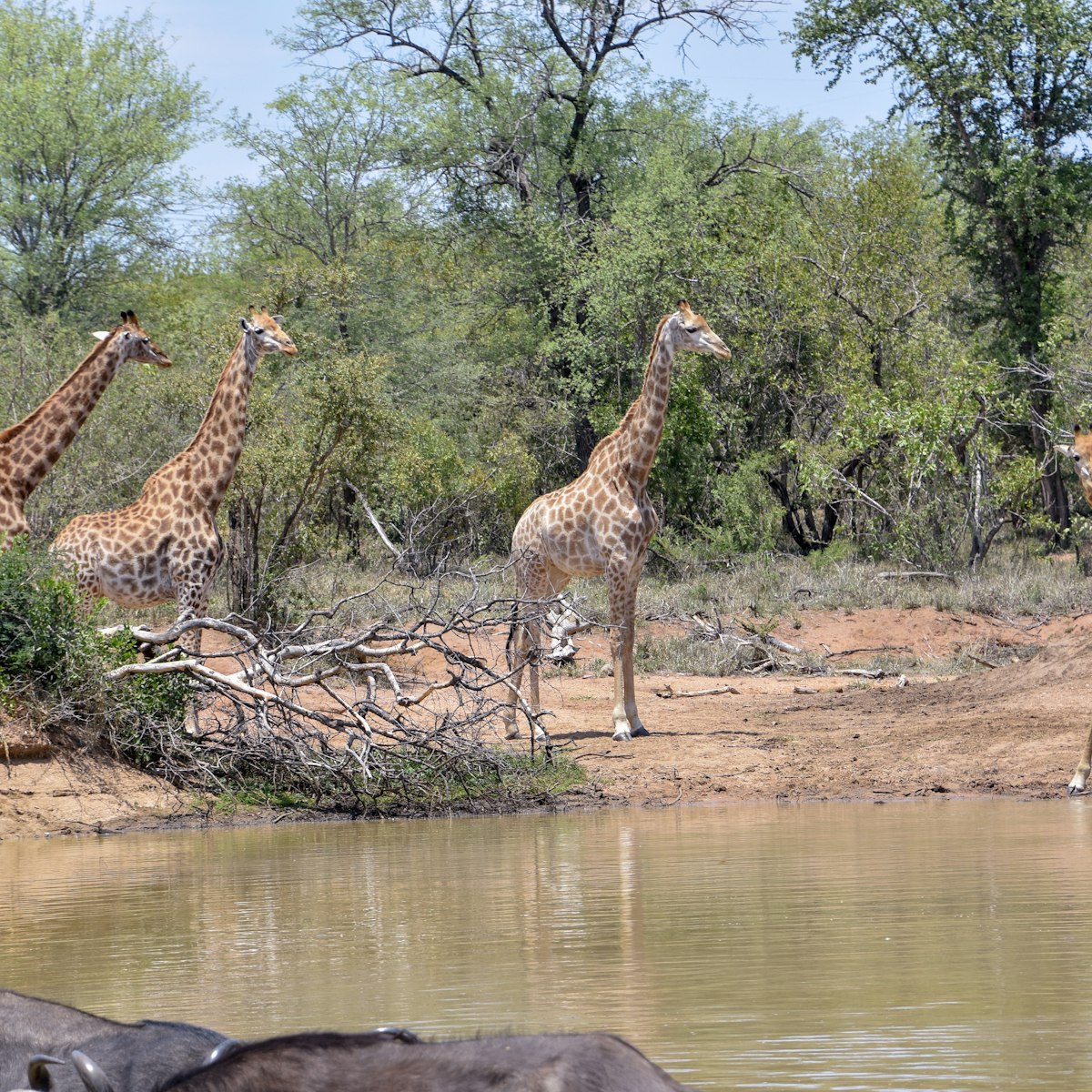
Kapama Private Game Reserve
With four luxury lodges and the Big Five in residence (as well as occasional passing wild dogs and great birding), 13,000-hectare Kapama gets all of the…
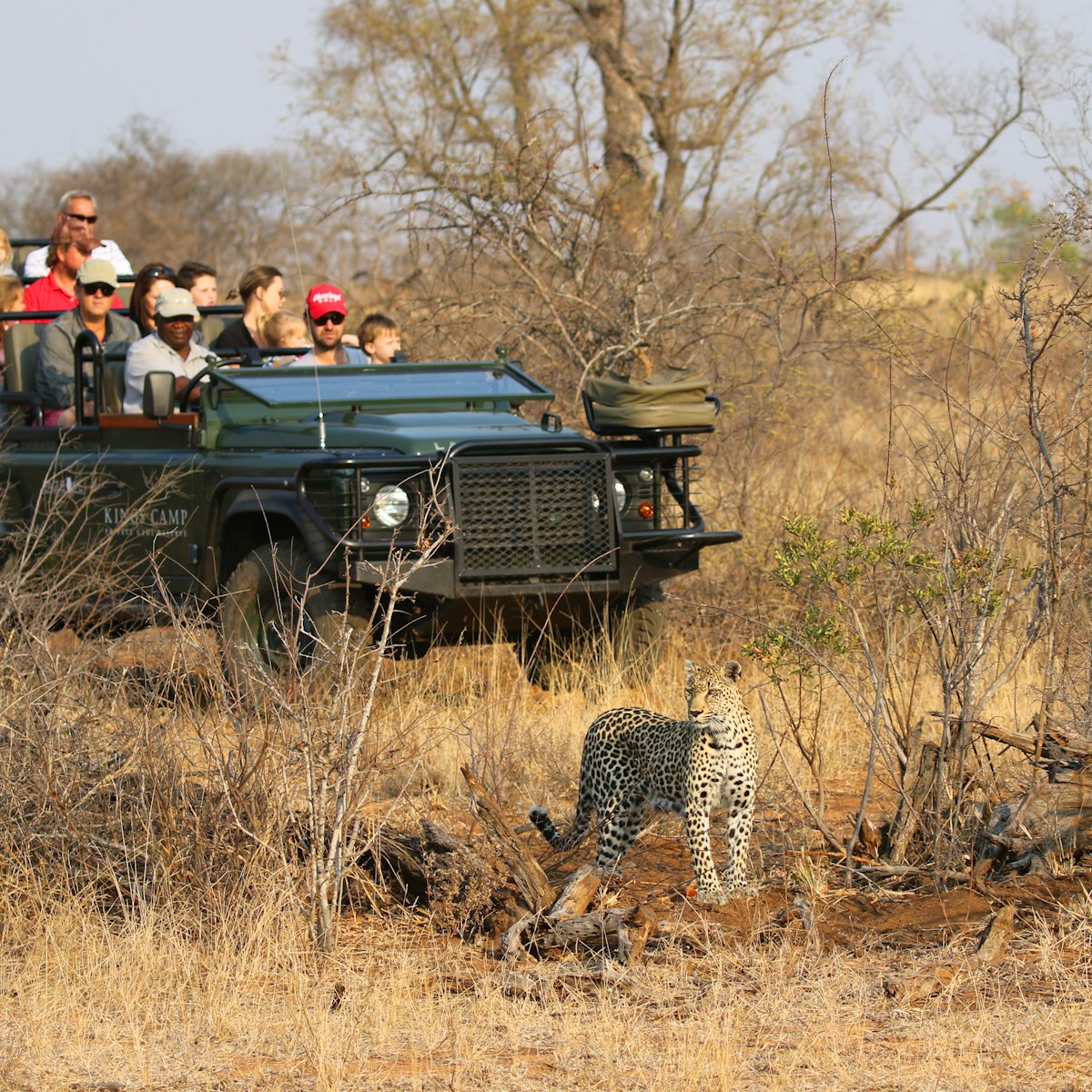
Timbavati Private Nature Reserve
Timbavati abuts Kruger National Park's western boundary and has an excellent mix of wildlife, conservation and good accommodation. Its accommodation…
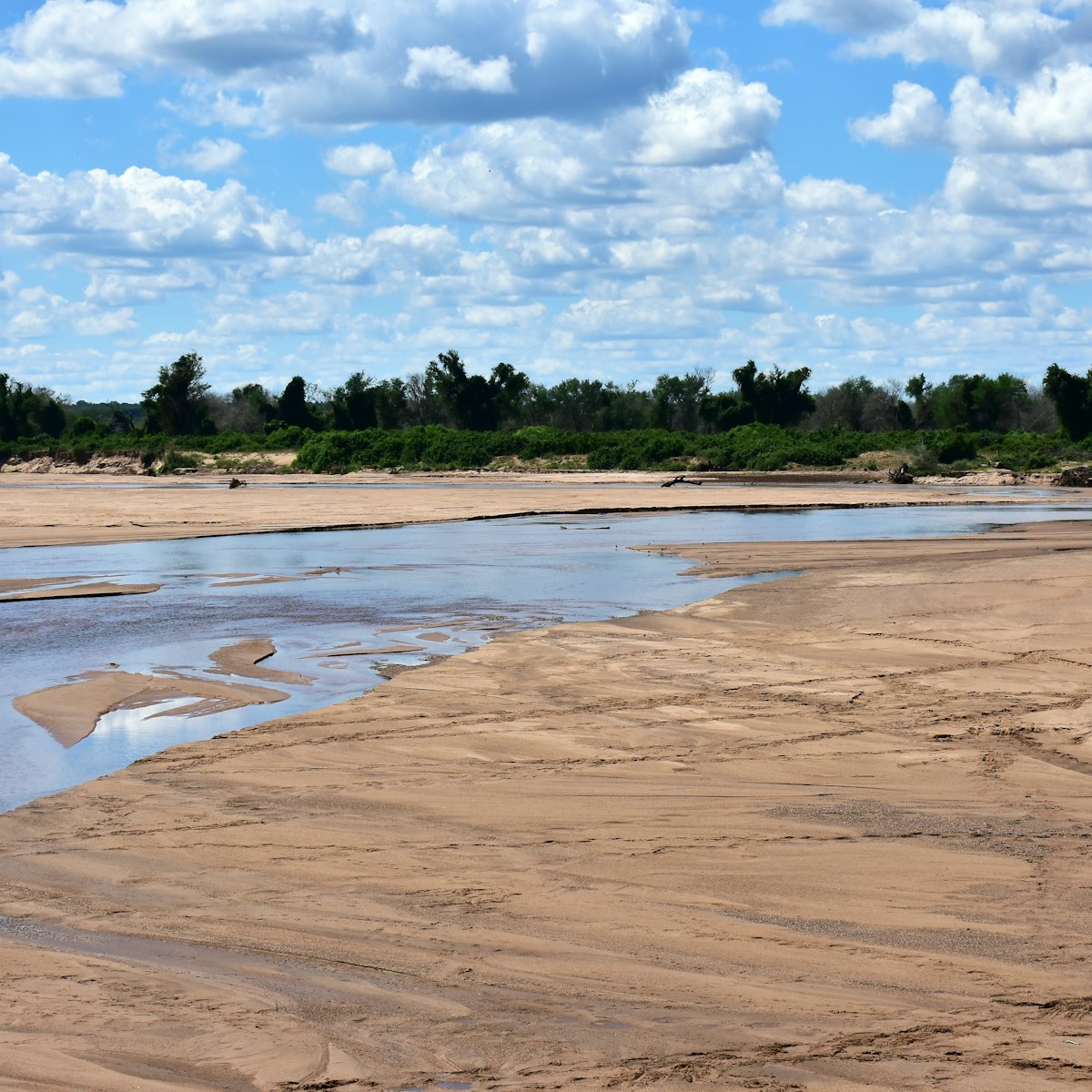
Crooks Corner
On the outskirts of a beautiful fever-tree forest, Crooks Corner marks not only the confluence of the Luvuvhu and Limpopo Rivers but also the historic…

Bobbejaankrans
This overlooks a section of the Timbavati River that animals often visit to slake their thirst. It's especially good early morning or late afternoon.

Renosterpan
This waterhole north of Berg-en-dal usually lives up to its name (renoster is rhino in Afrikaans). Late afternoon is best.

Klaserie Private Nature Reserve
A 600-sq-km (or 60,000 hectare) private wildlife reserve in the greater Kruger area, Klaserie has strong conservation credentials.
Plan with a local
Experience the real South Africa
Let a local expert craft your dream trip.
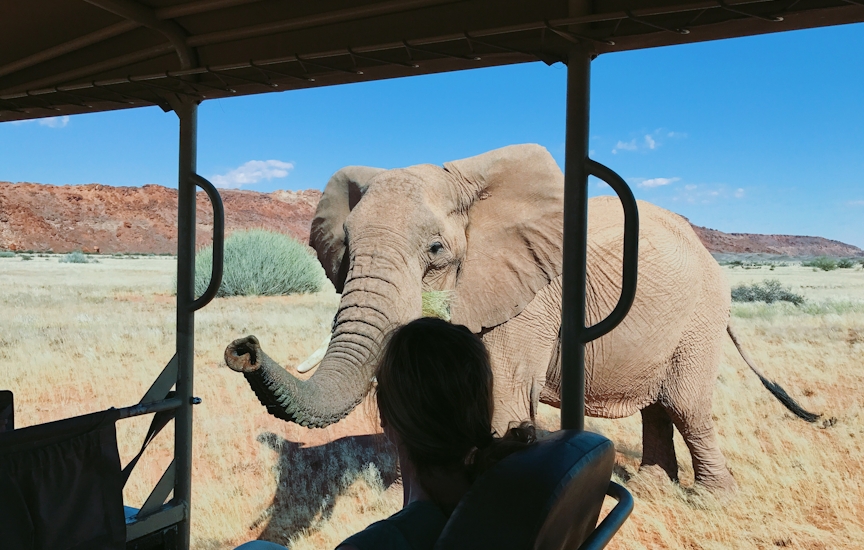
Latest stories from Kruger National Park
Filter by interest:
- All Interests
- Adventure Travel
- Art & Culture
- Beaches, Coasts & Islands
- Food & Drink
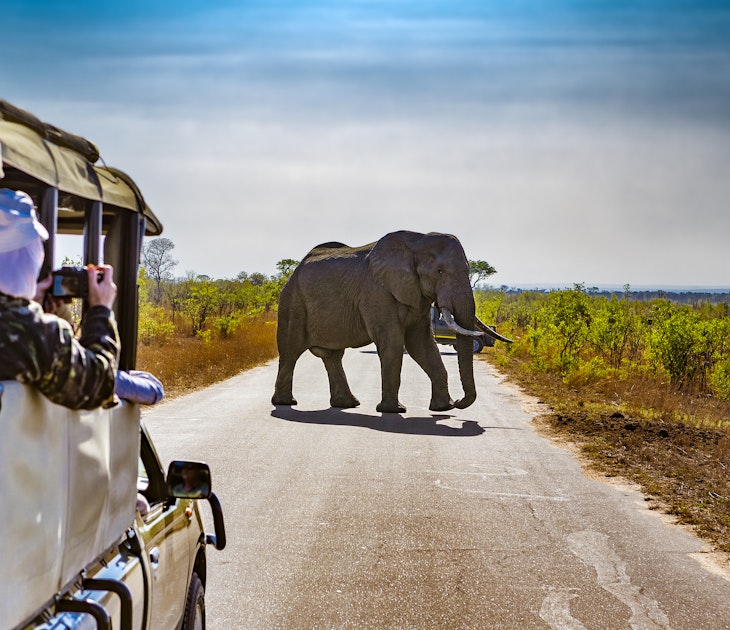
National Parks
Jan 5, 2022 • 8 min read
Preserving mountains, grasslands, beaches and deserts, South Africa's national parks are natural wonders. Here's a guide to South Africa's best reserves.
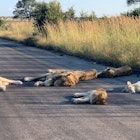
Apr 21, 2020 • 2 min read
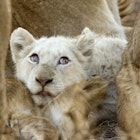
Sep 30, 2019 • 6 min read
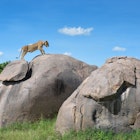
Jul 3, 2019 • 6 min read
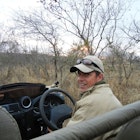
Jan 31, 2012 • 5 min read
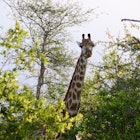
Jun 18, 2010 • 2 min read
Purchase our award-winning guidebooks
Get to the heart of Kruger National Park with one of our in-depth, award-winning guidebooks, covering maps, itineraries, and expert guidance.
- You are here:
- South Africa Tours
- All Kruger Tours
- 4-Day Kruger Tours
Your Safari
Tour length, rates in usd $ – change currency, starting from.
- Johannesburg (116)
- Cape Town (5)
- Hoedspruit (1)
- Port Elizabeth (0)
- Pretoria (1)
- Nairobi (0)
- Entebbe (0)
- Zanzibar (0)
- Dar es Salaam (0)
- Victoria Falls Town (0)
- Kampala (0)
- Windhoek (0)
- Addis Ababa (0)
- Livingstone (0)
- Mombasa (0)
- Antananarivo (0)
- Hazyview (0)
- Nelspruit (1)
- Upington (0)
- Blantyre (0)
- Diani Beach (0)
- Lilongwe (0)
- Nosy Be (0)
- Bujumbura (0)
Comfort Level
- Luxury+ (9)
- Luxury (23)
- Mid-range (69)
- Budget (24)
Private or Shared Tour
- Private tour (23)
- Shared tour (102)
Safari Type
- Lodge, tented camp or hotel (122)
- Camping (3)
Operator Rating
- & up (116)
Specialized Tours
- Fly-in safaris (6)
- Family (68)
- Beach time (0)
- Honeymoon (32)
- Gorilla trekking (0)
- Photographic safaris (1)
- Mountain climbing (0)
- Walking safaris (1)
- Self-drive (0)
- Guided self-drive (1)
- Chimp trekking (0)
- Overland tours (0)
- Cycling safaris (0)
- Canoe safaris (0)
- Horseback safaris (0)
- Birding tours (0)
- Accessible safaris (0)
- Golf & Wildlife (0)
Other Tour Features
- Airport transfer is included (125)
- Itinerary can be customized (37)
Filter by Operator
Filter by accommodation, operators from.
- South Africa (124)
- Tanzania (1)
- United Kingdom (1)
- United States (1)
- Australia (1)
- Belgium (0)
- Botswana (0)
- Comoros (0)
- Denmark (0)
- Ethiopia (0)
- Eswatini (0)
- Germany (0)
- Ireland (0)
- Lesotho (0)
- Madagascar (0)
- Mauritius (0)
- Mayotte (0)
- Mozambique (0)
- Namibia (0)
- Netherlands (0)
- New Zealand (0)
- Nigeria (0)
- Portugal (0)
- Reunion (0)
- Seychelles (0)
- Singapore (0)
- Switzerland (0)
- United Arab Emirates (0)
- Zimbabwe (0)
4-Day Kruger Safari Tours
Kruger National Park is Africa on a grand scale. It is South Africa’s largest national park, measuring 360km/224mi from north to south, and covering an area of 19,485km²/7,523mi². When it comes to the Big Five, it is the last place on earth where lion, leopard, elephant, rhino and buffalo still survive in their thousands. And the biodiversity doesn’t stop there. This vast mosaic of woodland, grassland and aquatic habitats is home to a full 150 mammal and 500-plus bird species. On a 4-day Kruger safari, you’ll get to experience some of this ecological diversity, and to enjoy the wildlife that inhabits it.
_1269_65856374115bf.480x240-35.jpg)
4-Day Ultra Luxury Radisson Kruger Safari
$894 pp (USD)
South Africa: Shared tour (max 10 people per vehicle) Luxury+ Hotel
You Visit: Johannesburg (Start) , Kruger NP, Panorama Route (Highlight) , Johannesburg Airport (End)
MoAfrika Tours Tour operator has an office in South Africa
4.9 /5 – 1215 Reviews

4-Day Encounter the Kruger Park Safari
$803 pp (USD)
South Africa: Shared tour (max 13 people per vehicle) Mid-range Lodge
You Visit: Johannesburg (Start) , Greater Kruger, Kruger NP, Blyde River Canyon (Panorama Route) , Johannesburg (End)
Explore Kruger Park Tour operator has an office in South Africa
5.0 /5 – 1 Reviews
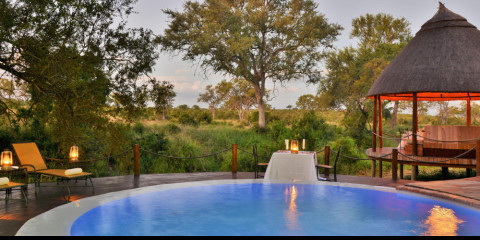
4-Day All-Inclusive Kruger Safari with Hoyo Hoyo
$1,500 pp (USD)
South Africa: Private tour Luxury Lodge
You Visit: Johannesburg (Start) , Kruger NP, Johannesburg (End)
Safari.com Tour operator has an office in South Africa
4.7 /5 – 186 Reviews

4-Day Classic Kruger Park Safari
$1,007 pp (USD)
South Africa: Shared tour (max 6 people per vehicle) Mid-range Lodge
Wildlife Safaris Tour operator has an office in South Africa
4.9 /5 – 264 Reviews
_2220_658d3d717fd8c.480x240-27.jpg)
4-Day Tremisana/Treehouse Kruger Park Safari
$836 pp (USD)
South Africa: Shared tour (max 9 people per vehicle) Mid-range Lodge
You Visit: Johannesburg (Start) , Balule NR (Greater Kruger) , Kruger NP, Blyde River Canyon (Panorama Route) , Johannesburg (End)
Viva Safaris Tour operator has an office in South Africa
4.9 /5 – 265 Reviews

4-Day South to Central Kruger National Park Safari
$1,018 to $1,139 pp (USD)
South Africa: Shared tour (max 6 people per vehicle) Luxury Lodge
You Visit: Johannesburg (Start) , Southern Kruger NP, Central Kruger NP, Johannesburg (End)
Balanta Imagine Safaris Tour operator has an office in South Africa

4-Day Private Game Reserve + National Park Safari
$1,270 pp (USD)
South Africa: Private tour Mid-range Lodge & Self Catering Accommodation
You Visit: Johannesburg (Start) , Hoedspruit (Town) , Kruger NP, Tshukudu GR, Johannesburg (End)
Khalanga Safaris Tour operator has an office in South Africa
5.0 /5 – 64 Reviews
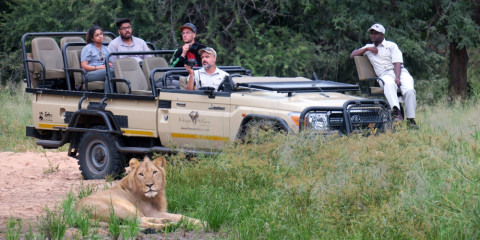
4-Day Kruger Park, Private Game Park & Canyon Explorer
$1,252 pp (USD)
South Africa: Shared tour (max 9 people per vehicle) Luxury Lodge
You Visit: Johannesburg (Start) , Hoedspruit (Town) , Central Kruger NP, Blyde River Canyon (Panorama Route) , O.R. Tambo Airport (Johannesburg) , Johannesburg (End)
Shinzelle Safaris Tour operator has an office in South Africa
4.9 /5 – 63 Reviews

4-Day Kruger Safari, Soweto & Apartheid Museum
$910 pp (USD)
South Africa: Private tour Mid-range Lodge & Tented Camp
You Visit: Johannesburg (Start) , Soweto (Johannesburg) , Kruger NP, Johannesburg Airport (End)
Nhlalala Travel Tour operator has an office in South Africa
4.9 /5 – 38 Reviews

4-Day & 3-Night Kruger National Park Budget Safari
$583 to $649 pp (USD)
South Africa: Shared tour (max 8 people per vehicle) Mid-range Guest House
You Visit: Johannesburg (Start) , Southern Kruger NP, Kruger NP, Johannesburg Airport (End)
The Mzansi Experience Tour operator has an office in South Africa
4.7 /5 – 64 Reviews

4-Day Luxury Mdluli Game Lodge Kruger National Park
Gems of Africa Safari and Tours Tour operator has an office in South Africa
4.9 /5 – 100 Reviews

4-Day Kruger National Park Train on the Bridge Safari
$2,100 to $2,452 pp (USD)
You Visit: Johannesburg (Start) , Kruger NP, Johannesburg Airport (End)
The Kruger Safari Co. Tour operator has an office in South Africa
5.0 /5 – 129 Reviews

4-Day Kruger National Park and Walking with Lion
$702 to $1,004 pp (USD)
South Africa: Shared tour (max 6 people per vehicle) Mid-range Hotel
You Visit: Johannesburg (Start) , Kruger NP, Pretoria (City) , Ukutula GR, Johannesburg (End)
Pure Diamond Tours and Safari Tour operator has an office in South Africa
Not yet rated

4-Day Kruger Park and Manyeleti Bongan African Lodge
$698 pp (USD)
South Africa: Shared tour (max 12 people per vehicle) Budget Lodge
You Visit: Johannesburg (Start) , Manyeleti GR (Greater Kruger) , Central Kruger NP, Johannesburg (End)
Bongan Safaris Tour operator has an office in South Africa
5.0 /5 – 22 Reviews
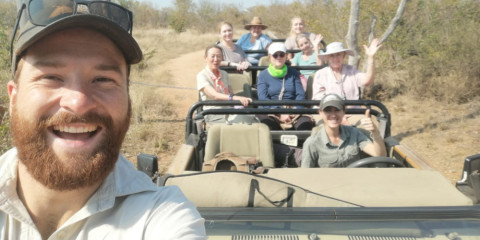
4-Day Orpen Gate to Letaba Camp- Tented Bushcamp Stay
$1,058 pp (USD)
South Africa: Shared tour (max 8 people per vehicle) Budget Tented Camp
You Visit: Hoedspruit (Start) , Balule NR (Greater Kruger) , Kruger NP, Hoedspruit (End)
Wildlife Encounters Tour operator has an office in South Africa
5.0 /5 – 20 Reviews
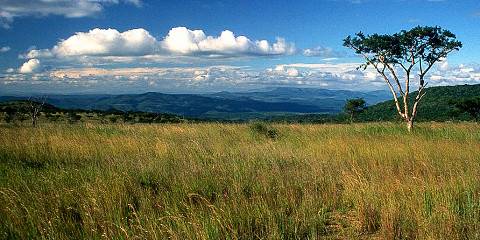
4-Day The Greater Kruger Tshukudu Safari
$1,515 pp (USD)
South Africa: Private tour Mid-range Lodge
You Visit: Johannesburg (Start) , Tshukudu GR, Kruger NP, O.R. Tambo Airport (Johannesburg) , Johannesburg (End)

4.7 /5 – 155 Reviews

4-Day Kruger Park Tented Camp Safari – Nkambeni
$807 pp (USD)
South Africa: Shared tour (max 10 people per vehicle) Mid-range Tented Camp
You Visit: Johannesburg (Start) , Kruger NP, Panorama Route (Highlight) , Johannesburg (End)
Safari With Us Tour operator has an office in South Africa
5.0 /5 – 219 Reviews

4-Day Encounter the Kruger Park Safari & Panorama Route
$643 pp (USD)
South Africa: Shared tour (max 8 people per vehicle) Mid-range Lodge
You Visit: Johannesburg (Start) , Kruger NP, Panorama Route (Highlight) , Blyde River Canyon (Panorama Route) , Johannesburg (End)
African Welcome Safaris Tour operator has an office in South Africa
5.0 /5 – 233 Reviews

4-Day Kruger and Panorama Lux Safari at Budget Price
$1,110 to $1,230 pp (USD)
You Visit: Johannesburg (Start) , Hoedspruit (Town) , Kruger NP, Panorama Route (Highlight) , Johannesburg Airport (End)
Wild Planet Safari Tour operator has an office in South Africa
4.9 /5 – 206 Reviews
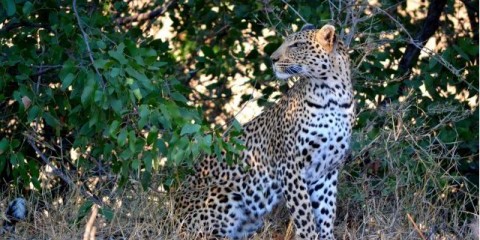
4-Day Incredible Private Safari Inside the Kruger Park
$1,483 pp (USD)
South Africa: Private tour Mid-range Bungalow
Endless Summer Tours Tour operator has an office in South Africa
5.0 /5 – 65 Reviews
Related Searches
- Kruger Tours
- 4-Day Safari Packages
- 3-Day Kruger Packages
- Cape Town and Kruger Tours
- 7-Day Kruger Safaris From Johannesburg
- Kruger Tours for Families
- Kruger Mid-range Safaris
- Kruger Camping Safaris
- 4-Day Sabi Sands Tours
- Four Day Kruger Safaris From Johannesburg
- 4-Day Pilanesberg Safaris
- 6-Day Kruger Tours
6 Questions About 4-Day Kruger Safaris

Answered by
Philip briggs.

Is 4 days a good amount of time for a trip in Kruger National Park?
“Yes it is. In the context of a general tour of South Africa, many people would feel that 4 days is the perfect duration for a Kruger safari. It’s long enough that you’ll experience a fair representation of Kruger’s landscapes, and stand a good chance of seeing all the Big Five. But 4 days in Kruger still also leaves time to visit some of this diverse country’s other highlights. Having said that, Kruger is a vast place, so if you have a deep passion for wildlife, or really enjoy being out in the African bush, you’d be unlikely to regret dedicating more than 4 days to a safari.”
How do I avoid the crowds in the park?
“If avoiding crowds is high on your list of priorities, stay away from Kruger’s popular southern sector. This is best achieved by focusing on central Kruger, or by booking into a concession lodge within the national park, or by visiting a private reserve bordering it. Southern Kruger – essentially, the sector south of the Sabie River – owes its popularity to several factors. These include its high concentration of rest camps, reliably good wildlife viewing, relative proximity to Johannesburg, and convenience for day visitors. Visitor densities are high throughout southern Kruger, but especially on roads around Skukuza (the largest rest camp). And it can be hectic over long weekends and domestic school holidays. Central Kruger, which runs from the Sabie River north to the Letaba River, has a thinner spread of rest camps, and it’s less convenient for day-trippers. Yet it doesn’t lag too far behind the south when it comes to wildlife viewing (in fact, it’s probably better for cheetah and lion sightings), which makes it a great option for avoiding the crowds. Look at a map of Kruger, and you’ll see even fewer rest camps north of the Letaba River. Unfortunately, however, wildlife viewing in this vast (and very uncrowded) tract of northern wilderness is very erratic. Although it’s a relatively costly option, an all-inclusive guided safari to a concession lodge within the park, or to a private reserve bordering Kruger, guarantees you’ll get away from the crowds.”
What are the accommodation options?
“Accommodation options on a 4-day Kruger tour range from no-frills camping in national park rest camps to five-star luxury lodges. Where exactly on this scale you end up will depend greatly on what you pay. Many Kruger safaris stay outside the park. There’s no shortage of accommodation close to the main entrance gates, or in nearby towns such as Mbombela, Hazyview and White River. Accommodation exists to suit most tastes and budgets, from unpretentious backpacker lodges to swish boutique properties. For most South Africans, however, visiting Kruger is synonymous with staying at a rest camp inside the park. In most cases, these rest camps have campsites, as well as a range of comfortable no-frills bungalows, some using communal ablution blocks and others with en suite facilities. The larger rest camps have restaurants, but if you want to do as the locals do, you’ll probably prefer to barbecue outside your tent or bungalow. Staying at rest camps, you get to experience the bush at night, and are well placed for early morning game drives. The most luxurious option is an all-inclusive package at one of the upmarket concession lodges that lie within Kruger or in the various private reserves that form part of the same unfenced ecosystem. These lodges offer top-notch wildlife viewing on guided game drives through exclusive concessions or private land that’s closed to the public. Decor, service and cuisine are generally befitting of a five-star property.”
Which animals am I likely to see on a 4-day Kruger safari?
“You can expect to see a wide variety of iconic safari animals over the course of 4 days in Kruger. Certainties, unless you are incredibly unlucky, include elephant, buffalo, hippo, giraffe, zebra, wildebeest, greater kudu, impala and warthog. It’s almost as certain you’ll see some of the park’s larger predators, a list that includes lion, leopard, cheetah, spotted hyena, black-backed jackal and African wild dog, but you’d be very lucky indeed to see them all. Odds of seeing white rhino are better than even over 4 days, but few visitors get to see the more secretive black rhino. Kruger’s reptiles range from fearsomely toothy Nile crocodiles to the mosquito-snaffling geckos that dart up and down rest camp walls at night. How many of Kruger’s 500-odd bird species you’ll see over the course of a 4-day safari will depend greatly on how closely you’re looking, but it wouldn’t be difficult to tick off 100 species. Conspicuous avian highlights include the dazzling lilac-breasted roller, the comical yellow-billed hornbill and the flightless ostrich, the world’s largest bird.”
What is the best time of the year for a Kruger trip?
“The best time to visit Kruger is generally during the winter months of May to September. There are several reasons for this. First and foremost, wildlife viewing is better in these dry months, since the thinner vegetation allows you to see deeper into the bush, and animals tend to congregate near dams and rivers. Climatically, all but the most eager of heat worshippers will find temperatures more comfortable in winter than in summer. There’s also a far lower chance of game drives being spoiled by rainstorms. And dry conditions mean far fewer mosquitoes, which greatly reduces the risk of being exposed to malaria. There are also advantages to visiting in the summer months of October to April. The countryside is much more green and photogenic during the rains. Official wildlife viewing hours, being dictated by season, are far longer. It is also when many animals give birth, so you’ll see plenty of foals, calves, pups and cubs. And the birdlife is absolutely stunning in summer, thanks to the arrival of a host of colorful migrants from Europe, Asia and tropical Africa.”
How much will a 4-day Kruger safari cost?
“The price of a 4-day Kruger safari can vary from US$800 to US$2,000 per person, depending on several variables, notably the standard and location of your accommodation. Camping is a lot cheaper than staying in a rest camp bungalow or a mid-range lodge, which in turn is less costly than a luxury private reserve or concession lodge. Another factor is whether the itinerary includes a day exploring the waterfalls and viewpoints of the Panorama Route. This cost-cutter is a popular, scenic and thoroughly worthwhile add-on, but its inclusion on a 4-day itinerary does mean you’ll have 1 day less on safari. Typically, a budget 4-day Kruger safari costs around US$800 to US$900 per person, while mid-range options are in the US$1,000-to-US$1,200 range. Tours that include a stay in a luxury concession lodge or private reserve are US$1,500 to US$2,000 and upwards. If you want to keep costs down, you could consider a self-drive safari to Kruger. You probably won’t see as much wildlife as you would on a guided tour, but self-driving does allow you to travel and absorb the bush atmosphere at your own pace.”
Kruger Reviews

Mike is an award-winning wildlife writer, former editor of Travel Zambia magazine and author of the Bradt Guide to Southern African Wildlife.
Africa’s Best DIY Safari
South Africa’s premier wildlife reserve divides opinion. Some who’ve visited supposedly ‘wilder’ parks argue that the Kruger’s developed infrastructure, complete with paved roads and large public camps, undermines the wilderness...
Full Review

Lizzie is a reputed guidebook writer and author of the Footprint guides to South Africa, Namibia, Kenya, Tanzania, Uganda and Zimbabwe.
South Africa’s flagship park with excellent facilities and unrivalled game-viewing
South Africa’s largest park most certainly fulfils most visitors’ expectations of seeing magnificent herds of game roaming across acacia-studded savannah. After countless visits at different times of the year, I have found it can get a...
The parks we visited during our stay were varied. The first evening safari we didn’t see the animals we hoped. However the full day drive the following day made up for this. We saw everything we hoped to, mainly the Hippis and Giraffes....
It is everything that thousands of others have experienced. It is soo big that it would take weeks to discover each region, but we were thankful for seeing the best that we could in a limited timeframe.
Brilliant glamping experience. The safari tour guide was knowledgeable and we managed to spot the animals. The glamping staff were friendly and they kept the facilities clean. This was a girls trip and we felt safe throughout our stay....

Once in a life time unforgetable experiance . All staff members were very helpful +HIGHLY capiable.
Viva Safaris kept to their programme, Bushwalk, Great Kruger Safaris with very well trained, friendly guides, Sunrise and Sundown safaris (Bush Braai was unbelievable crowned with an Amarula Liquer Toast). The safari jeeps accomodated very...
TOP DESTINATIONS
- Kruger Park
- Okavango Delta
- Serengeti National Park
- Victoria Falls
TOP COUNTRIES
- South Africa
TRAVEL DEALS
View All Travel Deals
SOUTHERN AFRICA
East africa, indian ocean islands, top experiences.
- Beach Holidays
- Family Safaris
- Honeymoon Safaris
- Desert Safaris
- Luxury Rail Safaris
- Multi-Generational Safaris
- Positive Impact Safaris
- Photographic Safaris
- Walking Safaris
WILDLIFE SAFARI
- Big Five Safaris
- Birding Safaris
- Gorilla Trekking Safaris
- Migration Safaris
- Mobile Camping Safaris
- Horseback Safaris
FEATURED EXPERIENCES
Comfort levels, property types.
- Tented Camps
- Boutique Hotels
Featured Safari Collections
- Ker & Downey Botswana
- African Bush Camps
- Newmark Hotels
GET TO KNOW US
- Meet The Team
- Pricing Explained
- Traveller Reviews
- Traveller Stories
- Why Book With Us?
- HerdTracker
- Safari Cost Calculator
- South Africa In 360
- Trusted Safari Partners
What are you looking for?
- Safaris & Tours
- Destinations
- Experiences
- Accommodations
- Why book with us?
Hello traveller!
It's in Cape Town now.
We're sorry. Our safari planners aren't available now. Our office hours are 08:00 - 19:00 (GMT+2).
Call us to speak to an experienced safari planner.
Alternatively, we recommend...
Schedule a phone or Zoom call with one of our safari planners
Complete our travel enquiry form to connect with a safari planner
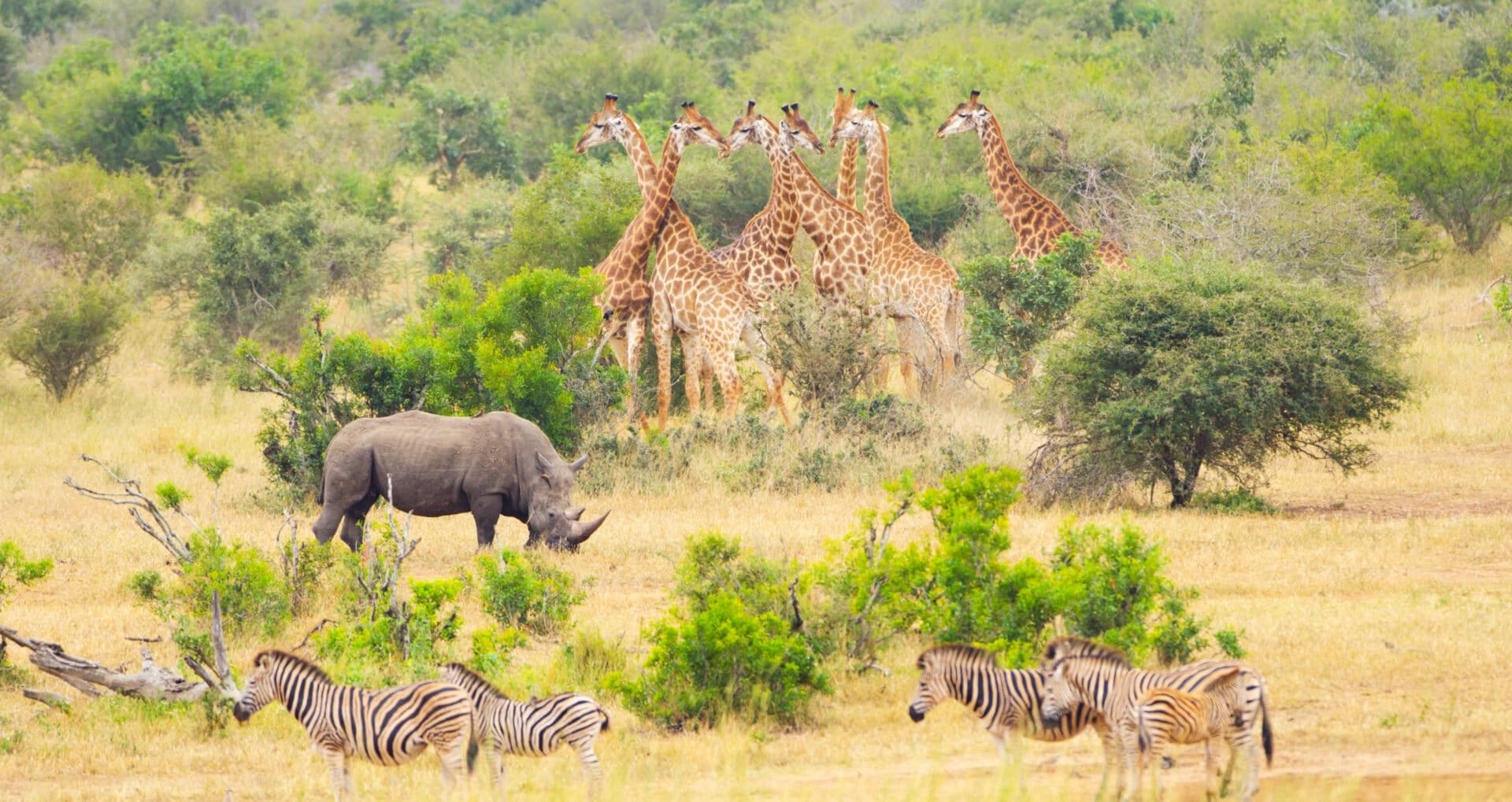
- Kruger National Park
Africa's best authentic tailor-made safaris

By Andre Van Kets
Co-founder, Discover Africa
Extending over a mind-boggling 19,485 km2 (7,523 square miles), the Kruger National Park is one of Africa’s largest and most iconic safari destinations. It’s comparable in area to Wales or the state of New Jersey.
It shares open borders with several smaller private reserves as well as two transfrontier national parks in the form of Gonarezhou (Zimbabwe) and Limpopo (Mozambique).
Kruger National Park vies with Cape Town as South Africa’s top destination, attracting more than one million visitors annually. The park is better suited to affordable self-drive safaris than any other major African park.
By contrast, the exclusive private reserves that border Kruger and ‘concession lodges’ that occupy exclusive enclaves within it set the bar for all-inclusive luxury safaris in open-top 4×4 vehicles driven by expert guides.
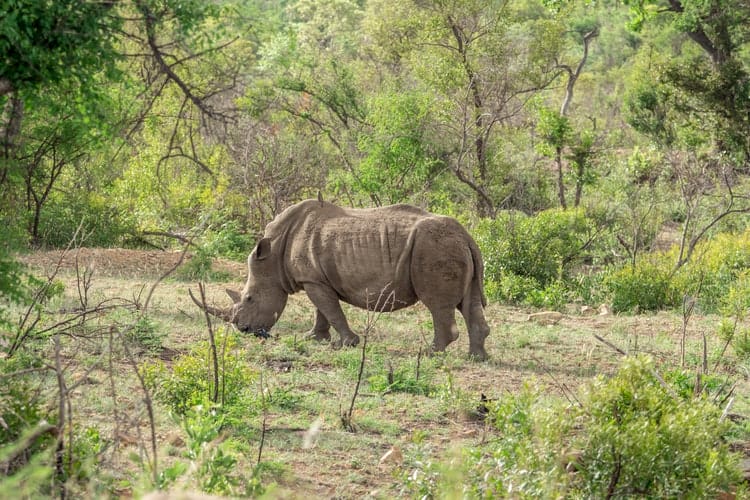
Set in the hot eastern Lowveld, Kruger is traversed by several rivers and is punctuated by a few hilly areas. Still, it mostly comprises flat savannah dominated by acacia trees in the south and mopane woodland in the north.
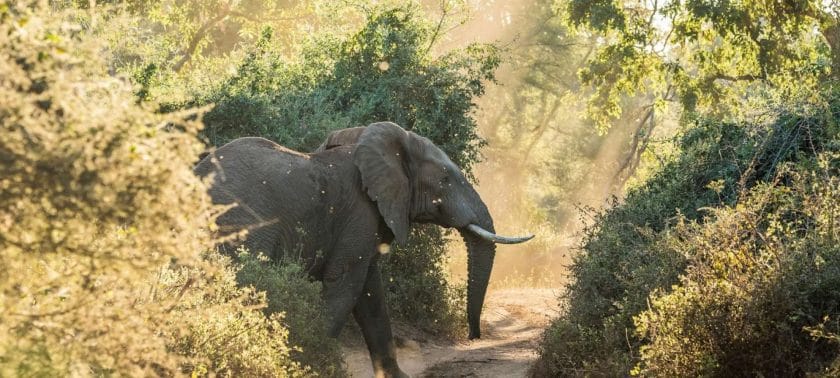
Kruger National Park Parfuri ElephantThe Nile crocodile is the most conspicuous of 114 reptile and 34 amphibian species, but the ethereal communal calls of the Bubbling kassina and other tree frogs often provide a haunting aural backdrop to dusk waterhole vigils.
Kruger is a magnet for birding safaris , with 517 bird species recorded. Expect everything ranging from the spectacularly colorful Lilac-breasted roller and White-fronted bee-eater to several heftier species now rare outside of protected areas, such as the eyelid-fluttering Southern ground hornbill, the bizarre Secretary-bird, the massive Kori bustard (the world’s heaviest flying bird), the macabre Marabou stork, and, of course, the ostrich.
Highlights of Kruger National Park
Southern Kruger
Thanks to its relative proximity to Gauteng, Southern Kruger carries the highest volume of safari-goers.
The far south offers the park’s most reliable game viewing: the surfaced H4-1 that follows the Sabie River from Skukuza to Lower Sabie, a great area to spot elephant, buffalo, lion, and even leopards.
It’s also a favorite for birding safaris , while the H4-2 and associated dirt roads running south to Crocodile Bridge explore the park’s best rhino country.
Central Kruger
The focal point of the lightly-wooded savannah of Central Kruger, Satara, stands at the crossroads of some superb safari roads.
Seasonal concentrations of wildebeest and zebra are reminiscent of the Serengeti, and it’s the best place to look for cheetahs and see lion kills – the latter also often attracting jackals and hyenas.
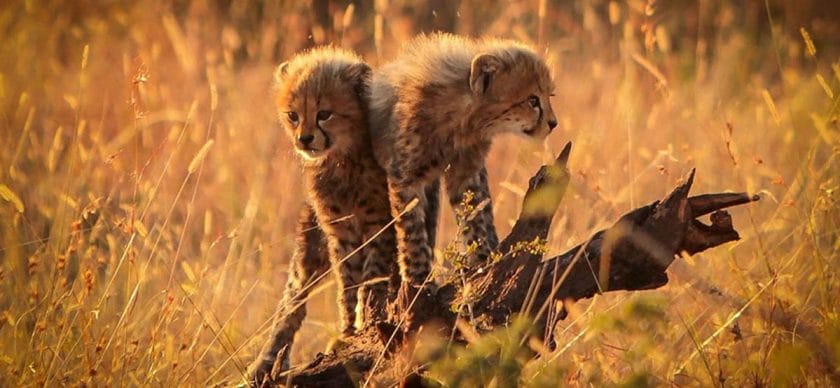
The aptly-named Olifants River is a favored haunt of elephants, and it also often attracts immense herds of thirsty buffalo.
Northern Kruger
Wildlife viewing in the remote Northern Kruger is challenging because while buffalo and elephants are conspicuous, lions, leopards, and rhino encounters are rare.
Balanced against that, the untrammeled north possesses a mesmerizing wilderness feel and hosts many localized bird species absent further south, making the Northern Kruger a perfect destination for a birding safari .
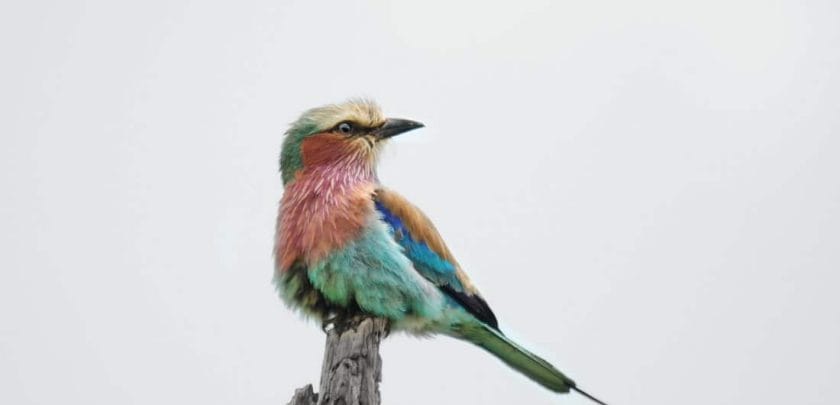
Thulamela Heritage Site, on the south bank of the Luvuvhu River, protects the substantial ruins of a 16th-century Zimbabwe-style stone-wall royal village.
Makuleke Contractual Park
The 240km2 (93 square mile) Makuleke Contractual Park, which runs south from the Limpopo River along the border with Zimbabwe, was annexed to Kruger following the forcible relocation of its inhabitants in 1969.
Restored to the Makuleke community in the 1990s, it’s still managed as part of Kruger and hosts two private lodges that offer much to keen birdwatchers or anybody seeking a genuine wilderness escape.
An excellent place to seek out the likes of Pel’s fishing owl, Racket-tailed roller, and Triple-banded courser, it also offers exclusive access to the spectacular Lanner Gorge and lush Fever tree forest at Crooks Corner.
Sabi Sands Game Reserve
Home to some of South Africa’s most lauded game lodges, the Sabi Sand Reserve was amalgamated from several now jointly-managed private properties in 1948.
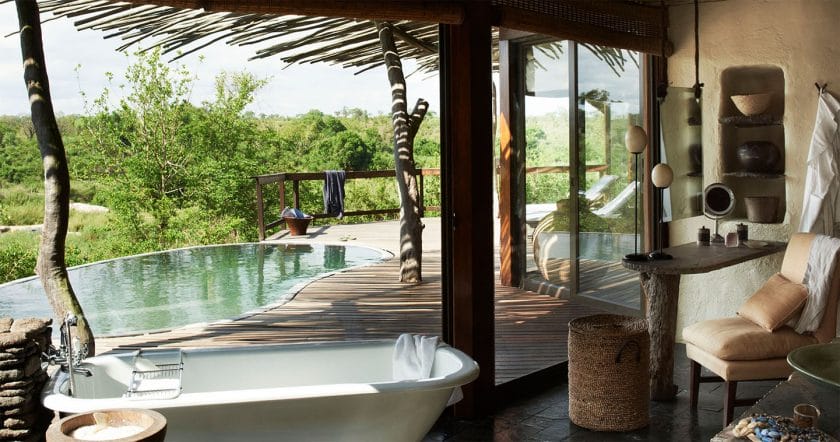
It shares an open boundary with southern Kruger, and expertly guided game drives in open-top 4×4 vehicles often throw up all the Big Five on safari , as well as cheetah and African wild dogs. The reserve also arguably offers the world’s best and most intimate leopard viewing.
Manyeleti Game Reserve
Immediately north of Sabi Sand, Manyeleti Game Reserve , whose Shangaan name means ‘Place of Stars,’ was set aside in 1964 and now shares an unfenced 30km (19mi) eastern border with Kruger and supports a similar selection of wildlife.
However, poaching and low tourist volumes mean that game viewing on safari isn’t quite up there with several of its neighbors.
Timbavati Nature Reserve
Named after the seasonal river that flows close to its southern boundary before crossing into Kruger, the private Timbavati Nature Reserve , created in 1962, and now unfenced along its border with Kruger, operates similarly to Sabi Sand.
Game drives don’t quite match up when it comes to leopard and rhino safari sightings, but since camps are more spread out, they tend to operate at a more relaxed pace.
Private Concession Lodges
The Kruger’s dozen-or-so privately-run concession lodges stand on individual enclaves of national parkland where exclusive traversing rights have been awarded to the concessionaire.
Much like the private reserves bordering Kruger, each concession hosts between one and three exclusive small camps offering guests a deluxe package, including expertly guided safari game drives in open-top 4x4s.
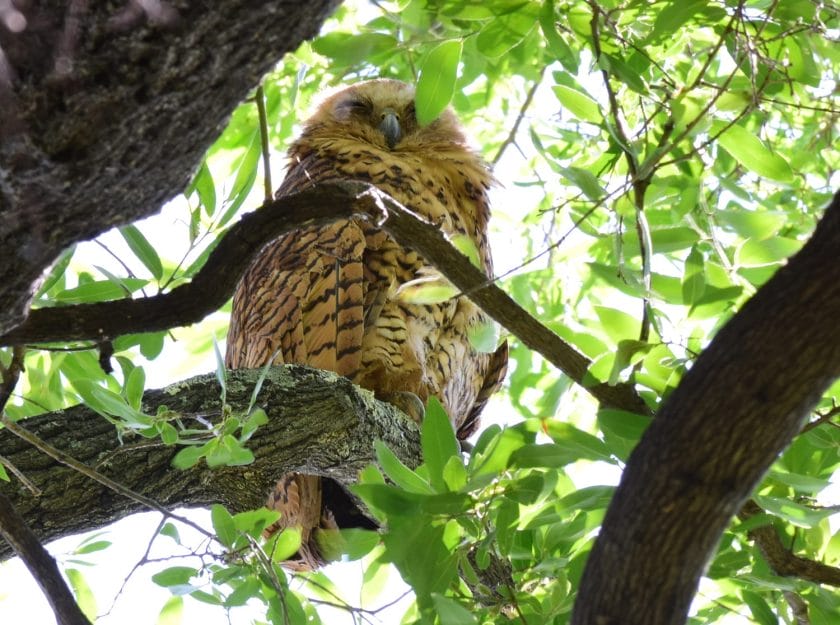
However, the concessions are typically much larger than the private reserves, wildlife is less habituated to vehicles, and there is no cross-traversing with other lodges – the net result being that game viewing tends to be more erratic. Still, the overall experience is arguably more holistically satisfying.
Practical Information of Kruger National Park
- Kruger is well-suited to affordable self-drive safaris. An ordinary saloon car can easily explore a good network of sealed roads. The 20-odd rest camps offer inexpensive but comfortable accommodation , and most have grocery shops, filling stations, and restaurants.
- In addition, an excellent selection of maps, guidebooks, and other interpretive material is available on-site.
- Kruger-Mpumalanga International Airport (KMIA) lies within an hour’s drive of Numbi and Phabeni Gates. It’s connected to Gauteng’s OR Tambo International Airport by several scheduled flights daily, and several car rental companies are represented there. For couples or families, it may be more affordable to rent a car out of Gauteng and drive, following the N4 east from Pretoria to Mbombela or the N12 from Johannesburg/OR Tambo to connect with the N4 at eMalahleni (formerly Witbank). Allow five hours for the drive.
- The private and concession lodges associated with Kruger offer a very different and somewhat more costly experience. Most exude an aura of safari chic, pamper clients with gourmet meals and service levels in line with a luxury spa, and include a guided evening and morning game drive. These lodges are typically visited as a two- or three-night all-inclusive fly-in or drive-down package from Gauteng.
- You could also tag one night at a private reserve to the end of a self-drive Kruger safari – though be sure to time things so that you arrive at camp in time and leave late enough to do all game drives.
- Kruger is hot and seasonally humid, with summer daytime temperatures routinely topping the 30°C/86°F mark (frequently 40°C/104°F in the north). The air dries out in winter when nights can be freezing, and you’ll want plenty of warm clothing for evening and early morning game drives.
How it Works
View our recommended safaris for inspiration and get ready to plan your dream safari
Contact us or fill out an enquiry form and one of our travel experts will help you tailor make your perfect safari
Enjoy an authentic African experience.
Travel with Confidence
With over 20 years of experience, our team will help you tailor your itinerary to your perfect adventure., 24/7 support, personalized, popular south africa safaris, these recommended tours for south africa can be tailor-made to match your budget..
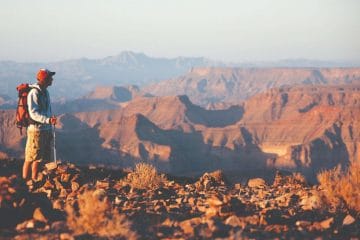
South Africa and Namibia Self-drive Adventure
South Africa Cape Town Namibia Fish River Canyon Sossusvlei Swakopmund
From $ 2200 /USD
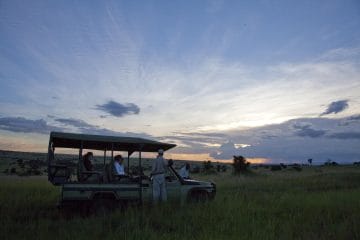
Best of Africa
Botswana Okavango Delta South Africa Johannesburg Kenya Nairobi
From $ 19690 /USD
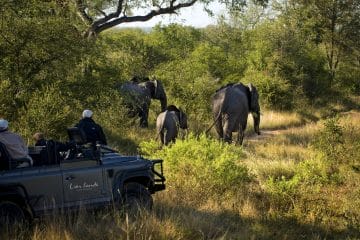
Luxury Highlights Cape Town, Kruger and Victori...
Southern Africa South Africa Cape Town Kruger National Park Zimbabwe Victoria Falls
From $ 6280 /USD
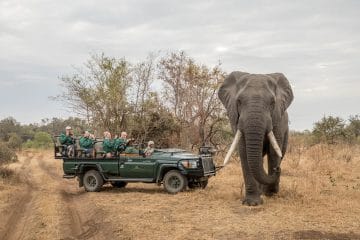
Affordable Greater Kruger Safari Combo
Southern Africa South Africa Timbavati
From $ 1900 /USD
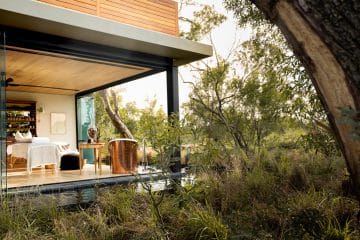
Cosmopolitan Cape Town and Greater Kruger Safari
Southern Africa South Africa Cape Town Kruger National Park Thornybush Johannesburg
From $ 8200 /USD
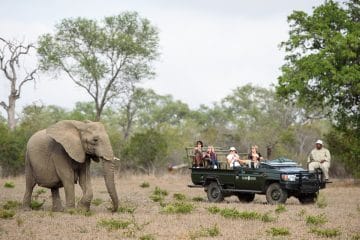
Sabi Fly-in Safari
Southern Africa South Africa Sabi Sands
From $ 3540 /USD
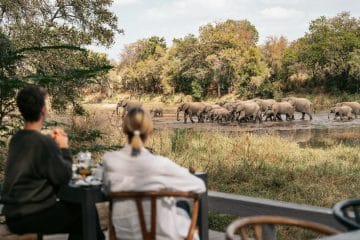
51 South Africa Safaris to choose from
Stay for 3 - 18 days
Experience our Tailor-made Tours in South Africa
Our recommended tours in south africa.
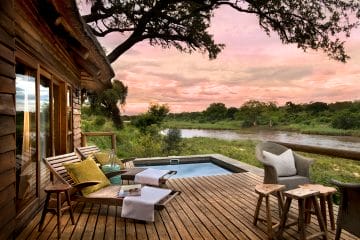
Best of South Africa and Botswana Safari
Southern Africa South Africa Cape Town Kruger National Park Johannesburg Botswana
From $ 7450 /USD
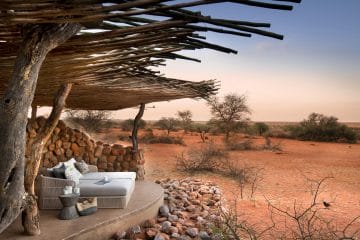
Bespoke Luxury Safari in South Africa
South Africa Cape Town Johannesburg Kruger National Park
From $ 13100 /USD
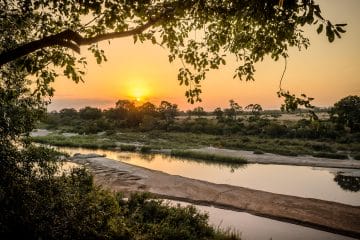
A grandiose journey through Cape Town, the Wine...
South Africa Cape Town Franschhoek Sabi Sands
From $ 14000 /USD
Why travel with us?
Recent reviews from travellers who planned and booked their africa trips with discover africa safaris, quick to respond and easy to talk with.
Botswana and Zimbabwe Safari Review
Riley, Canada 26 Aug 2022
Susan at discover africa arranged an excellent tour for us.
&Beyond Camps Review
Kamcilla, Monaco 17 Feb 2022
Very good price/quality rate. every detail well organised. we will surely book....
Botswana & Vic Falls Safari Review
Berta, Portugal 06 Jan 2022
Antoinette was a competent, experienced, and well informed tour operator..
Okavango Delta & Vic Falls Safari
Darron and Mary, United States 11 Aug 2021
Extreme experience.
Big Cat Kruger National Park Review
Darrh and Helene, United States 19 Oct 2019
Planned and executed well to the last detail..
Family Safari Review
Kathleen, United States 20 Aug 2018
Ready to plan your tailor-made safari.

Andre Van Kets, Co-founder, Discover Africa
Free safari planning advice from destination experts
- Why South Africa
- South Africa in January
- South Africa in February
- South Africa in March
- South Africa in April
- South Africa in May
- South Africa in June
- South Africa in July
- South Africa in August
- South Africa in September
- South Africa in October
- South Africa in November
- South Africa in December
- Durban and the South Coast
- Gauteng, Kruger and the North
- iSimangaliso Wetland Park
- KwaZulu-Natal
- Madikwe and Pilanesberg
- Stellenbosch and the Winelands
- The Garden Route
- The Panorama Route
- The Western and Eastern Cape
- uKhahlamba-Drakensberg Park
- Horseback Riding
- Hot Air Balloon Rides
- Mountain Biking
- Night Drives
- Visiting Local Villages
- 4×4 Rental South Africa
- A Photography Safari in SA
- A Relaxed Safari Holiday in South Africa
- An Active Holiday in South Africa
- An Adventure Holiday in South Africa
- Beach and Bush Safari Holidays in South Africa
- Big Five Safari Holidays in South Africa
- Birding Safari Holidays in South Africa
- City and Bush Safari Holidays in South Africa
- Foodie Holidays in South Africa
- Malaria Free Safari Holidays in South Africa
- Walking Safari Holidays in South Africa
- A South African Holiday as a Couple
- Family Safari in SA
- LGBTQIA+ Safari Holidays in South Africa
- Solo Traveling Through South Africa
- South Africa Honeymoon
- Affordable Safari in South Africa
- Budget Safari Holiday in South Africa
- Luxury Safari Holiday in South Africa
- Changing Money in South Africa
- Getting Around in South Africa
- Health Care in South Africa
- Highlights of South Africa
- Is South Africa Safe?
- Languages in South Africa
- Lodges in South Africa: The Do’s and Don’ts
- Medical Emergencies in South Africa
- Medical Insurance for South Africa
- Medical Requirements for South Africa
- Packing List for a South Africa Holiday
- Shopping in South Africa
- South Africa Visa Requirements and Fees
- South Africa vs Botswana
- South Africa vs Namibia
- South African Cultures and Their Nuances
- South African Food and Tipping
- Travelling to South Africa
- Vaccinations for South Africa
- Why Go to South Africa?
- Wildlife in South Africa
- South Africa Safari
Registered Members of these Organizations
USEFUL LINKS
- Safari Tours
- Accommodation
- Why Book with us?
- Safari Cost Estimator Tool
- Wildebeest Migration
- Privacy Policy
- Website Terms of Use
POPULAR COUNTRIES
- View All Countries
POPULAR DESTINATIONS
- View All Destinations
- Cape Town Holidays
- Etosha National Park
- Chobe National Park
TRAVEL BLOGS
- Travel News Digest, 17 May: Brits Flock to SA, Maasai Mara Flood Impact, Africa’s Tourism Potential
- Tanzania and Kenya’s Top Great Migration River Crossings With all the Action
- HerdTracker Heroes: Celebrating Our Top Contributors
- Transformative Journeys: From South Africa’s Red Desert to Antarctica’s Crystal Glaciers
- Travel News Digest, 10 May: Airlines Warned to Cease Greenwashing, Free Wi-Fi at Victoria Falls
OUR LOCATION
2nd floor, Tygervalley Chambers One, 27 Willie van Schoor Avenue, Bellville, Cape Town , 7530
- Destinations
Kruger National Park
South africa.
An Unmatched African Safari Destination
Immerse yourself in one of the world's greatest wildlife havens, the Kruger National Park. South Africa’s largest national park offers a safari experience beyond comparison – teeming wildlife like the Big 5, diverse landscapes, and luxurious accommodations.
Diverse Wildlife and Unforgettable Safaris in Kruger National Park
The Kruger National Park is home to the legendary Big 5 , consisting of the lion, leopard, rhino, elephant, and African buffalo. However, there are many other fascinating wildlife species.
From small critters to majestic giants, Kruger guarantees wildlife encounters that will make your safari a truly unforgettable experience.
Unique Safari Experiences Tailored to Your Interests
From exciting morning game drives to thrilling night safaris and guided bush walks, we can design your Kruger safari to match your interest. Whether it's bird-watching, photography, or tracking the Big 5 , your Kruger safari experience will be as unique as you are.
Luxury Lodges in the Heart of Kruger
Experience the African wilderness from the comfort of Kruger's luxury lodges . Offering stunning views, world-class service, and an exclusive, immersive safari experience, these lodges are the perfect place to relax after a day of thrilling wildlife encounters.
The Best Time to Visit the Kruger National Park
While the Kruger National Park offers excellent wildlife viewing throughout the year, the dry winter months (May to September) are considered the best time for game viewing.
However, the wet summer season (October to April) is perfect for bird-watching and ooh-ing and aah-ing over adorable newborn wildlife .
Exploring Beyond the Borders of Kruger National Park
While Kruger is the crown jewel, the surrounding private reserves such as Sabi Sand , Timbavati , and Manyeleti offer even more exclusive safari experiences with fewer crowds and excellent wildlife viewing opportunities. Here you can often drive off-road to get a closer look at wildlife, go on walking safaris, and embark on night game drives to see the nocturnal wildlife in action. It’s also super easy to pair your Kruger safari with a relaxing beach holiday in Mozambique or Mauritius or with a visit to the breathtaking Victoria Falls .
Our Commitment to Conservation and Community Upliftment
If you book your dream African holiday with Rhino Africa, your visit directly protects this spectacular wildlife haven and uplifts local communities. Therefore, you're supporting sustainable tourism initiatives that have a lasting positive impact on our continent.
Plan Your Kruger National Park Safari with Rhino Africa
Ready to venture into the African wilderness? Contact Rhino Africa today, and let our Travel Experts tailor the perfect Kruger National Park safari for you.
With our in-depth knowledge, first-hand experience and passion for our continent, we'll ensure your Kruger safari is a journey of a lifetime.
In Africa, It's Not About What You Know, But Who You Know.
We've partnered with the best to ensure you get front row seats at the best possible price., frequently asked questions.
We've taken the liberty to answer everything you may need to know about visiting Kruger National Park
Kruger is a year-round destination, but it remains seasonal. In other words, the best time to visit the Kruger National Park for a safari depends on your safari interests. Here's what you can expect to experience through the months of the year.
November to December: The summer months are hot and humid with either continual rains or very typically afternoon thundershowers, which generally clear before the game drives depart. Many newborn animals are around, most notably the impala lambs, which are beautiful but vulnerable to predators.
January to March: These usually are drier months with very hot days. If you're an avid birder, this is the time to see the beautiful migratory birds. Going on early morning drives with early returns to escape the heat is typical.
April: The vegetation starts changing from a thick, lush green bush to a slightly sparser and browning bush during this autumn season. The temperature starts cooling down at night, but the daytime is still warm. There could be an occasional thunderstorm in the afternoon.
May to June: You can expect cold temperatures at dawn and night during the winter months. Warm clothing is recommended, such as gloves, scarves, beanies and insulated jackets. The vegetation turns brown, and trees start losing leaves. Therefore, this sparser vegetation allows for better wildlife visibility during game drives. During this time, large herds of elephants are very mobile, increasing your chances of spotting them en route!
July to September: Over these months, the bush is very dry. Evening and early mornings are chilly, so layer up for your game drives! Game viewing is fantastic due to excellent visibility, and the wildlife congregates around the scattered watering holes. One of the best moment for Kruger National Park safaris !
September to October: Spring is at the height of the dry season, boasting hot, dry winds and colourless, sparse vegetation. Because the rivers and dams are low, you can see high concentrations of wildlife in these areas, making game viewing excellent. The first rain generally falls towards the end of October, and signs of spring and a new wet season are evident.
Whichever season you choose, our Rhino Africa Travel Experts will ensure you pick the best time to visit Kruger National Park according to your safari expectations.
The cost to visit Kruger National Park can range anything from $500 to $2,500 per person per night, depending on service providers, availability, and seasonality. We also have a selection of curated Kruger National Park tours, starting at $1700, but remember that all our tours can be tailor-made to suit your preferences.
In 2022, a day ticket for international travellers entering Kruger National Park costs anything from $28 per adult, per day and from $14 per child per day.
However, please note that the total cost to visit Kruger National Park depends on several factors, including but not limited to the duration of your trip, the type of accommodation, and the specific location within the reserve.
We always recommend that you stay at least three nights and choose one of the private concessions within the Greater Kruger National Park for a more exclusive Kruger National Park safari experience.
There are several ways of getting to Kruger National Park, each of which has a slightly different cost implication and levels of convenience to consider.
If you plan to travel from Johannesburg to Kruger National Park , daily charter flights operate between Johannesburg OR Tambo International Airport and many of the private lodges in and surrounding the Kruger. A "lodge hop" in a small light aircraft to your lodge of choice is the easiest and most convenient way to travel to the safari destination. The flights take about 90 minutes and deliver you straight to the corresponding airstrip of the lodge you are travelling to. Luggage is, however, limited to 20kg in soft-sided bags on these flights.
Alternatively, you can touch down in Kruger Mpumalanga Airport, Hoedspruit or Skukuza Airport, where a road transfer, often a game drive in itself, will bring you to your final destination. Commercial flights from Johannesburg take one hour, Durban an hour and a half, and from Cape Town to Kruger National Park , it's only just over two hours.
Self-driving to Kruger Park is feasible and enjoyable for those with more time. The gate is about a six-hour drive from Johannesburg, and the tarred road is well maintained, with clean service stations along the way. In fact, the Maputo Corridor means you will be travelling on a dual carriageway for most of the way. Fuel is never a problem in South Africa, and you won't get lost with Google Maps or Waze. Roads are also surprisingly well-signposted, and traffic density is generally low.
Based on your lodge of choice, time, and budget, our Travel Experts will gladly advise you on the best way to get to Kruger National Park or the surrounding reserves.
Where is Kruger National Park, and what is its history? Kruger National Park stretches across the northeastern part of South Africa and was originally founded by Paul Kruger in 1898 and called the Sabi Game Reserve. In 1926, it was enlarged and made into a national park. In 2002 the Kruger National Park became part of the Great Limpopo Transfrontier Park. This peace park links Kruger with the Gonarezhou National Park in Zimbabwe to the north and with the Limpopo National Park in Mozambique to the east.
The park is part of the Kruger to Canyons Biosphere, an area designated by the United Nations Education and Scientific Organisation (UNESCO) as an International Man and Biosphere Reserve (the "Biosphere").
Early History
Evidence of early humans is found in the area, dating back as early as 1,500,000 BC. The San people also existed in the area as far back as 100,000 BC. In 200 AD, while looking for more grazing land for their cattle, the first Nguni speaking people migrated south into the area and displaced the San.
By 800 AD, the Arabs started raiding the area for slaves, using the ports in Mozambique. A civilisation also sprang up in the northern regions of the park, and they built the Thulamela Stone Citadel, which was occupied between 1250-1700 AD. They also extracted iron ore from up to 200 mines, converting it into iron for trade.
The first known European to explore the now Kruger National park area was Francois de Cuiper, who led a Dutch East India Company expedition from the Cape Colony in 1725. However, the expedition was attacked by local tribes-people near Gomondwane and driven away.
Around 1838, Voortrekker expeditions led by Louis Trichardt and Hans van Rensburg explored the Lowveld, and later wagon routes were established to and from the Kruger area.
Gold was first discovered in September 1873 at Pilgrim's Rest and then in 1881 at Barberton. Fortune seekers rushed to the Lowveld. The prospect of finding gold banished all fear of lions, crocodiles, and malaria. This started the dramatic decline of wild animals in the region due to the hunting and trading of animal horns and skins.
The Park since the 20th Century
In 1912, a railway line was routed through the reserve. Stevenson-Hamilton (a British major who became the first warden of the Kruger National Park) successfully used this to get tourists to stop over for lunch. By 1916 a government commission was appointed to assess the future of the reserves. In 1926, as an act of reconciliation, the British administration officially renamed the reserve after Paul Kruger and declared it South Africa's first National Park.
In 1927, the park was opened to the public, who were charged a £1 fee. Only a handful of cars visited the new park that year, but in 1935 some 26,000 people passed through the gates. Today the number is around one million per year.
Here's a rough idea of what you can expect on a Kruger National Park safari . Please note that this differs depending on where you stay and what time of year you visit.
05:00: Wake up to get your day started!
05:30: Coffee with your ranger and tracker before going on safari, most often on an open 4x4 vehicle.
09:30: Start heading back to the lodge for a scrumptious breakfast.
11:00: Depending on where you're staying at what time of the year, you can often embark on a bushwalk with an armed tracker. This gives you a chance to appreciate the smaller wonders of the bush.
13:00: Enjoy your lunch and some leisure time.
16:00: Meet for your afternoon game drive.
16:30: Your evening game drive promises different sightings than the morning, with nocturnal animals coming out to play.
18:00: Watch the incredible sunset while you drink a G&T.
18:30: Using a spotlight, take a peek into the lives of your nocturnal creatures.
19:30: Return and freshen up for dinner.
20:00: Feast on dinner while your ranger tells you stories around the campfire.
Unfortunately, the Kruger National Park is not a malaria-free area. However, it is entirely possible to have a safe, malaria-free Kruger safari by using prophylactic drugs. Please note that we are not doctors, so you should always speak to your doctor about malaria prevention before travelling.
Here are our malaria prevention tips for your Kruger National Park safari :
1. Repel the Mosquitoes. Always wear repellent as well as long-sleeved shirts and long trousers in the evenings and mornings. Please note that clothes alone won't protect you, as they can bite through the material. Most of our lodges will have screened windows and doors, air conditioning systems, and mosquito nets to further protect you. The female mosquito responsible for transmitting malaria is a silent mossy, so you will have to ensure you repel them. They can strike at any time of day but are most active at dusk as well as dawn.
2. ALWAYS Take Anti-Malaria Tablets. The most important thing you can do to protect yourself against malaria is taking prophylactic tablets. Please note that you have to speak to your doctor before taking these tablets.
3. Keep an Eye Out for Symptoms and Finish Your Course of Meds. If you start to notice any flu-like symptoms, you must get a malaria test to be safe and catch it early because malaria reacts well to early treatment. Also, don't stop taking your meds until the course is complete!
When wondering what is the best way to visit Kruger National Park , we’ll always recommend to our guests that they opt for a private game reserve. So, what’s the difference and why a private game reserve?
Well, the public parks tend to be more crowded, and you could get stuck behind a convoy of other vehicles out on safari. This means that you might miss some animal sightings. There are also strict times when you’re allowed to be out on the roads in public areas, and you must stick to the main roads.
On the other hand, if you stay at one of the private game reserves sharing an unfenced border with the Kruger National Park, you have a more exclusive experience. The lodges within these private game reserves are also generally more luxurious. Because they have private land, you can go out on safari in open-air vehicles and go off-road to get a closer look at the wildlife. They also limit how many vehicles can be out at a time so that you have an uninterrupted view! Furthermore, there are no set times, and you can even head out on safari after dark!
You can also experience Kruger with all your senses by enjoying activities such as bushwalks, multi-day walking safaris, photo safaris, and more.
Some more useful Kruger National Park Travel Tips
Watch our travel tips videos for more insights into kruger national park, why book with us.

- Kruger National Park Safari
- Planning your Kruger Park Safari
- What to Bring on Safari
- What to Expect on Safari
- Kruger Park Safari General Information
- Frequently Asked Questions
- Viva Safaris Company Profile
- Meet The Viva Safaris Staff
- Tremsisana Lodge and Marc’s Treehouse Lodge Compared
- Viva Safaris Newsletters
- Kruger Park Safari Enquiries
- Kruger National Park Safari Reviews
- Safari Video Gallery
- Terms and Conditions
- Introduction
- Tremisana Lodge in the Media
- Accommodation
- Game Viewing
- History of Balule Game Reserve
- Safaris Staying at Tremisana Lodge
- Camera Trap Gallery
- Marc’s Treehouse Lodge in the Media
- Safaris Staying at Marc’s Treehouse Lodge
- Katekani Introduction
- Safaris Staying at Katekani Tented Lodge
- Masango Camp Introduction
- Safaris Staying at Masango Camp
- Safaris Staying at Luxury Lodges
- Special Kruger Park Safari Packages
- All Kruger Park Safari Packages
- Make a Reservation
- Make a Payment

Kruger Park Safaris
See africa's mighty big 5.

Viva Safaris
Sharing our passion for wildlife for 30+ years.

Value-for-money Safaris to Kruger Park

Kruger Park Safari Experiences with Viva Safaris
From humble beginnings in 1991, Viva Safaris has grown to become the most sought after tour operator servicing the Kruger National Park region. Our diversity of Kruger Park safari experiences easily beat those of any competitor.

Get up close to the Big 5 in the Kruger Park with one of our open game viewers!

Viva Safaris is consistently rated amongst the top 10 tour operators in South Africa!
I would like to, once again, congratulate all the Viva Safaris staff on another year of outstanding work. Your energy, enthusiasm and excellence have been fundamental in our success story. The fact that we have had departures from Johannesburg EVERY SINGLE DAY this year is both remarkable and enviable. We shall complete the year in the same manner, resulting in 365 departures for 2023. Take a bow, every single one of you. The quality of reviews posted by previous guests plays a big part in helping tourists decide to choose one of our packages. Without exception, these reviews bear testimony to the passion and energy that our happy staff bring to their workplace. Well done to all !!!!
Kruger National Park Safari Packages and Tours
We are completely self-sufficient and highly experienced….we own our lodges; we have a fleet of air conditioned mini busses that will bring you from your location in Johannesburg right to the bush; we have our own fleet of game viewing vehicles; our own rangers and trackers; our own chefs and lodge management staff and of course a range of 30 different Kruger Park safaris that vary from cost effective on night/two day safaris to combined Kruger Park and Private Reserve safaris where you can experience the thrill of walking in the bush amongst the Big Five of Africa – of course for those who demand the luxurious, our Fly In safaris and Luxury Lodge safaris are legendary !!!
Viva Safaris has got it right – the blend of exclusive and personal sightings in our private reserve, Balule, and the wide diversity and great number of animal encounters in Kruger provide an unequalled wildlife opportunity.

The beautiful Marula Tree Boma under the African night sky

Armed ranger leads group of guests along Olifants River
Click play below to see a brief video overview of what you may experience on a safari to the Kruger National Park with Viva Safaris:

Young bull elephant keeping a close eye on us in the Kruger
Viva Safaris was established in 1991 by people that love wildlife. Family-owned and wholly South African, our aim has always been to enthusiastically share that love and passion with the thousands of satisfied tourists that have been through our hands. We do not aim for exclusivity – we have made our Kruger Park safari packages accessible to a wide range of pockets.

Guests being shown wildlife during bushwalk
We are aware that current tourists are a lot smarter, more price-conscious and have high expectations for their money. If one compares our tariffs to other Kruger National Park safari operators, it is evident that our safaris are not only eminently affordable but also offer our guests a value-filled product with a personal touch . There can be no doubt that our safari products constitute the very best value for money safaris to the Kruger National Park .

Relaxed Motlala leopard looking at Jordan and guests
Mindful of our guests’ need to share their wonderful wildlife experiences with friends and family at home, we have introduced FREE 24hr WIFI at all our lodges.

Dining room overlooking Breakfast Dam at Marc’s Camp
Kruger Park Safari Lodges
Viva Safaris is in the unique position of owning its own accommodation establishments. We are thus able to guarantee levels of excellence expected by our valued international guests. We offer a wide spectrum of products that are affordable to backpacker and bush connoisseur alike.
TREMISANA GAME LODGE is our flagship establishment and is relatively upmarket. It is the largest and leading Big Five game lodge in the Balule Section of the Greater Kruger National Park . We have 15 chalets as well as a 2-bedroom guesthouse. All units are en suite and airconditioned. The exquisite luxuriant gardens and water features make this camp a veritable oasis. Guests at Tremisana enjoy the best of both types of safaris : the traditional lodge operation includes a 4 hour bush walk and 4 hour sunset game drive on open Landcruisers including an unforgettable Bush Braai (BBQ) in the middle of wildest Africa while our guests will also enjoy full day open vehicle Kruger National Park safaris .

Tremisana chalet

The water feature and lush gardens at Tremisana Game Lodge, Kruger National Park
The wildlife viewing at the Tremisana Game Lodge waterhole is unbelievably good. We have sightings of all the Big Five on our property.
MARC’S TREEHOUSE LODGE is a unique lodge beautifully positioned along the banks of the perennial Klaserie River. It is situated in the Motlala Game Reserve which has 3 of the Big 5 : Black and White Rhino, Buffalo and Leopard. The rustic treehouses are romantic and restful and blend perfectly into the bush.

One of the treehouses at Marc’s Treehouse Lodge
KATEKANI TENTED LODGE comprises of eight beautifully appointed Tented Chalets with bathtub, indoor and outdoor showers, splash pool and deck. Each chalet has a thatched roof and is elevated so as to allow for spectacular views of the bushveld.

Katekani Tented Lodge

Katekani Tented Lodge Bed
MASANGO CAMP is named after the late Ronald Masango, Viva Safaris’ and the whole region’s first ever black Camp Manager, and is extremely popular with budget-conscious travellers. The camp comprises 8 en suite chalets and each chalet has an overhead fan, electric lights and power points and all the comfortable beds are covered by mosquito nets. The camp has a good-sized swimming pool and an open BBQ Boma. The central common room has a bar, a breakfast nook, a lounge as well as indoor dining facilities.

Masango Camp Chalet interior

The pool at Masango Camp
All our lodges have 24 hour WIFI available to all our guests
The Kruger National Park
One of South Africa’s most popular tourist destinations , the Kruger National Park is famous the world over. It is the oldest Park in Africa and also one of the largest.
In 1898, then president of the Transvaal republic, Paul Kruger established The Kruger National Park – then called the Sabie Game Reserve. Paul Kruger recognised the need to protect the wildlife of the Lowveld region and created an area where no hunting was allowed.
In 1902 when Scotting-born James Stevenson-Hamilton was appointed as the first Warden of the park it was still known as the Sabie Game Reserve. Finally, in 1926 Paul Kruger’s vision was realised and the national parks act was brought into effect, following this in 1927 the Sabie Game Reserve & Shingwedzi Game reserves were amalgamated and merged to become the Kruger National Park. (Named for the efforts and drive of the honourable Paul Kruger) When the park first opened to the public Game enthusiasts and motorists were allowed entry into the Kruger National Park at the cost of one pound.
The Kruger National Park stretches across the vast tract of land between the Sabie & Crocodile Rivers. The Kruger National Park is similar in length to England and is about 65% of the area of England.
- Kruger is approx 350km long and 60km wide and covers an area of 19,485 square kilometres
- The Kruger National Park is located in the north-eastern provinces of Limpopo and Mpumalanga in South Africa, and borders Mozambique and Zimbabwe to the east and north respectively.
- It was first protected by the then Transvaal Republic in 1898 and known as Sabi Game Reserve
- In 1926 it became South Africa’s first national park , when Sabi Game Reserve was combined with the adjacent Shingedzi Game Reserve and farms and given the name Kruger National Park
- The Kruger Park is named after the President of the Transvaal, President Paul Kruger (1825 – 1904) who was responsible for creating the original protected area of Sabi Game Reserve in 1898
- The Kruger Park is home to all of the “Big Five” (lion, rhino, buffalo, elephant and leopard), as well as more large mammals than any other game reserve in Africa (147 species in total).
- An amazing 517 species of birds can be found in the Kruger Park.
- In 2000, a multinational agreement between South Africa, Zimbabwe and Mozambique lead to fences coming down between Kruger National Park, Limpopo National Park in Mozambique and Gonarezhou National Park, Manjinji Pan Sanctuary and Malipati Safari Area in Zimbabwe. This new combined area is called The Great Limpopo Transfrontier Park , and is the first phase of a larger conservation area that is planned to measure almost 100,000 square kilometres when complete!
- Over 300 archeological sites of Stone Age man have been found in the park, containing cultural artefacts from 100,000 to 30,000 years ago.
- There is also numerous evidence of San and Iron Age people from around 1500 years ago in the park, with San Art found throughout.
KRUGER NATIONAL PARK – A BRIEF HISTORY
The mastermind and animal lover behind the development of the Kruger National Park was then president of the Transvaal Republic, Paul Kruger. He was not a well-educated man, with only three formal months of education spent in a rural farm school, but he grew up in the wild frontiers of the old country and had an enduring love of nature and wildlife.
At the urging of early conservationists who were alarmed at the scale of unchecked hunting in the Lowveld region, he made an indelible mark in history by proclaiming an expansive area would be allocated for the protection of South Africa’s wild animals.
Paul Kruger was born on a rural farm in 1825. When the Great Trek started in 1836, his father uprooted the entire family and moved them to what was known as the Transvaal, where they settled in a town called Rustenburg.
At the age of 16, Paul Kruger was allowed to choose his own farm and chose to settle on a property at the base of the Magaliesberg Mountains. Kruger married in 1842 and shortly thereafter moved to the Eastern Transvaal where he lost his wife and young infant son to what was suspected to be malaria and re-married a woman who bore seven daughters and nine sons, although many of his children died in infancy.
Kruger showed strong leadership qualities and eventually became Commandant-General of the then South African Republic, later known as the Transvaal. His leadership skills became more prominent when he was appointed member of a commission of the Volksraad, the Transvaal Republican Parliament who were tasked with drawing up a constitution.
He resigned as Commandant-General, in 1873 and retired to his farm, Boekenhoutfontein. His retirement was short-lived and he was elected to the Executive Council. Shortly after that he became Vice-President. Paul Kruger led a resistance movement and became leader of a deputation. The first Anglo Boer war was 1880 and the British forces were defeated in a battle at Majuba in 1881. Paul Kruger was instrumental in negotiations with the British at this time, which later led to the restoration of Transvaal as an independent state under British rule.
Paul Kruger was elected as president of the Transvaal in1882 at the age of 57. He left for England in 1883 to revise the Pretoria Convention of 1881, an agreement which was reached between the Boers and the British that ended the first Anglo Boer War. During this time in Europe Paul Kruger acquired many allies. Paul also attended an imperial banquet in Germany at which he was presented to Emperor Wilhelm I, and spoke at length with the renowned Bismarck.
The political climate of the Transvaal changed with the discovery of gold in the Witwatersrand basin. It spurred a gold rush and immigrants from around the world descended on the gold fields in search of fortunes. Paul Kruger’s leadership was put to the test at the end of 1895 when the failed Jameson Raid, led by Doctor Starr Jameson, brought about a breakdown in relations between the British and the Boers. It ultimately led to the second Anglo Boer War, known as the South African war.
Kruger was known as a fierce protector of the Afrikaner nation and on being elected as President of South Africa in 1883, he tirelessly campaigned for South Africa’s complete independence from Britain and the abolition of British supervision.
The South African war broke out in 1899 and Kruger, now 74, remained in Pretoria due to ill health until 1900. When the war swung in favour of the British army, Kruger was forced to flee the capital just days before Lord Roberts occupied the city. He boarded a Dutch warship at Lorenço Marques (Maputo) and left for Europe, where he lived out his remaining years in exile. He died of heart failure at the age of 79 years while still living in Switzerland.
Kruger made allies of the European sovereignty and arch enemies of the British and was regarded as a fierce politician and military man. However, Paul Kruger’s legacy will always be the creation and the formation of the Kruger National Park.
UNDER THREAT
The Kruger National Park had a precarious start with numerous factions threatening its survival. Hunters wanted access to the Park; soldiers returning from the First World War expected land for sheep farming; prospectors wanted access to the land to search for gold, copper and coal; and South Africa’s veterinarians were campaigning for a mass slaughter of wildlife to contain the spread of tsetse fly disease.
South African Railways (SAR) that incidentally saved the Kruger National Park when they opened a new route from Pretoria to Lorenço Marques (now Maputo in Mozambique). The train stopped within the reserve and travellers were allowed to explore the surrounding bush with a game ranger on hand.
Awareness of the Park and growing interest in it empowered conservation lobbyists to secure the future of the Kruger National Park as a tourist destination that would generate revenue for it to be self-sustainable.
The Kruger Park finally received international acclaim when Princess Elizabeth and Princess Margaret visited as part of their royal tour of South Africa and stayed in one of the first luxury lodges built in the reserve. By 1955, over 100 000 people were visiting the Park each year.
The Kruger National Park grew in size when the game fences between the private reserves on Kruger’s western border came down in 1994. In 2001, the fences were removed between South Africa, Mozambique on its eastern border and Zimbabwe on its northern border. This created the multinational Greater Limpopo Transfrontier Conservation Area.
Now called a Peace Park, it incorporates Parque Nacional do Limpopo in Mozambique and Gonarezhou National Park in Zimbabwe, making it the largest conservation reserve in Africa. The Peace Park is part of the Kruger to Canyons Biosphere, an area designated by the United Nations Educational, Scientific and Cultural Organisation (UNESCO ) as an International Man and Biosphere Reserve.
THE FIRST WARDEN – KRUGER PARK
Scottish-born James Stevenson-Hamilton was appointed as initial warden of the Park in 1902 whilst it was still called the Sabie Game Reserve. The reserve was later united with Shinwedzi Game Reserve in 1927 and transformed into the Kruger national park. His journals are housed within the Memorial Library in Skukuza and make for fascinating reading. He came to South Africa in 1888 as a member of the 6th Enniskillen Dragoons. This is the first time he came across wild game in the bush and he immediately fell in love with the country.
He returned to South Africa during the second Boer War, as a major in the British army. He did not want to return to England at the end of the war and secured the position of Warden of the Sabi Game Reserve. There was no clear instruction on what to do in the position except to make himself “thoroughly disagreeable to everyone”. Stevenson-Hamilton took his job seriously and when he caught two policemen poaching game he had them arrested and convicted. This incident earned him quite a reputation. Amongst other tasks, he stopped the movement of cattle through the Park and stopped all prospecting for coal and minerals.
In 1914, Stevenson-Hamilton joined the forces at the start of the First World War. He left the management of the Park in the hands of a ranger who ultimately let the administration slide. On his return to the Park, Stevenson-Hamilton found his beloved Park was in a shambles. He fought tooth-and-nail to save the Kruger National Park, as the war had stimulated greedy development of the land for agricultural purposes.
The Selati Railway Line was established and this saved the Kruger Park. A 9-day tour of Mozambique and the Lowveld included a one-night stop at what is present-day Skukuza. Stevenson-Hamilton invited members of the Provincial Council to visit the reserve which helped these influential members of government to understand the value and importance of the proclaimed Park.
Stevenson-Hamilton was called Skukuza by his staff, a Shangaan name meaning either “he who sweeps clean” or “he who turns everything upside down. Skukuza, roughly interpreted, is taken from the Zulu word for “broom”. However, it wasn’t a positive term as the Tsonga tribe was bitter at being deprived of their historical land. The main rest camp at Sabie Bridge was called Skukuza in Stevenson-Hamilton’s honour.
Stevenson-Hamilton remained with the Park until he retired in 1945, on the eve of his 80th birthday.
WILDERNESS TRAILS
In 1957 the first wilderness trails were pioneered by a Natal Parks Board game ranger named Ian Player (brother of legendary South African golfer Gary Player) and his friend and mentor Magquba Ntombela. Dr Player is well-known for his work in environmental fields and international involvement in wildlife conservation.
The wilderness trails established by Dr Player, as well as the walking safaris, were pioneered in South Africa in the 1950s and 1960s by visionary South African conservationists and forward-thinking individuals which has partly resulted in the Kruger National Park we know and love today.
Dr Player is probably one of South Africa’s most highly regarded environmentalists and a conservationist who led efforts to rescue the southern white rhino from extinction.
He was instrumental in developing the first wilderness trails in 1957 in the Kruger National Park.
Player was a game ranger on the Umfolozi Game Reserve in KwaZulu-Natal, the oldest nature reserve in Africa. When it was established in 1897, there were only about 50 southern white rhinos left in the world and all of them were on the reserve. The rhino faced extinction as vast numbers of Zulus that were displaced by the government’s land policy had settled on the borders of the reserve and poaching was out of control. There was also the threat of an anthrax breakout from stray infected cattle that wondered into the reserve.
By the 1960s the Umfolozi’s population of white rhino had grown to 600; however, Player realised the danger of keeping an entire subspecies restricted to one small Park and started a campaign that eventually allow him permission to move a small herd of rhino to the Kruger National Park. This would ensure the survival of the rhino by establishing a gene pool in other regions of the country.
By this stage, veterinarian Toni Haarthoorn had pioneered a “dope darting” technique that was used in Operation Rhino, one of the most successful wildlife translocation programmes that included moving rhino to other parts and to overseas reserves.
PRE-HISTORIC MAN
Ample evidence shows that prehistoric man (Homo Erectus) roamed the Kruger National Park Area between 500 000 and 100 000 years ago. The Kruger National Park boasts 254 cultural heritage sites in the Kruger National Park, including nearly 130 recorded rock art sites. Over 300 archaeological sites of Stone Age man have been discovered dating back 100 000 to 30 000 years ago. There is evidence of Bushman tribes (San people) and Iron Age inhabitants dating back 1500 years ago and Nguni people as well as European explorers throughout the Kruger National Park area.
Significant archeological finds have been at Thulamela and Masorini where there are numerous examples of San art. San art can be found throughout The Kruger National Park Reserve.
THE FIRST TOURISTS
In 1927, when the Kruger National Park Was proclaimed a national park in south africa under the national parks act of 1926, the value of tourism from game reserves as a major source of revenue was already well established and The Kruger National Park had been identified as a main destination by that time. Stevenson-Hamilton, Warden of the Kruger National Park at the time had been arranging excursions and overnight stays in the Kruger National Park. There were, however, no facilities for the tourists who usually slept on the train that had brought them to the Kruger National Park from Witwatersrand.
Roads and small routes through the Kruger National Park were built with the hopes of attracting more tourists, the idea being that paying tourists would be accompanied by a guide. The media of the time were invited to visit and write about the Kruger National Park and share their wildlife adventures in Kruger – over time the Kruger National Park became rather renowned and gained international repute. There was still a problem with the lack of accommodation and facilities so, the South African Railways (SAR) approached the board of the Kruger National Park in 1927 with a request to erect quarters that the Park could rent to visitors. This partnership between the Kruger National Park and South African Railways led to the development of the necessary infrastructure and roads. Facilities for guides and game rangers were erected throughout Kruger National Park and facilities and infrastructure abound. In exchange for use of these facilities for their paying tourists, South African Railways undertook to provide all transport, by rail and road, and launched an advertising campaign, set up catering services and paid the board a percentage of the income received.
Four two-track roads were built initially; from Crocodile Bridge to Lower Sabie, from Acornhoek to the Mozambique border, from Gravelote to Makubas Kraal (near Letaba) and from White River to Pretoriuskop.
The Pretoriuskop area was opened to tourists in 1927 but only on the issue of a permit from the secretary of the board in Pretoria and the game warden on duty at Pretoriuskop. This arrangement was restrictive and confusing and eventually the board appointed an agency in 1931 to issue permits at Numbi Gate.
There were still no overnight facilities built at that time and the general public had to leave the Park before the gates closed in the evening. Hunting by this stage had been strictly prohibited but visitors could carry a revolver on them for their personal protection.
SAR received permission from the board to open the railway bridges over the Crocodile, Sabie and Olifants Rivers for motor vehicles, and to run a train service on the Selati Railway for tourists. The number of visitors to the Kruger National Park steadily grew as it became more accessible and convenient.
MODERN TOURISM IN THE KRUGER NATIONAL PARK
The board of Kruger National Park committed in 1928, to extensive plans to boost tourism to the reserve. A total of three new rest huts were built at Satara, Pretoriuskop and Skukuza. A year later, two rondavels (round houses) were built at Skukuza, and two were built at Satara. there were plans submitted to build more rondavels at other camps were the and older ranger quarters were restored and made available for tourists. The Kruger National Park was set to start attracting overnight stays.
Originally the design of the original rondavels was in the “Selby” style, named after an American mine engineer, Paul Selby, that was on the board at the time. There was a gap between the wall and the roof for ventilation, and there was a hole in the door that was used as a peephole to see if there were dangerous animals outside the hut. The rest camps were not fenced and animals roamed freely in and out of the designated visitors’ area.
The original rondavels weren’t well-liked as they were stiflingly hot in summer and mosquitoes came in through the open gaps. From 1931, new rondavels were designed that were closed to the thatch roof and had windows in them. The board extended any developments including tented rest camps and ancient huts created type wattle and native cement.
The first ablution blocks went up at Skukuza in 1932, with four baths and four showers. The rest camps were also finally fenced at the same time. more modern and improved designs were introduced and the Kruger National Park took on a more uniform look overall, as it was previously quite haphazard. Facilities focused on the comfort and needs of tourists, as well as their safety.
Hot water for bathing was a luxury in those early days. Eventually the board relented and provided hot running water to the camps on the condition tourists paid one shilling per bath.
Demand for accommodation had increased so much by the mid 1930’s that the Kruger National Park board asked the government for additional funding of £50,000 and additional beds and rest camps were made available for some 200 visitors.
Kruger National Park received even more fiscal support from the government. Money was spent on luxuries such as mosquito nets, septic tanks and hot showers, the park also invested heavily in game management programmes.
The board of Kruger National Park started charging a fee to visit the Park for the first time in 1928 to raise much-needed revenue. Five shillings for day visitors and a nominal charge per car was implemented. Visitors could hire a game ranger to escort them through the Park for an added fee, they were also charged to cross the rivers in their cars on pontoons that were set up.
The board also outsourced the management of the rest camps and refreshment stops for Skukuza and Satara to independent contractors and providers when tourist traffic increased to a point that the Park staff could no longer manage the demand.
These contractors were responsible for the issuing of permits, supervision at the camps and catering services. The rest camps were only equipped with wood and ‘riempie’ beds and visitors could hire mattresses and linen from the camp supervisors.
The board eventually employed their own management staff to run the rest camps because of the number of complaints from the tourists. The board took over all trade activities and employed the first tourism manager in the mid-1940s. In the 1960s, the first liquor license was issued.
The rules and regulations for the Kruger National Park when it first opened to visitors were pretty relaxed, except that firearms were strictly prohibited. Tourists had pretty much free range and did not even have to return to the rest camps at night. However, the first list of regulations was published in the 1930s when poor behaviour started causing problems.
Tourists were limited to driving through the Park between sunrise and sunset, and were made to return to their rest camp for the evening. A strict speed limit was implemented and littering was prohibited. The board appointed the Automobile Association (AA) to run a service where patrol cars would monitor traffic on the Park roads.
The only mode of transport when the Park was first proclaimed was the Selati railway line, ox wagons, buggy carts, pack donkeys and horses. There were no roads and no vehicles in the Park in those days.
Bush clearing started in earnest in 1927 and the first roads were put in to create more convenient routes between the ranger’s posts within the Kruger National Park. The construction of roads within the Kruger National Park for tourists followed a few years later. Three pontoons were built on the main rivers and a new causeway was built over the Sand River and the Letaba River.
The impressive road network that had developed by 1946 was a massive achievement, considering how remote the Kruger National Park was, and the fact that the Kruger National Park was in serious financial trouble, had a shortage of equipment and lacked manpower.
Requests to tar the roads were vehemently opposed, with the thinking that it would turn the reserve into a “glorified Park” and it would lose its natural appeal. Stevenson-Hamilton was strongly opposed to tarring the roads, saying it would result in speeding incidents and the death of animals.
Permission to tar the roads was only granted in 1965 and only for the main strip between Pretoriuskop and Skukuza. Today there are more than 850 kilometres of tarred roads in the Park.
THE TOPOGRAPHY AND GEOGRAPHY OF THE KRUGER NATIONAL PARK
The Kruger Park is in the north-east of South Africa on the confluence of the Limpopo and Mpumalanga provinces. The Luvuvhu and Limpopo Rivers converge at Crookes Corner in the Pafuri triangle at the most northerly point of the Park and if you stand in the river bed, you have Mozambique on your right, Zimbabwe straight ahead and South Africa on your left.
The Lebombo Mountains towards the eastern region of the Park separates Kruger Park from Mozambique. The Limpopo and the Crocodile Rivers act as its natural boundaries on the north and south of the park.
The Kruger National Park’s topography varies and altitude ranges between 200 metres (660 feet) in the east and 840 metres ( 2 760 feet) in the south-west near Berg-en-Dal. The highest point in the Kruger Park is a hill called Khandzalive.
Several rivers run through the park including the Sabie River, Olifants River, Crocodile River, Letaba River, Luvuvhu River and Limpopo River.
A NEW FRONTIER: THE GREAT LIMPOPO TRANSFRONTIER PARK
In the year 2000 a vision to create Peace Park came to fruition when a multi-national agreement led to the fences being brought down between the Limpopo National Park in Mozambique, the Kruger National Park, and Makuleke region in South Africa, and Gonarezhou National Park, Manjinji Pan Sanctuary and Malipati Safari Area in Zimbabwe.
The fences were removed based on a Memorandum of Understanding that did away with political boundaries that restricted the free movement of animals along old migratory routes. In 2001 the first 40 elephants were relocated from Kruger Park to Limpopo National Park (including 3 breeding herds of a planned 1 000 elephants).
The aim of these transfrontier parks is to preserve traditional animal migration patterns, and ensure there are sufficient food and water sources as the population of animals increase. Peace Parks also encourage tourism and economic development that is mutually beneficial for all parties. It is entirely reliant on the goodwill and integrity of the frontier countries.
SEASONS AND CLIMATES FOR KRUGER PARK SAFARI
The Kruger National Park is in the Lowveld region and is part of a subtropical zone where summer days are hot and humid (temperatures often reaching the 40°C (100°F) mark.)
Rainfall mainly occurs in the summer months, with showers expected from September until May. Early September to October are considered the best game viewing months as the grass is thin short due to the preceding drier months making for excellent game viewing. The winter months from are popular because the mosquitos are less active in the cooler months and there is less chance of contracting malaria if you are not taking prophylactics. The game also conveniently stay close to the watering holes in the drier winter months and this attracts the predators which makes it an ideal time of the year for game viewing.
KRUGER NATIONAL PARK FLORA
The Kruger National Park is has four main bushveld regions that each boast their own distinctive appeal:
- Thorn trees and red bush-willow veld Between the western boundary and roughly the centre of the Park south of the Olifants River. Combretums, like the red bush-willow (Combretum apiculatum) and Acacia species dominate while there vast numbers of marula trees (Sclerocarya caffra). There are many Acacias along the rivers and streams.
- Knob-thorn and marula veld South of the Olifants River in the eastern half of the Park, this area provides the most important land for grazing. Species such as red grass (Themeda triandra) and buffalo grass (Panicum maximum) predominate while the knob-thorn (Acacia nigrescens), leadwood (Combretum imberbe) and marula (Sclerocarya caffra) trees are the main tree species.
- Red bushwillow and mopane veld This area lies in the western half of the Park, north of the Olifants River. The two most prominent species here are the red bushwillow (Combretum apiculatum) and the mopane tree (Colophospermum mopane).
- Shrub mopane veld Shrub mopane covers almost the entire north-eastern part of the Park. There are a number of smaller areas in the Park which carry distinctive vegetation such as Pretoriuskop where the sickle bush and the silver cluster-leaf (Terminalia sericea) are prominent. The sandveld communities near Punda Maria are equally definitive, with a wide variety of unique species.
KRUGER NATIONAL PARK BIRDING
The Kruger National Park is a birder’s paradise boasting 517 species of birds; 253 are residents, 117 non-breeding migrants and 147 nomads.
Locally called the Big 6, there are six large species that are mostly restricted to the Park’s conservation areas. They are the lappet-faced vulture, martial eagle, saddle-billed stork, kori bustard, ground hornbill and the reclusive Pel’s fishing owl, which is localized and seldom seen.
There are between 25 and 30 breeding pairs of saddle-billed storks in the Kruger National Park, besides a handful of non-breeding individuals. In 2012 178 family groups of ground hornbills roamed the Park and 78 nests were known, of which 50% were active.
Pafuri and Punda Maria in the far north of the Park are regarded as one of the birding hotspots of the world. There are a number of species in the Kruger National Park that are not found anywhere else in the world.
The rest camps in the Park are where birds often see some of the best birds, particularly those bushveld camps that are situated on one of the main rivers. The comical hornbills and glossy starlings have made the rest camps their home, with easy pickings from picnic scraps and family barbeques.
The many dams scattered around the Kruger National Park are excellent birding spots, with the African Fish Eagle being a prize sighting. Its signature call is an absolute delight.
Let us take a look at the few bird routes in the Kruger National Park that attract avid birders to the region.
- Lowveld Mpumalanga Birding Route This is a popular birding route in the southern part of the Park which is a sub-tropical area with a lot of open bushland. Typical species of trees in the area include the acacia, leadwood, marula and tamboti trees. Common species found in the area include the African scops-owl, bateleur, crested francolin, lilac-breasted roller, southern ground hornbill and white-crested helmet shrike. Some of the sought-after and rare birds found in this route include the martial eagle, narina trogon and southern bald ibis.
- Soutpansberg-Limpopo birding route This route falls within the northern region of the Kruger National Park and is part of the Greater Limpopo birding route which extends beyond the borders of the Park through Mapungubwe National Park, the Soutpansberg mountain range and Venda. Punda Maria is known for sightings of the crowned hornbill, eastern (yellow-spotted) nicator and mosque swallow. The mopani bush and woodland areas attract the Arnott’s chat, black coucal, little bittern, racket-tailed roller and white-breasted cuckooshrike. Along the banks of the Levuvhu River, look out for the Böhm’s spinetail, Dickinson’s kestrel, lemon-breasted canary, mottled spinetail, river warbler and sooty falcon.
- Kruger to Canyons Biosphere birding route This route incorporates parts of northern Kruger National Park and big sections of the central region. It begins outside the park in Graskop, moves along the Blyde River Canyon, down to Hoedspruit and on to the Kruger National Park via Phalaborwa. Popular sightings include the African barred owlet, collared (red-winged) pratincole, Pel’s fishing-owl, white-crowned lapwing (plover) and yellow-billed oxpecker.
THE GREAT BIG 5
The Big 5 was a collective term used for the most difficult animals to hunt, namely Leopard, Rhino, Elephant, Transvaal Lion & Cape Buffalo. This term takes on a much more gentle form today, and refers to spotting the “Big Five” out in the wild and NOT shooting them! All five species are endangered to some extent and under threat of extinction from poaching that continues despite earnest anti-poaching programmes.
- Buffalo’s primary predator is the lion. Buffalo will try to rescue another member who has been caught. They have been observed killing a lion after it has killed a member of the group.
- Leopards are excellent at climbing trees. They’ll often safeguard their kill in a tree to prevent lions and hyenas from stealing it. They are also strong swimmers and occasionally eat fish and crabs.
- African elephants communicate across large distances at a low frequency that cannot be heard by humans.
- Rhinos have poor vision and will sometimes attack trees and rocks by accident. However, their hearing and sense of smell are excellent, thus often making up for their poor eyesight.
- The African or Cape buffalo is not believed to be closely related to the water buffalo even though they superficially resemble each other. And unlike the water buffalo, the dangerous African buffalo has never been domesticated.
- The rhino is the most endangered species of the Big Five. Rhino poaching worldwide hit a 15-year high in 2009. The illegal trade is being driven by an Asian demand for horns, made worse by increasingly sophisticated poachers who are now using veterinary drugs, poison, cross bows and high caliber weapons to kill rhinos. Very few rhinos now survive outside national parks and reserves.
- Typically, the darker a lion’s mane, the older he is.
- The leopard is nocturnal, solitary and secretive, staying hidden during the day. They are the least seen of the Big Five.
- Many plant species have evolved seeds that are dependent on passing through an elephant’s digestive tract before they can germinate. At least one third of tree species in West African forests rely on elephants in this way for dissemination.
- White rhinos aren’t white, but slate gray to yellowish brown in color. The species name actually takes its root from Dutch, “weit” (wide), in reference to the animal’s wide muzzle.
What to look out for at the Kruger National Park
There is so much more to the Kruger National Park than the Big 5. Birders and animal enthusiasts can enjoy an abundance of game both big and small in the Kruger National Park.
The Little Five: Buffalo Weaver, Elephant Shrew, Leopard Tortoise, Ant Lion and Rhino Beetle Birding Big 6: Ground Hornbill, Kori Bustard, Lappet-faced Vulture, Martial Eagle, Pel’s Fishing Owl and Saddle-billed Stork Five Trees: Baobab, Fever Tree, Knob Thorn, Marula and Mopane Tree
KRUGER NATIONAL PARK REST CAMPS
Main Rest Camps:
- Berg-en-Dal (with satellite Malelane)
- Crocodile Bridge
- Lower Sabie
- Mopani (with satellite Tsendze)
- Olifants (with satellite Balule)
- Orpen (with satellites Maroela and Tamboti)
- Pretoriuskop
- Punda Maria
In addition to the 12 main rest camps that are popular destinations for overnight visitors, the Kruger National Park has an array of bush camps and private lodges for those wanting a more exclusive experience.
- Private lodges:
- Camp Shonga
- Hamiltons Tented Camp
- Hoyo Hoyo Tsonga Lodge
- Imbali Safari Lodge
- Jocks Safari Lodge & Spa
- Lukimbi Safari Lodge
- Pafuri Camp
- Plains Camp
- Rhino Post Camp
- Shishangeni Lodge
- Singita Lebombo Lodge
- Singita Sweni Lodge
- The Outpost Lodge
- Tinga Game Lodges
ENTRANCE GATES
The Kruger National Park has 9 gates:
- Crocodile Bridge Gate, near Komatipoort
- Malelane Gate, near Malelane
- Numbi Gate, near Hazyview
- Phabeni Gate, near Hazyview
- Paul Kruger Gate, near Hazyview
- Orpen Gate, near Klaserie
- Phalaborwa Gate, near Phalaborwa
- Punda Maria Gate, near Thohoyandou
- Pafuri Gate, near Musina
DAY VISITORS
Day visitors to the Kruger National Park are welcomed and encouraged. All the main rest camps have areas allocated for day visitors and there are a few picnic spots dotted around the Park where visitors can enjoy a mid-day break.
The Park manages the volume of traffic on its roads by imposing a maximum number of vehicles allowed in each day and during high-peak season it’s important that visitors book beforehand to ensure they will be able to enter the Park.
The Kruger National Park recently introduced a “Park and Ride” facility which is available at the Numbi, Phabeni and Kruger gates.
CULTURAL SITES
Most visitors head off into the bush for morning and evening game drives. The time in-between can be spent at one of the natural or cultural features in the Park:
Letaba Elephant Museum
The museum covers elephant evolution, biology, behaviour, ecology and research. It also showcases the ivory of eight of Kruger’s greatest tuskers (including six of the Magnificent Seven). This site introduces you to these, and some of Kruger’s other big tuskers. It also has fun and games for kids and information for schools and educators.
Albasini Ruins
The Albasini Ruins are located at the Phabeni Gate and are the remains of the 19th century trading post of the famous Portuguese trader, Joao Albasini.
Albasini arrived in the then Portuguese-occupied port of Lourenco Marques (now Maputo, Mozambique) in the early 1800s and set up a trading business. He set up an extensive network of trading routes that reached inland as far as the Lowveld. By 1845, Albasini had established a vital trading post at Magashula’s Kraal (now the site of the Albasini Ruins) which was positioned along two of the most active trading routes.
Legend has it that Magashula’s Kraal was the first European settlement, where traders sought refuge from the disease-ridden Lowveld. Albasini and fellow intrepid traders lived under difficult conditions of poor trade and the threat of deadly diseases such as malaria and tsetse fly. Magashula’s Kraal was renowned for its fine white bread, which was made from grain grown at the trading post.
Evidence of early man from the late Iron Age can be found at a site on a prominent hill just 12 kilometres from the Phalaborwa gate on the tar road to Letaba rest camp. The site was inhabited by the Sotho-speaking BaPhalaborwa during the 1800s, who developed advanced methods of mining, smelting iron ore and trading in these iron products.
Dome-shaped clay furnaces used to smelt the iron ore are found at the Masorini site, which has been reconstructed as closely as possible to the original iron works. This living museum can be explored with a field guide.
Thulamela archaeological sites
Thulamela is a stone-walled site located in the northern region of the Park, and dates back to between 450-500 years. It comprises evidence of the Zimbabwe culture and is linked to the world-famous Mapungubwe Ruins.
When Great Zimbabwe was abandoned, several groups moved south across the Limpopo River into the north-eastern regions of South Africa (including northern Kruger). They established smaller chiefdoms such as Thulamela and started farming subsistence crops such as sorghum and millet. The grain was ground and used to make porridge and beer.
There is evidence of clay spindle wheels which would suggest that the people also grew cotton. There are remains of pots of various shapes and sizes, some decorated, which were used for cooking, eating and drinking.
Stevenson-Hamilton Memorial Library
The knowledge resource centre is located at Skukuza, the largest rest camp in the Kruger National Park. It consists of a library and a museum and holds many fascinating artefacts, books and valuable documents depicting the life and times of James Stevenson-Hamilton who was the first Warden of the Sabie Game Reserve, now the Kruger National Park.
The rest camp was named Skukuza as it was the nickname given to Stevenson-Hamilton by the Shangaan people. It was his job to stop poaching and to create a safe haven for wild animals that were being ruthlessly hunted. His nickname means “he who sweeps clean” or “he who turns everything upside down”. It has a more negative connotation as Stevenson-Hamilton was responsible for the relocation programme that move the native people out of the area when it was proclaimed a national park.
One of the most popular attractions at the museum is the knife that belonged to Harry Wolhuter, a ranger who killed a lion that had him firmly in his jaws and was dragging him through the bush.
There is also a small “Heroes’ Acre” outside the museum where the loyal pets who served their masters and played a role in protecting the park are remembered. Some died of old age and some in the line of duty.
PARK REGULATIONS
Visitors are expected to adhere to strict rules and regulations that govern gate and rest camp opening/closure times. Plan your arrival/departure times and game viewing around these times as fines are imposed on late arrivals or you may be turned away from the entrance gates if you arrive too late. You have to factor in the time it will take you to drive from the entrance gate to your overnight rest camp, driving at the enforced speed limit.
Speeding is a prosecutable infringement and strictly monitored. Drive slowly for the sake of the animals.
Visitors may only get out of their vehicles at designated picnic spots or look-out points, and you will face a hefty fine if caught with heads and bodies out of the car. There is an online app that encourages visitors to post photos of badly behaved visitors and if they catch your license plate on camera, the driver may be banned from visiting the Park.
A list of the Park’s rules and regulations are provided on entry into the Park and visitors are expected to adhere to them or face the consequences.
The use of drones inside (and just outside) all national Parks is strictly prohibited in line with anti-poaching measures.
Visitors can occupy their accommodation from 14h00 and must vacate the premises by 10h00.
Late arrivals are only permitted in cases of emergency (proof and a valid reason is required) until 21h00 for guests with pre-booked accommodation at certain camps within 10kms from the entry gates. A late arrival fee of up to R500 will be charged. No late arrivals are allowed at Pafuri, Phalaborwa and Phabeni gates or any other gates where the rest camps are more than 10kms away.
KRUGER NATIONAL PARK FOR LITTLE ONES
Long game drives with small kids are not recommended, as most parents know. It is important then that you choose to stay in one of the main rest camps that cater for children. These rest camps have swimming pools and open space that is fenced and safe for children to run around in.
Berg en Dal in southern Kruger is a spacious camp with a stunning viewing area overlooking the Matjulu Dam. There is a well-kept walking path around the perimeter of the camp that is suitable for kids.
Skukuza in southern Kruger has a beautiful dining and viewing area overlooking the Sabie River. Children can be taken through the Stevenson-Hamilton library and museum to learn about the history of the Park. Skukuza has a large, well-stocked shop with something for everyone.
Satara in central Kruger is located in what is known as “cat country”, where you are fairly guaranteed to see one or all of the big cats such as lion, cheetah and leopard.
There is a jungle gym and kids’ play area at the swimming pool.
Letaba in central Kruger is where you will find the Elephant Museum which is a must-see attraction for the whole family. Children can learn more about the past and current “Tuskers” and there are various wildlife displays, diagrams, models and pictures. The camp restaurant overlooks the Letaba River.
Punda in northern Kruger is remote and far from the maddening crowds. However, it is a long drive to the northern regions of the Park and not ideal for small children as it is a malaria area. Older children who have an interest in birding will enjoy Punda as it is renowned as the best birding area in the Park.
The main rest camps are fenced and you are safe within its boundaries, except for the odd encounter with a greedy baboon at your braai. However, small rodents, bats, insects and snakes will find their way into the rest camps and you must always be aware of your surroundings.
Rodents and other hungry critters are lured to the rest camps for easy pickings in the litter bins or food left out. Take care to put leftover food away in cupboards or fridges and don’t throw meat bones in the nearby bushes.
To avoid stepping on a spider, scorpion or snake; firstly always wear closed shoes walking around the camp and don’t go anywhere without a torch after the sun goes down.
If you see snake in your path or near your accommodation, alert a camp supervisor. Don’t poke or prod it, and definitely don’t try to pick it up. Snakes are usually more scared of you than you are of them, and will slither away quickly.
Bats are your friends as they eat literally hundreds of mosquitoes a night but if one flies into your room, do not panic. Calmly place a towel over the bat and release it outside. Call a camp supervisor for assistance if you’re not up to the task.
You will see signs all over the camps warning visitors not to feed the monkeys, baboons and tame bushbuck. They might look cute but they can become very aggressive and then they have to be destroyed. Pack away any edible foodstuff and close doors and windows when you leave your cottage. Monkeys and baboons are so clever they have learnt to open fridges and cupboards.
Kruger Park Safari Packages

14 Day Scheduled Volunteer Safari Program


2 Day Blitz Overland Safari

2 Day Fly-in Safari

3 Day Budget Tented Safari

3 Day Fly-in Safari

3 Day Tremisana Lodge Safari

3 Day Tremisana/Masango Safari

3 Day Tremisana/Treehouse Safari

4 Day Fly-in Safari

4 Day Katekani Tented Lodge Safari

4 Day Luxury Lodge Safari

4 Day Tremisana Lodge Safari
4 day tremisana/masango safari.

4 Day Tremisana/Tent Safari

4 Day Tremisana/Treehouse Safari

5 Day Fly-in Safari

5 Day Katekani Tented Lodge Safari

5 Day Luxury Lodge Safari

5 Day Tremisana Lodge Safari
5 day tremisana/masango safari.

5 Day Tremisana/Tent Safari

5 Day Tremisana/Treehouse Safari

6 Day Katekani Tented Lodge Safari

6 Day Luxury Lodge Safari

6 Day Tremisana Lodge Safari
6 day tremisana/masango safari.

6 Day Tremisana/Tent Safari

6 Day Tremisana/Treehouse Safari

7 Day Tremisana Lodge Safari

7 Day Tremisana/Pumusa Kruger Hluhluwe and St Lucia Safari
Read our latest kruger park safari newsletters.

February 2024

December 2023 / January 2024

November 2023

October 2023

September 2023

August 2023
Viva safaris pic of the week.

Hippopotamus at Tremisana dam during sunset drive

Lionesses near Tremisana

Zebra crossing the road in front of guests in Kruger

North of Xigamba Dam a White Rhino cow with teenage bull calf

Big herd of Buffalo at Ngirivane waterhole

Brilliant shot of White Rhino at Hluhluwe on our 7 Day Kruger Hluhluwe Safari

Elephant inside Tremisana

Elephant at waterhole at Tremisana Lodge

A very beautiful leopard on Barnard eastern side of Ngwenya dam.

Black Rhino on Balule Nature Reserve

Male Lion attacked and killed wild dog

Happy guests up close

New white lion cub seen near Orpen

Lion greeting at Tremisana Lodge

On H7 about 5km from Orpen Camp reception in Kruger Park

Elephant at Tremisana Lodge car park

Lionesses, Tremisana property

Close up to feeding elephant near Tremisana Dam

Spotted hyena crossing Olifants road heading north to Campfire, Balule Nature Reserve

Baby Impala, Marula Road, Balule Nature Reserve
Wonderful recent reviews.
July 2023: Awesome 5 day safari. This was my first visit to South Africa and experiencing a safari.
My whole stay was just amazing. I saw so many animals that I only saw on TV till now. Saw the Big 5 but also saw zebras,giraffes, rhinos, warthugs,monkeys,different colourful birds,vultures …😊😊😊😊😊 The sunset drive and dinner in the African Bush was just a great experience on the first night there at the Tremisana Lodge.
Then we had the morning bush walk the next day which was amazing too.
Both accommodations were great but the 4 nights at the Treehouse was awesome. You can hear the animals at night (hyenas,leopard,water buffalos). My treehouse was perfect.i loved it. loved walking to it especially at night😃.under the stars and hearing the animals.
The view and sounds in the morning when you wake up …wowwww!!connected to nature.And when walking to the breakfast area, impalas walking next to you, kudus grazing away…
Awesome staff and guides as well and great cooking.The food was delicious.
Fabulous stay ❤️❤️❤️❤️❤️🦁🐆🦌🐃🦓🐗🐘🦒🦅🦜🦦🐾🐾
March 2023: Perfection
I am going to try to answer all the questions I had before booking my first Safari of my life. I randomly found this company online along with many others. This company is literally one of the best experiences I’ve had with any company in any field ever. The people are fantastic. The prices are great. They pick you up and drop you off. Absolutely anywhere to get you to and from the Safari. They are on time. The food is great. These are the most happy and kind people I’ve ever met at a place of business. They go the extra mile over and over again to make sure you are happy and comfortable and get the best viewings of wildlife. I have absolutely zero complaints. Trust me, if you’re interested in seeing lions and the big five, etc., you should take my advice and just book with this company.
February 2022: Best experience at Viva Safaris!
It’s been a couple of weeks we left Tremisana Lodge and we still think of it with goosebumps. Everything was perfect: the lodge, the food, the organisation of the day. What made the experience so special though were the team and the game drives. The excitement to spot animals with no guarantee (because there is no fence between Kruger and the reserve), the “chase” of the big 5 as soon as the guide received a signal at the radio, holding yourself in the car because we were on gravel roads and off roads, it made everything so real and fun. I don’t think you can have a better game reserve experience. We tried another one after, and we were so disappointed because we were expecting something similar to Viva Safaris, but it wasn’t.
During the 5 day safari it was my birthday and guides George and Rocky made my day with a beautiful surprise and a speech. 🥰 I can totally recommend you to book with Viva Safaris, really fair price and each day is different. Thank you thank you !!! ❤️
December 2022: Can’t Wait to Return!
As an avid nature and animal lover, I came to Viva Safaris Tremisana lodge to experience the African Bush and to view it’s wildlife. And that we did! We saw more animals than I can count… So many elephants, lions, impala, giraffes, zebra, hippos and many more. For my family, we were just one animal short of the big five, the elusive leopard. But we saw mating lions, mere feet from us, so that more than made up for it. Witnessing the creation of life in the wilderness was powerful and brought tears to my eyes. We have photographs and videos and memories that will last a lifetime. But what I wasn’t expecting to enjoy the most, was the human experience. The other guests become instant friends and comrades and the entire staff at Tremisana was warm and welcoming. Our guides were friendly, knowledgeable, and went beyond to make sure our views and lighting were just right for photos. If you have the pleasure of riding with Smiley, consider yourself lucky! His optimism and smile were infectious and his determination to find us our animals were bar none. Thank you Smiley (Halala!) and Rocky! Mama D and her staff cooked us amazing and comforting meals, never once leaving us hungry or unpleased. Thank you Mama D, and I still want your recipes! The accommodations were clean and the grounds were meticulous. Just walking around camp was a joy. Cannot recommend enough!
November 2022: From world travelers, BEST experience we’ve ever had!!!!!!! Highly recommend!!!!!!!
I don’t even know where to start! My partner and I travel often, several times a year and travel all over the world, so we try to make the most out of our vacations. Having flexibly is very important since “packages” don’t always fit want we want in our time frame. Well, this was not a problem for viva safari!!!! Talk about accommodating, customer service!!!!! Wow! From the first contact with the proprietor, Piero (an amazingly kind, intelligent, sweet person, but more on that later) we felt like our needs were being heard. He put us in touch with Rei, the property manager who called us in the middle of the night (her middle of the night, daytime for us) and answered all our questions and concerns and made us feel comfortable with our choice, seeing how this was our first experience in South Africa and we didn’t know what exactly we wanted/needed. So, before we even got into the country, we had personal contacts with actual people we later met on the property.
We were picked up from our hotel in jo-burg and taken to the first of the viva safari lodges we stayed at, tremisama. What an amazing place! It is exactly what you picture a safari lodge to be. Rustic, yet clean and quite and beautiful. Looks like Hemingway would be writing his books from our patio looking into the bush or at the desk in our room. Just lovely. Beautiful lagoon like pool; nice bar and lounge area where the staff and guests spend time eating dinner and hanging cocktails together in the evenings. The safaris themselves were just wonderful. You can’t be sure you’ll see anything because animals are animals but we did! And what viva doesn’t tell you is how skilled and trained their safari guides are!! These men aren’t just your guides; they’re highly skilled and trained men who have gone through rigorous arms training for safety and who are extremely knowledgeable in wildlife and all the vegetation. They also have a passion for what they do and where they live that just can’t be learned. We spent time with one of the guides, Rocky, who talked about being what it is to be a “tracker ” (following animal tracks) and his experience in the bush and his life in his country and his passion for what he does. In fact, all of the staff, like Rei, who I wish I had more time to spend with, talked about their lives and how it is to live on the property. You can feel their love for the bush and their jobs. Pierro, the proprietor, met us the first night we were there and made sure we were satisfied with our accommodations and did so throughout our trip. The last night we were there before we moved to another property, we had a wonderful dinner with everyone on the patio of our room (where we watched elephants eat the trees right from our room!!!). I can’t say enough about the staff. Amazing!
And then we left with the most amazing amazing guide there ever was charl, to Pimusa Bush Lodge. The 7 hour trip there felt like nothing because the road trip with Charl was part of the fun! We learned more about the bush, the country, and his absolute love and passion for his country and his job during that trip. We know we’d be friends for life. When we arrived at the lodge, Andre, our host made us feel like family arriving home. What a host!!!!! And every meal he tailor made to our tastes . And, again, the wildlife experiences were outstanding. Just outstanding. We were fortunate to see Pierro and his wife again and spend time with them, and what a pleasure that was. You can tell when someone puts their heart into something. Pierro’s love for the bush and his lodges shines through in the properties as well as his staff and customer experience, and we can’t say enough how much we appreciate everyone there. We miss you all.We have spend 5x as much money at top resorts and they can’t hold a candle to what we experienced with viva safari. We highly recommend.
Gallery of Viva Safaris vehicles close to wildlife

Facebook Page


Nhongo Safaris ®
Arrive as strangers. leave as friends, unforgettable adventures, creating safari experiences that embody the true spirit of africa, kruger national park safari.

Top Safari Destinations
Experience the best in african wildlife safaris, kruger national park.
Embarking on a journey to Kruger National Park is like stepping into a wildlife wonderland, where every rustle in the bush and every distant roar promises an adventure waiting to unfold.

Balule Game Reserve
Embarking on a journey to Balule Game Reserve is an exhilarating escape into the heart of untamed African wilderness, where every sunrise unveils a new chapter of raw beauty

Manyeleti Game Reserve
Traveling to Manyeleti Game Reserve is a soul-stirring expedition into the untouched African savannah, where each sunset paints the sky in hues of magic and every safari drive reveals the secrets of the wild.

Hwange National Park
Journeying to Hwange National Park is a captivating odyssey into the untamed wilderness of Zimbabwe, where the rhythm of nature beats in harmony with the majestic wildlife.

Exclusive Safari Adventure Packages
Create lasting memories with our safari packages.
Priced From ZAR 6000 PP
Budget Kruger Park Safaris
For budget-conscious travelers seeking the ultimate getaway to the Kruger Park, this is the perfect escape.

Priced From ZAR 9000 PP
Standard Kruger Park Safaris
Our Standard Kruger National Park safaris blend budget and luxury seamlessly, making them a popular choice.
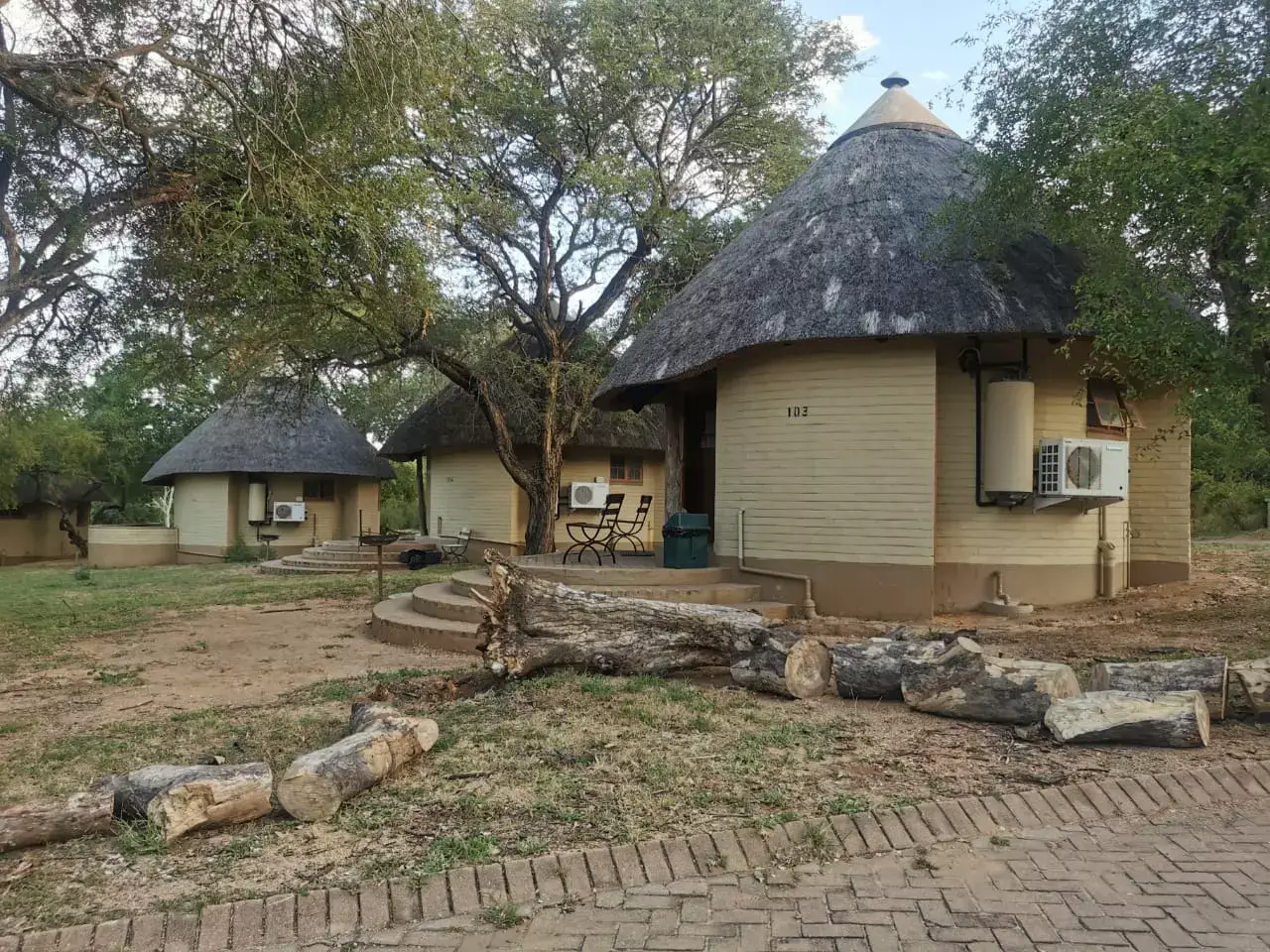
Priced From ZAR 21 000 PP
Unique Kruger Park Safaris
Our unique safaris offer diverse activities including game drives, cultural immersions, luxury lodges, and bush walks.

Priced From ZAR 19 500 PP
Hidden Gem Kruger Park Safaris
Our hidden gem safaris embody a fusion of adventure, exclusivity, and a connection with the natural world.

Priced From ZAR 17 000 PP
Manyeleti Game Reserve Safaris
Our Manyeleti safaris offer an exquisite fusion of luxury and untamed nature, with no fences to limit your wildlife experience.
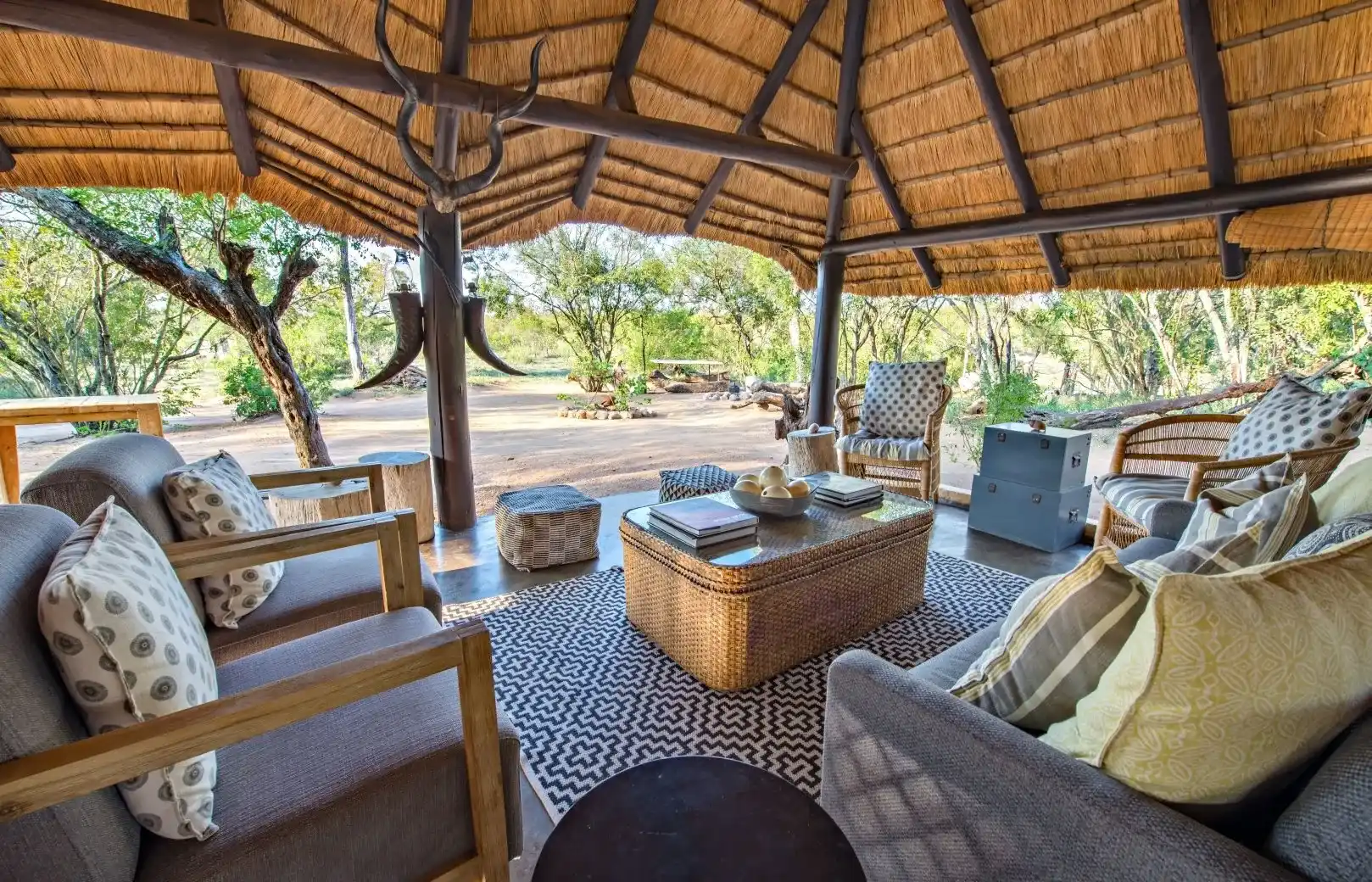
Priced From USD$ 4500 PP
Hwange National Park Safaris
Embark on our Hwange National Park safaris for an unparalleled adventure through the untamed African wilderness.
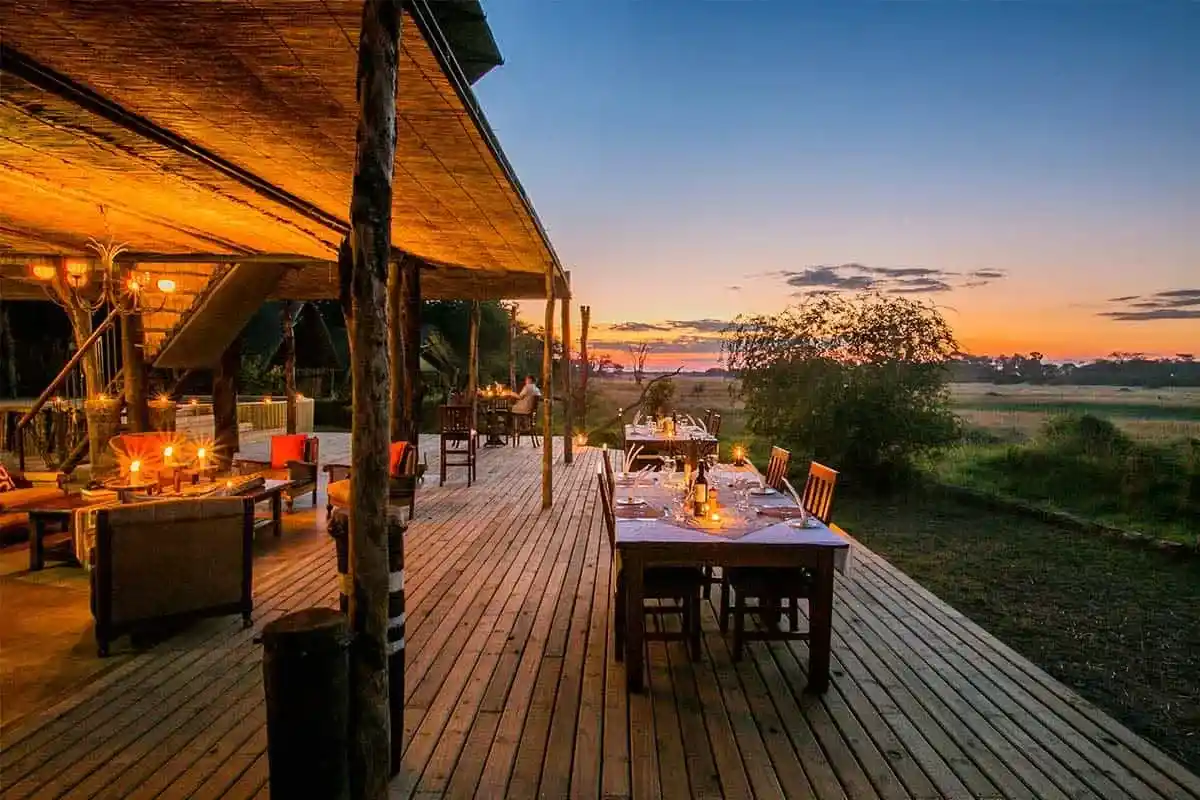
More About Us
Our mission to preserve and protect wildlife.

Expert Guides
Our guides, experts in local fauna, flora, and cultural history, are dedicated to ensuring every guest enjoys a memorable and educational experience, whether through identifying rare bird species, explaining plant medicinal properties, or sharing captivating stories of ancient civilizations.
Iconic Destinations
Nhongo Safaris offers a diverse range of accommodations to suit every traveler's preferences, from secluded tented camps in the African bush to elegant lodges with picturesque views, ensuring a unique and unforgettable stay, whether you seek luxury or adventure.

At Nhongo Safaris, we aim to ensure a seamless and stress-free experience from arrival to departure. Enjoy complimentary airport transfers and transportation to all destinations and activities included in your itinerary, allowing you to relax and focus on your journey from start to finish.

Traditional Meals
Savor traditional African meals crafted from fresh local produce, renowned for vibrant colors, bold flavors, and rich cultural heritage. Utilizing readily available ingredients like grains, vegetables, and meats, each region's unique dishes and cooking techniques create a diverse culinary landscape

Adventure Activities
Explore a variety of thrilling adventure activities including bush walks, cultural experiences that delve into the traditions and heritage of the local communities, and panorama route tours, where each stop offers a glimpse into the diverse and awe-inspiring landscapes that surround you.
Manyeleti Game Reserve Safaris
3 day place of the stars safari.
From R11 000
Per Person Sharing
4 Day Traditional Family Safari
From R35 000
4 Day Mantobeni Safari
From R35 0 00
4 Day Pungwe Lodge Safari
From R31 0 00
6 Day Kruger Manyeleti Safari
From R39 95 0

Why Book With Us?
We welcome solo traveler's.
Nhongo Safaris warmly embraces solo travellers seeking unforgettable adventures in the heart of Africa.
Your Safety Is Priority
Nhongo Safaris prioritizes safety, ensuring that you feel secure throughout your safari, with trained guides and well-maintained vehicles.
Customised Tours
We offer personalized itineraries tailored to your preferences, allowing you to explore specific regions, wildlife, or activities of interest.

Guaranteed Departure
With dedication to daily departures, Nhongo Safaris invites explorers to seize the moment and embark on an unforgettable journey, tailored to their schedule and desires.
Flexible Booking & Support
We offer flexible booking options and excellent customer support, making the planning process easy and stress-free.
Conservation Commitment
Nhongo Safaris is dedicated to responsible tourism, supporting conservation efforts and promoting eco-friendly practices during our safaris.
What Our Clients Say..
Great 4 Day Budget Safari experience in Kruger as a solo female traveler
"The experience with Nhongo was very nice and easy, starting with the booking. I wrote to different companies when I was deciding on my trip, and Nhongo always responded very quickly. They accommodated to my needs in terms of dates, and also to the fact that I was traveling solo (most companies didn't)."
The best company to do a safari with in Kruger Park!
"We went with the family and we had a fantastic experience. Verity communicated with us from the start till the end. Dean picked us up and drove us back. This is the second time we used them for safari in Kruger Park and this will certainly not be the last one. Stop looking around and book your safari with them!"
Simon Snelder
Let them do the work and just enjoy your trip!
"They (Dean and Verity) really put forth the effort to take care of us and make sure we got what we wanted. They took care of the little details ahead of time, so we didn’t have the headache. We had two people working full time with our group of 14. I am certain that the guides that we had were among the best out there."
A great experience
"Verity was clear and prompt in helping us arrange our safari tour, while our guide was excellent - their passion for and knowledge of wildlife was inspiring. We enjoyed our tour very much and would highly recommend it."
2 Day 1 Night Kruger Safari
"My solo trip with Nhongo Safaris was super. Right from the start, the owners, Dean and Verity, impressed me with their quick and communicative approach. They were extremely accommodating throughout the trip, going above and beyond to ensure I enjoyed myself. Our guide, was personable and great company!"

Subscribe and Get the Latest Travel News!
Thank you for Subscribing!
- Travel Guides Plan your adventure
- Destinations Our favourite places
- Tours Book a trip
- Travel Companies Independent specialists
- Travel Guides
- Destinations
- Travel Companies
Safari in Kruger National Park
The best safaris in kruger national park.
Stuart Butler
- In this guide
Kruger National Park
- Sabi Sands Game Reserve
- Kwazulu-Natal
- Parks of the North West Province
- Safari in the Eastern Cape
- Safari in the Western Cape
- Where to stay
- Need to know
- Where to go
The showpiece of South African safari , Kruger National Park is one of the world’s most famous protected areas, and for good reason.
This huge (19,485 sq km) park in the far northeast of South Africa is home to tens of thousands of mammals and birds including large numbers of all your African favourites.
The scenery is classic Africa, with the diversity of safari activities the equal of anywhere and there are endless accommodation options and safari styles available, from tented camps to luxury lodges. The park is readily accessible and, thanks to an impressive road system, easy to travel around.
Here's my rundown on the best safaris in Kruger National Park.
Kruger's best safari reserves, lodges and camps
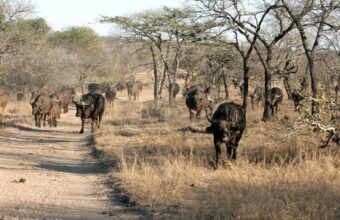
Thornybush Game Reserve
Best for: Luxury lodges and the Big Five
For many years, Thornybush was a fenced reserve which meant the management could guarantee the presence of many large mammals, but it also prevented the wildlife from moving freely between the reserve and Kruger itself. It also meant that the reserve lacked a little of the wilderness feel. The good news is that the fences have come down and, with its top-end lodges, acclaimed guides and a better than average chance of seeing cheetah (as well as many other flagship animals), Thornybush can now rightly hold its head up high as one of the best of the Kruger area’s private reserves.
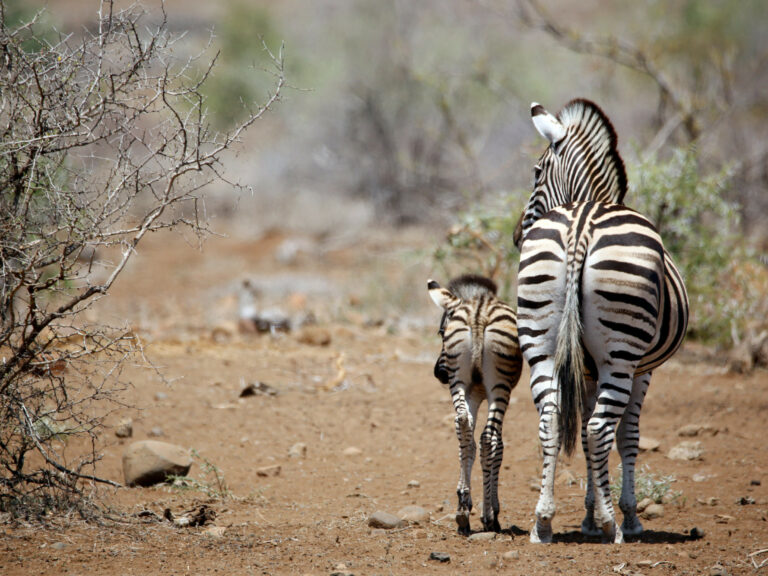
Timbavati Game Reserve
Best for: The Big Five and photography
This magical private reserve borders the main Kruger park and, with no fences to block access, it hosts all the main mammal and bird species that Kruger is famed for. What really puts Timbavati on the map is its very rare population of naturally white lions. Lions with such a genetic mutation can only be found in one or two other places in Africa. In 2017, the last white lion in the region died. However, in March 2018, a cub was born with the pigmentation, meaning the legend lives on.
Timbavati is known for its high-quality guides, wide range of safari activities, and superb, high-end lodges with a heavy dose of romance.
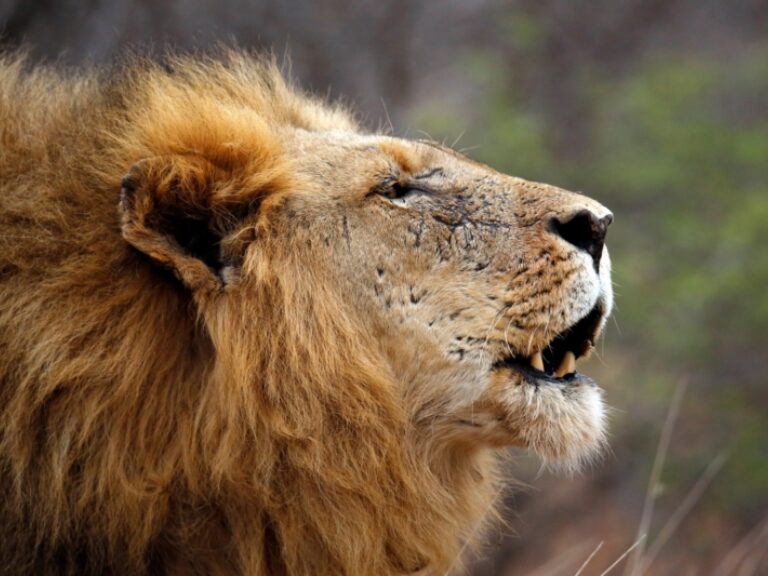
Balule Nature Reserve
Best for: The Big Five and luxury lodges
Sprawling across 250 sq km, the unfenced Balule Nature Reserve sits on the edge of the greater Kruger ecosystem with the Drakensberg escarpment as a memorable backdrop. The reserve is home to the Big Five as well as large numbers of hippo. There is also excellent birding with more than 260 recorded species including hobby falcon and harlequin doves. There are several quality lodges in different price ranges and activities include guided game drives and walking safaris, fishing, wine tasting and visits to a wildlife rehabilitation centre.
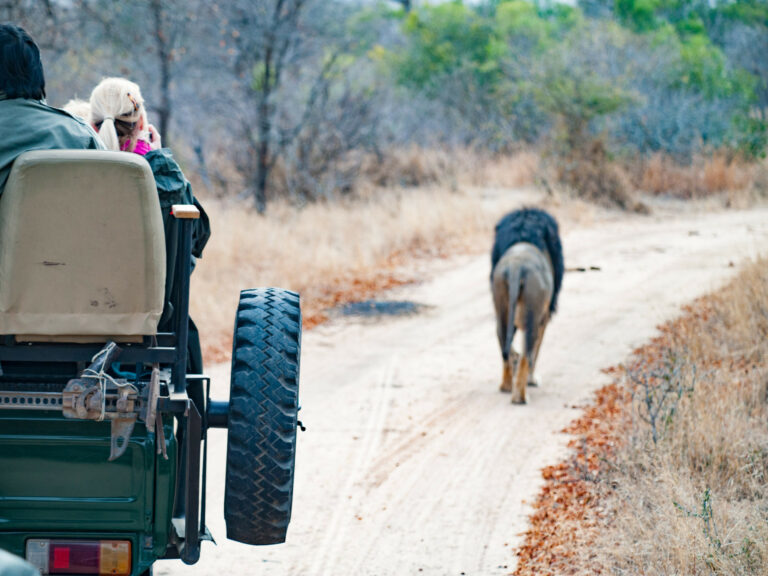
Kapama Game Reserve
Best for: Family friendly holidays and birdwatching
Kapama makes for a good first-time safari destination in the greater Kruger region. A few years ago, the fences that had for so long separated it from Kruger and the surrounding (unfenced) private reserves were taken down. This has done a lot to increase the wilderness feel of the place. There is a good range of safari activities on offer and it’s child-friendly (as child-friendly as anywhere with wild lions can be). One unique feature of a safari here is the reserve’s elephant experience. The reserve has a number of elephants (rescued from elephant-back safaris) and the elephant interaction experience allows you to get close to these not-so gentle giants while a guide explains elephant biology and conservation.
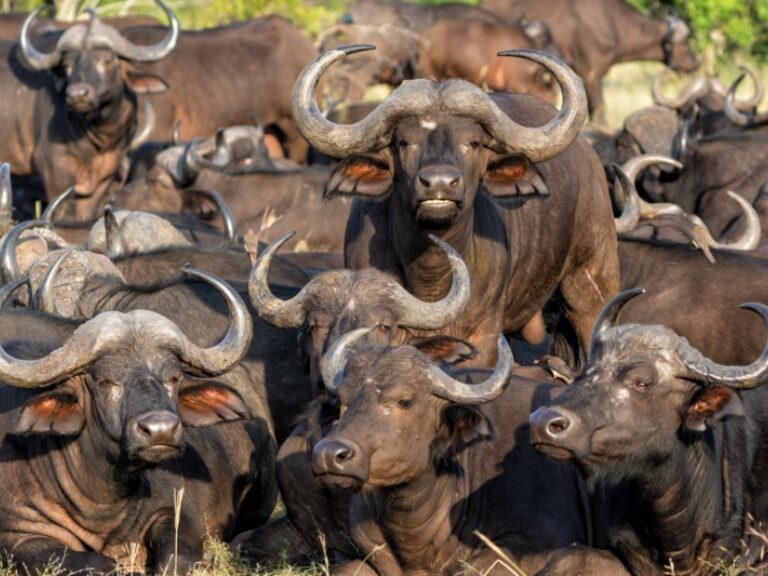
Manyeleti Game Reserve
Best for: The Big Five and family friendly safari
Covering 230 sq km and with an unfenced border with Kruger, Manyeleti, which means Place of the Stars in the local Shangaan language, was the only wildlife reserve that black people were permitted to visit during the apartheid era. Today it welcomes everyone, yet retains an exclusive atmosphere thanks to having only four excellent lodges and camps with accommodation suitable for budget, mid-range and luxury travellers. The reserve hosts all the so-called Big Five and a whole range of Kruger’s other stars.
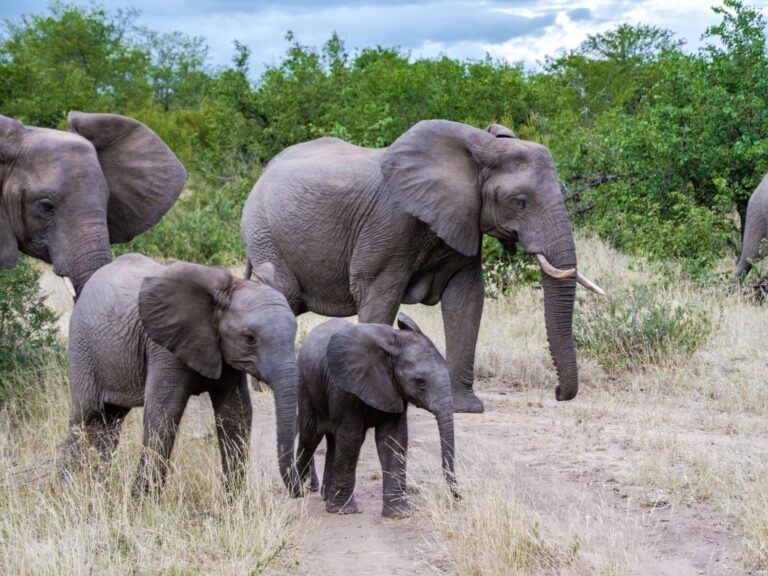
Klaserie Nature Reserve
Best for: Luxury lodges and photography
Covering some 60,000 hectares, the spectacular Klaserie Nature Reserve is one of the largest privately-owned nature reserves in South Africa. The reserve is also deeply committed to environmental education for local children and supports a number of long-term scientific studies. For the tourist, Klaserie combines memorably diverse scenery, including glittering waterways, and an impressive range of wildlife such as rhinos, elephants, lions, hippos and some massive buffalo. The birdlife is equally impressive and one of the scientific projects the reserve supports focuses on the prehistoric-looking ground hornbill. There’s a wide selection of accommodation within Klaserie, all of it very luxurious and intimate in scale, and the sheer size of the reserve means that Klaserie never feels busy — except with wildlife.
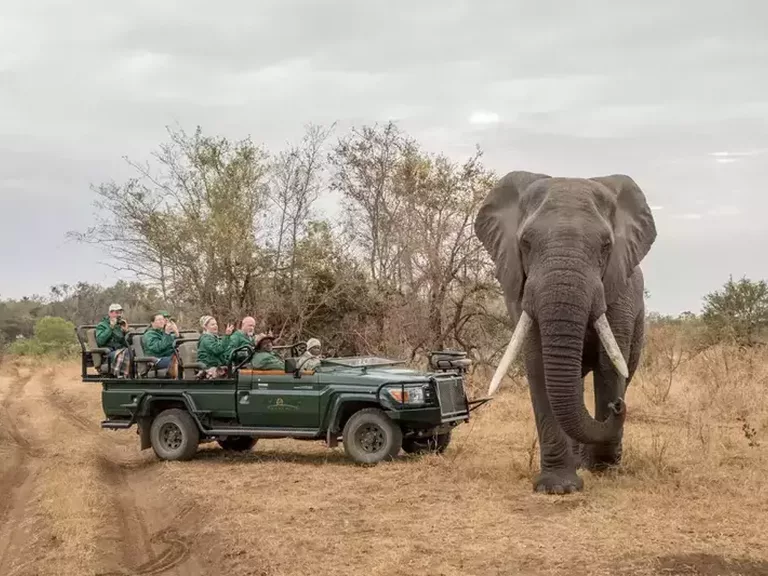
Karongwe Game Reserve
Best for: Birdwatching and the Big Five
Known for offering some of the highest chances of spotting the elusive leopard, Karongwe is a moderately-sized private game reserve hemmed in between four rivers with views of the Drakensberg Mountains. This gives it an unusually lush, green landscape, in contrast to some of Kruger’s drier regions. Other highlights are the superb guided bush walks and exceptional birdwatching (again, thank those rivers). Since there are just five unashamedly luxurious and very small camps, crowds are never an issue here and the quality of the guiding and accommodation is almost unsurpassed in the Kruger area.
featured kruger safaris
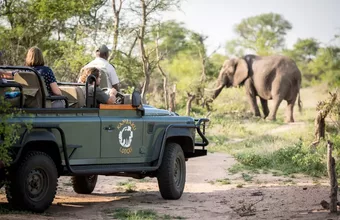
Affordable Greater Kruger Safari Combo
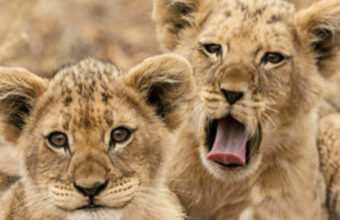
Kruger Safari & Beach
8 days from kruger to mozambique.
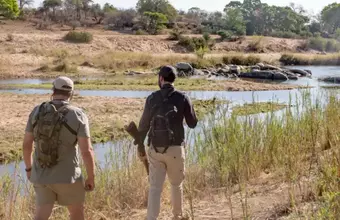
Cape Town & Kruger Luxury Safari
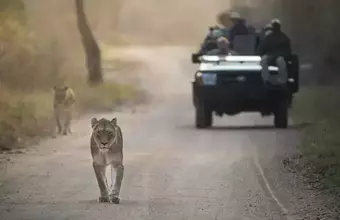
Cape Town & Kruger Family Safari

Lion in Kapama Game Reserve
Safari in Kruger National Park: Need to know
Everything you wish you'd known before you booked.
This is safari made easy — perhaps too easy. A park as good and easy to visit as Kruger attracts a lot of visitors and in high season main routes can be busy. The park’s highly-developed infrastructure also means that it doesn’t always feel all that wild. If this sounds off-putting, fear not.
The park is surrounded by a number of superb private reserves with limited numbers and no self-drives allowed, which means that wild Africa comes growling right up to you. Taking all this into account, whatever sort of safari you’re looking for, Kruger usually comes out on top.
Where to go in Kruger National Park
There’s a massive amount of accommodation in and around Kruger National Park. The park itself caters to all budgets, from hardcore bush campers to lodges with a luxury royal seal (and a price tag to match). In general, the finest accommodation and best safari guides can be found in the exclusive private reserves bordering Kruger itself. The prices quoted by such places might appear steep but keep in mind that they generally include all activities including guided safaris in state-of-the-art vehicles, meals and most drinks, plus the conservation fees that help maintain such wilderness areas.
Some suggested top-end places include Singita Lebombo Lodge and the Rzoyal Malewane, both of which are in the Kruger National Park itself. You can’t really go wrong with any of the accommodation in the private reserves but some worth building your safari around include Thornybush Waterside Lodge in the Thornybush Game Reserve, Kapama River Lodge in the Kapama Game Reserve, and the Klaserie Sands River Camp and Makumu Private Game Lodge, both in Klaserie.
Safari by foot
For the ultimate in Kruger adventures, try a short bush walk led by an expert walking safari guide in one of the private reserves or, for something even more thrilling, set out to hike one of the multi-day wilderness trails established by park authorities. There’s no better way to get to know wild Africa than by walking, which gives you the ability to touch, smell, taste, hear and sense the African bush in a way that’s never possible in a vehicle safari.
Kruger wildlife
One of the great parks of Africa, Kruger and the surrounding private reserves are home to all of southern Africa’s iconic mammal species including the famed Big Five — buffalo, elephant, lion, leopard and rhino. This is also a great park for giraffe, zebra, cheetah and even wild dogs. The sheer quantity of animals seen on a safari trip here can be mind-boggling.
There are tens of thousands of impala and blue wildebeest and, despite sustained recent poaching, there are still thousands of white rhino (plus some black rhino). The lion population is somewhere around thousand and elephants are doing exceptionally well, with some 13,000 present (which is about double the park’s real carrying capacity). In total, some 140 mammal species are known to live in and around the Kruger eco-systems, which makes it one of the most mammal-rich parks in the world.
The diverse habitats, which include thorn tree woodlands and shrub mopane veld, river valleys lined by tropical forest and searing granite kopjes (hills), supports an even more impressive array of birdlife. More than 500 different species of birds have been recorded in Kruger.
Kruger's hidden gems
Anthony Ham
Kruger may be busy, but it’s so big that you can still spend time alone with a lone leopard wandering along a quiet riverside track. As a general rule, I enjoy Kruger the further north I go: in the wild north, I’d happily live out my safari days looking for birds and lions that still seem surprised to see a vehicle.
When to visit Kruger National Park
Key wildlife viewing times are between June and September when the drier winter weather causes animals to congregate around water sources, and the March to May rutting season when male wildebeest, impala and other antelope butt heads over the ladies. Overall, June is probably the best month to visit. Wildlife activity is intense, but with school holidays yet to begin, human activity remains light and accommodation is cheaper.
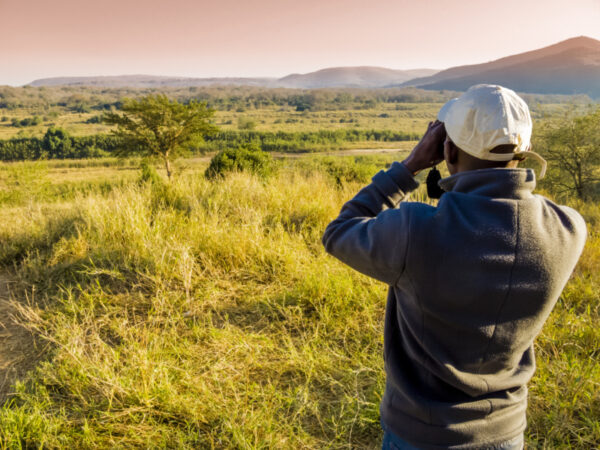
When to go on safari in South Africa
Blessed with incredible geographical diversity, South Africa is truly a year-round destination…
Kruger safari FAQs
Your questions, our expert answers, can you recommend any mid-luxury accommodation in kruger we don't need top luxury but happy to splurge a bit..
Most of the accommodation actually within Kruger National Park is run by the park authorities - great locations, but the accommodations are fairly basic and very busy. If you want to splash out, this is probably not what you're looking for.
Consider instead one of the private reserves (conservancies) that sit alongside Kruger - they have much the same wildlife, but way more choice when it comes to accommodation, and fewer visitors and vehicles. I've always enjoyed Timbavati Nature Reserve and Shindzela - I saw all the big five in one afternoon here!
The best safaris in Sabi Sands
About the author.
Stuart is an award-winning travel journalist covering safari, trekking and conservation in Africa for the Lonely Planet, Rough Guides, BBC, Bradt Travel Guides, amongst many others. He is the author of Walking With The Maasai , a journey through some of Kenya's lesser-visited Maasai lands.
Featured tours

Kruger Safari Packages
Mobile camping & walking safaris.

Jewels of South Africa
13 day small group tour of south africa.

Wonders of South Africa
15 days from port elizabeth to kruger.
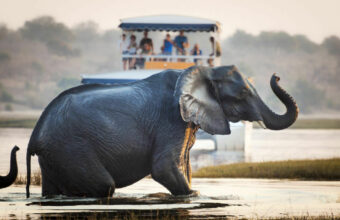
Ultimate African Taster
15 days from victoria falls to cape town.

Featured tours View all
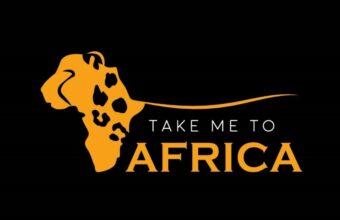
Why Horizon Guides?

Impartial travel guides
Our guides are written by the leading experts in their destinations. We never take payment for positive coverage so you can count on us for impartial travel advice.

Expert itineraries
Suggested itineraries and routes to help you scratch beneath the surface, avoid the tourist traps, and plan an authentic, responsible and enjoyable journey.

Specialist advice
Get friendly, expert travel advice and custom itineraries from some of the world's best tour operators, with no spam, pressure or commitment to book.
Our guides are 100% impartial and are written by independent, professional travel journalists. We make money by charging carefully-screened travel companies to list their business on our website. Our advertisers have no influence on our editorial content and we never accept payment for positive coverage.
Read more about how we work and what we believe in here .
- Travel guides
- Work with us
Sitemap , Privacy Copyright © 2024 Horizon Guides
Travel | May 17, 2024
Get a Taste of South Africa Through These 15 Photos of Stunning Wildlife and Vibrant Communities
From desert landscapes to glittering beaches, see what this country has to offer
:focal(1200x903:1201x904)/https://tf-cmsv2-smithsonianmag-media.s3.amazonaws.com/filer_public/e7/31/e7312d75-0aa3-49af-a029-12102cc22222/1-opener.jpg)
Text by Tracy Scott Forson
Photographs selected by Jeff Campagna
With nearly 20 national parks across the country, South Africa has more than enough beautiful landscapes and wild fauna to attract naturalists, conservationists and animal lovers. Safari tours are common, and travelers are able to see everything from antelopes to zebras. Add to that the waterfalls, distinct vegetation and scenic oceans, and you have an unforgettable journey to one of the most beautiful countries in the world. See for yourself.
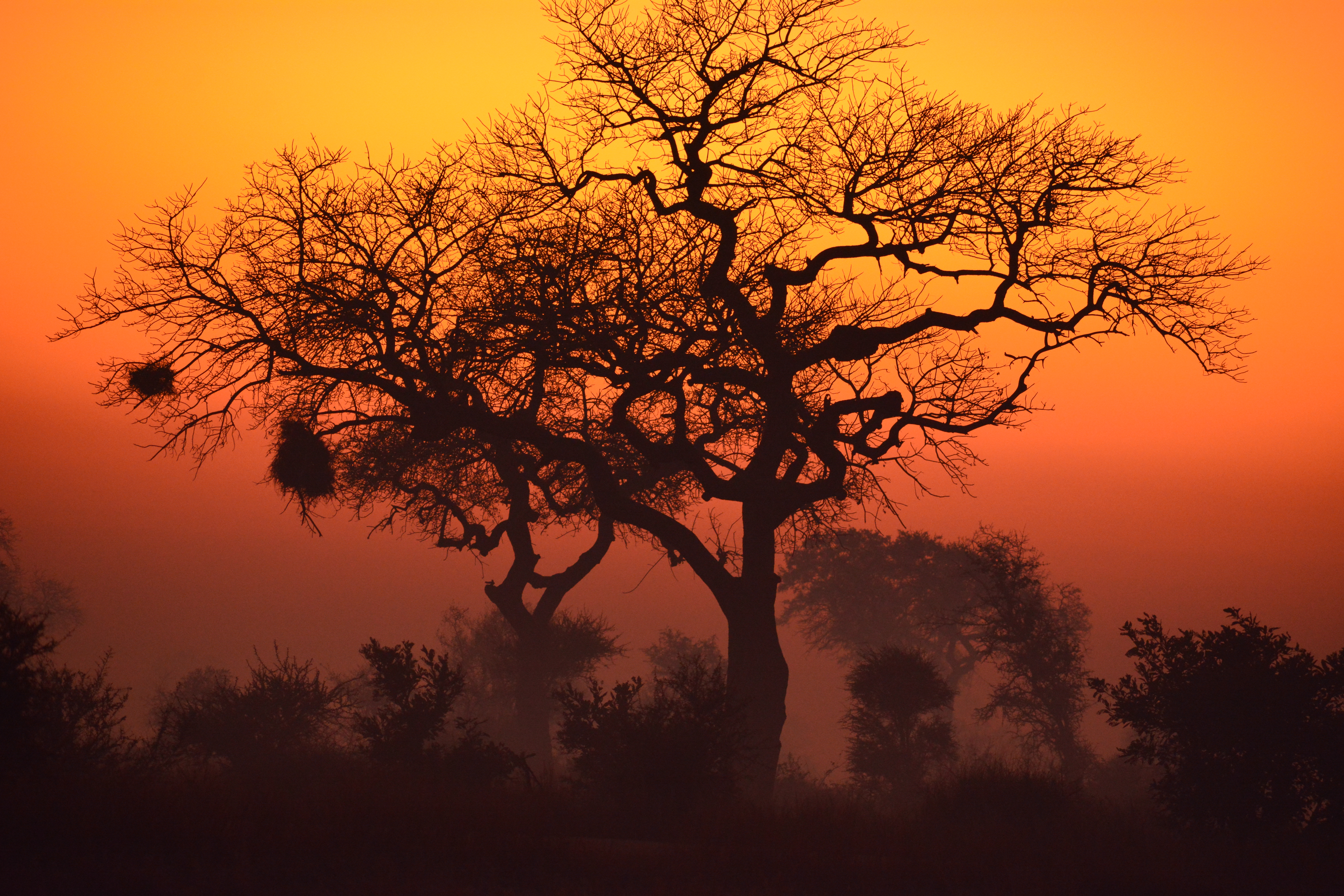
Get the latest Travel & Culture stories in your inbox.
Tracy Scott Forson | READ MORE
Tracy Scott Forson is a senior editor at Smithsonian magazine.
/https://tf-cmsv2-smithsonianmag-media.s3.amazonaws.com/accounts/headshot/Jeff-Campagna-240.jpg)
Jeff Campagna | | READ MORE
Jeff Campagna is a photo editor at Smithsonian magazine. You can follow him on Instagram at @jeffcampagna .
- AFRICA Top10
- BUSINESS & MONEY

Going Guided On Safari – It’s The Best Way
- May 16, 2024 May 16, 2024
- South Africa , NEWS
There are arguably few better places on the African continent to experience the magnificence of an untamed wilderness as in Kruger National Park.
Home to the Big 5, diverse ecosystems and an abundance of bird life – among its many treasures – a visit to Kruger National Park is a bucket list destination for both local and international visitors, and rightly so. Covering an expanse of some 20 000 square kilometres, it’s a space best navigated with the assistance of a safari guide.
Interestingly, Euromonitor International, a leading provider of global business intelligence, market research data and analysis, lists guided tours as one of the fastest growing travel categories in the world. Guided tours are one of the best ways to learn about places and things from experts who are committed to sharing their intimate knowledge of a topic. As such, it’s a fast and cost-effective way to embrace a new experience.
Exploring Kruger National Park with a knowledgeable safari guide guarantees an enhanced, more intimate experience. “Safari guides are passionate, they’re informed, they understand Kruger and all its glorious nuances, and they have great stories to share that make the tours so much more intimate, interesting and memorable,” says Anton Gillis, Kruger Gate Hotel CEO.
In fact, Gillis says there are a number of reasons why a guided safari tour in Kruger National Park is a must-do for visitors.
In on the secrets
A safari guide is a connection between the visitor and the wonders of the park. They’re there to bring the magnificence of the landscape, the animals, the birds and the flora to life.
“Most safari guides are very eager to share their knowledge and insights, and enhance the visitor experience in that way. Don’t shy away from asking them questions – the more you ask the more Kruger comes to life,” Gillis shares.
Interesting questions to ask a safari guide are around the daily routines of the animals, what one is likely to see on a night safari versus a day safari, and in what way seasonal changes impact the movement of the animals. Many safari guides will also have insightful views on topics like conservation and changing weather patterns, and almost all of them have fascinating stories about (close) encounters with the animals.
The greater good
The safari industry in South Africa is an important economic enabler that creates employment opportunities for hundreds of people from the local communities surrounding Kruger National Park. As with any economic opportunity, employment in the safari industry has a knock-on effect, supporting not only those directly engaged but also sustaining the livelihoods of their families.
What’s more, many safari guides are skilled professionals with dynamic skill sets and in-depth knowledge of the bush.
“A guided safari is about so much more than driving tourists and pointing to the odd giraffe or buck. They understand the park’s ecosystem and the nuances within. They have a wealth of knowledge that ensures that our guests not only witness extraordinary wildlife sightings but also gain insights into the intricate web of life that makes Kruger National Park such a captivating destination,” says Gillis.
Opting to experience Kruger National Park with a safari guide is a way of showing an appreciation for the passion, experience and expertise of not just an individual guide but indeed an industry of safari guides who, beyond sharing their knowledge of paradise with visitors, also contribute to conservation efforts and research undertakings that are crucial to maintaining the status of Kruger as a world-class wildlife destination.
Elvis Gazide is one of Kruger Gate Hotel’s most experienced guides, with a keen understanding of what makes for a great safari experience. “Guiding is my passion. Bringing the bush to life for people is what I love doing and it is what allows me to support my family. It’s also great to witness somebody seeing wildlife up close for the first time.”
Personalised experiences
Personalisation is all the rage, and definitely also possible on a guided safari tour. A seasoned safari guide can curate an experience to match the client’s interests and preferences.
Whether it’s nature photography or bird watching you’re into, or if you’re keen to learn more about the trees of the Kruger National Park, a safari guide can help ensure a more intimate encounter with these interests.
In fact, Enock Mkansi says curating a personalised experience for guests around their interest is one of his favourite things about working as a guide at Kruger Gate Hotel. “I love it when I can make the guest’s experience more special by showing them more of what they are personally interested in. My job also allows me to share my knowledge and understanding of Kruger National Park with others. It’s such a special place and it’s great when guests get to see that too,” he says.
What’s more, for those keen to do a self-drive safari, a guided safari is a great way to “acclimate” to Kruger National Park before taking on the thrill of doing it yourself, at your own pace. “One could view a guided safari as a ‘short course’ on how to best go about your safari, taking the lead from those who do it every day,” Gillis says.
Copy short link

Africa Safari Trip: A Comprehensive Guide To Crafting Unforgettable Memories
H ave you witnessed a lion’s roar echo across the savanna or watched a herd of elephants lumber by? An Africa safari trip is an otherworldly experience, but where do you even begin? This guide will equip you with all the essentials to plan your unforgettable adventure . Even though it can seem overwhelming at times, if you’re equipped with the right guidance and information, the procedure is rather easy.
To help you plan the perfect safari tour in Africa, in addition to answering the majority of your frequently asked questions, we’re put together some of the greatest tips and useful suggestions.
Choosing the Location of Your African Safari Trip
An Africa safari trip promises an enchanted world of discovery, where each expedition and place holds the potential to reveal a captivating tale. Every area of this enormous continent, from the lush deltas of the south to the brilliant savannahs of the east, offers a different fabric of fauna and culture. This is more than just a journey—it’s an exploration of the core of nature, where opportunity abounds at every turn.
African safaris are unique among travel experiences because of the authentic, natural spectacle of the wild. These excursions aim to fully immerse you in the world of animals, not just observe them. Planning your destination is among the most crucial aspects of preparation for any holiday, including this one. Africa is vast, so it’d be helpful to start with a “where to go on an Africa safari trip” Google search if you have no idea what to do.
To select the ideal safari destination, you must consider the things you wish to see. Are there any specific animals or cultural events you would like to see? Kenya and Tanzania from July to October are your best choices if you’ve always wanted to see the Great Wildebeest Migration. Visit either Botswana or South Africa to see a huge herd of African elephants throughout the year.
In East Africa and the majority of Southern African nations, the “Big Five” are also widely distributed. Travel to Uganda, Rwanda or the Congo for gorilla trekking; these countries are all in Central Africa. If you want to see chimpanzees on your Africa safari tour, Uganda is the ideal place to do it.
Top 5 Choice Destinations for Your Africa Safari Trip
Here are our top five African wildlife safari destinations to help you plan your trip.
Kenya’s Maasai Mara National Reserve
At the Maasai Mara Reserves, the Big Five roam free, and boundless plains extend into the horizon on a wildlife safari. Traveling off-road and appreciating the lack of fences and lodging at any of the Mara conservation areas allows you to experience the breathtaking sight of countless wildebeests roaring across the East African savanna around the Great Migration.
From open safari vehicles, watch as lions hunt their prey with unparalleled subtlety. Elephants socialize within their close-knit groups, and elegant giraffes peruse acacia trees with grace. A fascinating insight into the Maasai people’s dynamic local culture, which is entwined with the land, its profusion of wildlife, and the natural beauties of the wildness itself, is provided by Maasai Mara.
Tanzania’s Serengeti National Park
Tanzania’s Serengeti National Park is home to a large environment that is brimming with life. See the boundless plains packed with antelopes, zebras, and wildebeests as they migrate in a never-ending dance of survival throughout your Africa safari trip. It’s what you anticipate seeing on game drives following your viewing of National Geographic or PBS programs. You might be amazed watching the big cats lounging in the shade following a good hunt, or you might experience the exhilaration of seeing a cheetah racing across the landscape in a flurry of speed.
There are other methods to observe wildlife, such as taking a hot-air balloon flight across the savanna for breath-inspiring, all-encompassing views of this iconic African terrain. Seasonality is essential when thinking about visiting the Serengeti; never schedule an unplanned online vacation.
Zambia’s South Luangwa National Park
You can feel the African wilderness in Zambia, not just see it. In contrast to safaris that are limited to metal enclosures, South Luangwa encourages you to stroll among the animals rather than drive by them. Imagine your heart racing as you make your way through verdant riverine forests full of leopards hiding in their disguises, only to be astounded by vast herds of buffalo crossing wide-open savannas.
As you approach elephants bathing, listen to the Luangwa River’s rushing waters, which will lead you to the echoes of night safaris. You can unwind in the unexpected comfort of fly tents or treehouse retreats when the stars adorn the sky.
South Africa’s Greater Kruger National Park
You can journey across acacia woodlands and tour places with sun-filled savannas along the rushing waters of the Sabi River in South Africa’s Greater Kruger National Park. Hear the echoes of prehistoric existence and see the exhilarating dance of adventures amidst the rare species. Renowned for its almost assured Big Five meetings, you get to experience the exhilarating thrill of seeing elephants trumpeting by a waterhole or lions relaxing in golden light—you don’t have to imagine it.
There is more to Kruger’s artistry than the Big Five. Higher populations of predators and a more varied array of species can be found in the superb private game reserves found in the Greater Kruger National Park. Wander along the river where crocodiles and hippos sunbathe before becoming lost in the rainbow of more than 500 different bird species.
Botswana’s Okavango Delta
Emerald islands emerge from the reflecting waters of the spreading waterways of Botswana’s Okavango Delta, a UNESCO World Heritage Site. A mokoro is a native dugout canoe in which you may sail softly and intimately while spotting sleeping hippos afar and thirsty elephants sipping at the riverbanks .
Search among the trees for one of the greatest spots to see leopards or take in the aerial views of storks, eagles, and pelicans.
In such a distant location, the Okavango Delta boasts one of the largest concentrations of upscale safari resorts in Southern Africa, providing you with exclusive access to convenience and uncrowded rivers for a singular embrace of unspoiled wildlife.
Tips For An Outstanding African Safari Adventure
The foundation of a great African safari is effective communication. It makes sure you get the best possible experience out of your trip by bridging the gap between what you expect and the actual conditions of the environment. There are three communication techniques to help you receive the experience you want by interacting with an Africa safari trip guide or travel advisor .
Clearly state your demands and desires. Tell us about your ideal speed, cultural attractions, the wildlife you hope to see, and any unique interests you may have, such as birdwatching or photography. This enables your guide to customize your safari adventures based on your interests and budget. Mention any possible restrictions. Any physical restrictions or sensitivity should be disclosed to your guide to guarantee a fun and safe trip.
Pose inquiries. Never be afraid to ask questions about anything that piques your curiosity, be it local customs or the behavior of animals. Your guide holds a wealth of information that is just waiting to be discovered.
African safaris are an ode to the diversity and grandeur of nature. Every excursion offers a chance for a profound and intimate connection with nature. However, in a world full of breathtaking locations, the real art of travel is in how you take in each one. Each destination has a spirit of its own, and you can make transforming vacation experiences with the correct itinerary in addition to ones that are simply memorable.
Whether you’re traveling to the wild African savannahs or the charming countryside of Tuscany, creating a one-of-a-kind, dreamlike trip requires careful planning and vital information. It all comes down to creating a seamless, stress-free, and uniquely personalized tapestry of memories.
People Also Ask
How far should my Africa safari trip be scheduled? It’s advisable to make reservations eight to twelve months in advance of when you wish to go or depart for your selected African safari location. Enough time guarantees availability and your place at the top of the line for the most desirable experiences that Africa presents. It is always better to schedule your safari trip earlier than undergo a last-minute rush.
When is the ideal time to go on an Africa safari trip? The dry season, which runs from June to October, is the ideal time to go on a safari. Since it’s a warmer period of the year, there’s a greater chance that you’ll spot creatures looking for water. You can also witness the famous Masai Mara migration during these months.


Surveillance Safari: Crowdsourcing an anti-poaching movement in South Africa
In South Africa’s Balule Nature Reserve, an all-female anti-poaching unit is using live streaming and Samsung’s smartphone technology to support its conservation efforts and enlist volunteers from around the world.
For upwards of three million years, we humans and our antecedents have used tools to interface with the natural world around us. But in the last few decades, the human population has exploded and our tools today are having globally damaging impacts, transforming biomes across the planet. Yet our technologies also have the potential to mend our relationship with nature, protecting ecosystems and recovering lost biodiversity–if we develop and deploy them in the right ways.
The earliest stone tools were discovered in Africa–a continent that also harbors some of the world’s most iconic wild animal species, including the so-called “Big Five”–elephant, lion, leopard, rhinoceros and buffalo. So, it’s relevant and appropriate that Samsung, one of the world’s leading consumer electronics companies, is working alongside conservationists in South Africa to protect these animals and others like them.
In 2020 the Kruger National Park faced a crisis. Covering just under 20,000 square kilometers of South Africa’s northeast quarter, Kruger is one of Africa’s biggest game reserves, typically attracting around one million visitors each year, many of whom come to see the Big Five. When South Africa entered the first phase of COVID-19 lockdowns on March 27, 2020, those visitors vanished. This spelled trouble.

“Resources for animals, rangers and anti-poaching units were vastly depleted,” says conservationist and digital marketing expert Peter Stewart. “Many local people who worked in ecotourism lost their jobs, so there was a much higher risk of informal poaching.”
This was especially true of the iconic rhinos that are a particular target for poaching gangs in Kruger National Park.
Stewart is a partner at Africam, a wildlife media company that uses live HD streaming cameras to support conservation education around the world. He and his team were approached by Samsung with a possible means of compensating for the crash in visitor numbers and the commensurate dangers this posed to wildlife in the park: If people couldn’t come to Kruger, what if Samsung and Africam could bring the park to them–or more precisely to their mobile devices?

By combining Africam’s live streaming infrastructure with the advanced camera systems and mobile technology of the latest Samsung Galaxy devices, the new partnership would build a global community of virtual rangers who could, in theory, monitor wildlife around the clock. The result was Wildlife Watch–a pilot program launched on March 3, 2021, which installed Samsung Galaxy S20 FE handsets, repurposed specifically for surveillance, in the Balule Nature Reserve – an around 99,000-acre tract of land on the eastern edge of Kruger National Park.
For Hungry Minds
Wildlife Watch also enlisted the Black Mambas–the world’s first all-female anti-poaching unit, consisting of 36 rangers. The Mambas were provided with Samsung smartphones to help them monitor wildlife, communicate with one another, and document their day-to-day work. Real-time tracking meant they didn’t have to rely on radios, plus fellow rangers could, for example, respond more swiftly to the presence of poachers or a pride of lions.

Wildlife Watch recorded more than seven million social engagements over a four-month period, as humans everywhere turned to their mobile devices to connect with the outside world. In one instance, virtual rangers identified a wild dog with a snare on one of its legs. They quickly alerted rangers, who removed the snare and gave the animal medical treatment. What’s more, the Black Mambas were a hit with global audiences and have since become important role models in their communities.
“Our mission is to show people that we are here and we're patrolling the boundaries of the reserve to make the Kruger National Park an undesirable place for poachers,” says Sergeant Felicia Mogakane of the Black Mambas. “People started to believe in us because they've really seen our impact—that our model is effective… we are protecting the wildlife in there. Ever since we've been deployed, no rhino has been killed in our reserve.”
Following the success of the Wildlife Watch pilot, Samsung, Africam and the Black Mambas recently announced an expansion of the program. The second phase launched to the public on March 4, 2023 and makes use of the advanced camera systems in the latest Galaxy S21 Ultra and S23 Ultra handsets, including enhanced low-light capabilities and 10 times optical zoom to generate HD video day and night. The technology continues to support the Black Mambas in their work, not only protecting iconic wildlife in the Balule Nature Reserve, but also engaging with people in rural communities, many of whom have never seen species like lion, elephant and rhino.

This second phase also tested the Samsung Galaxy SmartTag2 as an additional means of monitoring movements in the reserve. The tags are a great way for the Black Mambas to orient themselves in the reserve, providing location markers for things like camera traps, signs of infraction or evidence of animal behaviors. The Galaxy SmartTags can be tracked using SmartThings Find, part of Samsung’s SmartThings connected ecosystem, which provides personalized and automated experiences using AI.
The wild habitats that remain in sub-Saharan Africa continue to face threats from human encroachment, poaching and human-wildlife conflict. It is estimated that the region as a whole has lost around 50 percent of its large mammals in the past few decades. Whether we like it or not, we are the custodians of these spaces and their future survival depends on us. Mobile technologies are crucial to the future of conservation—they provide vital tools on the ground for ranger units like the Black Mambas. But they also amplify local issues and perspectives, giving global audiences the opportunity not only to learn about these unique ecosystems and species, but also to play an active part in conserving them.
- Terms of Use
- Privacy Policy
- Your US State Privacy Rights
- Children's Online Privacy Policy
- Interest-Based Ads
- About Nielsen Measurement
- Do Not Sell or Share My Personal Information
- Nat Geo Home
- Attend a Live Event
- Book a Trip
- Inspire Your Kids
- Shop Nat Geo
- Visit the D.C. Museum
- Learn About Our Impact
- Support Our Mission
- Advertise With Us
- Customer Service
- Renew Subscription
- Manage Your Subscription
- Work at Nat Geo
- Sign Up for Our Newsletters
- Contribute to Protect the Planet
Copyright © 1996-2015 National Geographic Society Copyright © 2015-2024 National Geographic Partners, LLC. All rights reserved
- Timbavati Private Nature Reserve Tourism
- Timbavati Private Nature Reserve Hotels
- Timbavati Private Nature Reserve Bed and Breakfast
- Flights to Timbavati Private Nature Reserve
- Restaurants near Timbavati Private Nature Reserve
- Timbavati Private Nature Reserve Travel Forum
- Timbavati Private Nature Reserve Photos
- Timbavati Private Nature Reserve Map
- All Timbavati Private Nature Reserve Hotels
- Timbavati Private Nature Reserve Hotel Deals
- Timbavati Private Nature Reserve
- Restaurants
- Vacation Rentals
- Travel Stories
- Rental Cars
- Add a Place
- Travel Forum
- Travelers' Choice
- Help Center
Timbavati accommodations: this or that? - Timbavati Private Nature Reserve Forum
- Africa
- South Africa
- Kruger National Park
- Timbavati Private Nature Reserve
Timbavati accommodations: this or that?
- United States Forums
- Europe Forums
- Canada Forums
- Asia Forums
- Central America Forums
- Africa Forums
- Caribbean Forums
- Mexico Forums
- South Pacific Forums
- South America Forums
- Middle East Forums
- Honeymoons and Romance
- Business Travel
- Train Travel
- Traveling With Disabilities
- Tripadvisor Support
- Solo Travel
- Bargain Travel
- Timeshares / Vacation Rentals
- Kruger National Park forums
- Timbavati Private Nature Reserve forum

Hello friends,
I currently have reservations in November for 3 nights at Thabamati Luxury tented camp. I am taking this trip with my mom (I’m buying), and I’m trying to keep it fairly upscale, but my budget only extends so far. My original pick was Rockfig, it looked amazing. However, the price difference between Thabamati and Rockfig is significant, I think Rockfig is currently averaging R15,400 pppn, whereas Thabamati is only R9050. The luxury factor seems pretty comparable, only downside being beverages not included at Thabamati except for planned sundowners. Both have exclusively 5 star review on TA. I don’t know, I think maybe I’m reaching the final steps of my planning and am having doubts about whether I might miss out on something/leave a better experience on the table. Does anyone believe rockfig would be superior to the point I should fork over more (a lot more) money and stay there instead? Or is the experience likely to be just as good and I should stick to thabamati?
For reference, our Timbavati stay is the first leg of our trip, and will be followed by 2 days free drive pano route area, 3 days ulusaba safari lodge, 4 nights Cape Town, and 5 nights at two separate locations in okavango delta.

If you can add a night then Rock FIg comes down significantly with their pay 3/stay 4 nights special. Thabamati only uses one vehicle with all 8 guests. Rock Fig puts only 4 guests in a vehicle. That's a big difference, especially if you are interested in photography. I also would imagine that if all the guests are in the vehicle and people come and go each night then there may be more pressure on the ranger to show everyone the Big 5 and you may not get as much time devoted to seeing or searching for the other wildlife.
You may want to ask the lodges about their traversing areas. Not all lodges in the Timbavati can go into all blocks and it can make a difference.
Edited to say - I would take a day away from the Pano Route to increase to 4 nights at Rock Fig and take advantage of the special but I am someone who spends all of my time in the bush while in RSA.
- Timbavati accommodations: this or that? 6:51 pm
- Need help deciding lodge for 25th anniversary Jan 18, 2024
- Motswari versus Simbavati River Lodge Oct 18, 2023
- Motswari vs Simbavati River Lodge Oct 16, 2023
- Driving conditions in December/January Sep 17, 2022
- Motswari geigers camp or kambaku safari lodge Mar 30, 2022
- Kambaku Nov 25, 2021
- Machaton Private camp? Sep 10, 2021
- News re: Trophy hunting in the Timbavati game reserve Dec 17, 2019
- No AC at Tanda Tula - what a disappointment! Alternatives? Nov 15, 2019
- Kambuku Oct 01, 2019
- Bringing American Goodies to SA Jul 18, 2018
- Tips Jun 29, 2018
- Kambaku River Sands Jun 05, 2018
- Tanda tula or Lion sands River Lodge 12 replies
- Malaria 11 replies
- Thornybush versus Motswari or Ngala 6 replies
- Tipping your safari driver and guide 121 replies
- kings camp 5 replies
- 'Africa on foot' 'Nthambo' contact 3 replies
- Timbavati Reserve 2 replies
- Timbavati wildlife 8 replies
- Gomo Gomo Game Lodge 3 replies
- Travel to Kings Camp advice please. 12 replies
Timbavati Private Nature Reserve Hotels and Places to Stay
- What type of safari is best for me?
- Tipping Considerations
Advertisement
Buffalo literally in spotlight while saving 'friend' from lion attack, share this article.
Dramatic footage shared Thursday shows the compelling moment that an African buffalo rushed in to save another buffalo from a savage lion attack.
As viewers can see, the male lion has one buffalo by the throat in what appears to be a death grip until another buffalo rushes in to scatter the pride and force the male lion to release its grip and flee.
View this post on Instagram A post shared by Latest Sightings – Kruger (@latestkruger)
As the hero buffalo enters frame, a spotlight, presumably from a safari vehicle, shines on the rescue and both buffaloes. The massive bovines remain stationary and perhaps stunned briefly before wandering off.
The footage was shared by Latest Sightings , which features content captured in South Africa’s Kruger National Park, and credited to Sara Zegut.
The video description: “Buffalo risks it all to save friend from lion’s death grip!”
Most Popular
Preakness stakes 2024: results and payouts as seize the grey wins second leg of the triple crown, every ea ncaa football cover star since 1993, 2024 nba mock draft: a consensus shows how experts are projecting all of the top prospects, every 2024 preakness stakes horse name, ranked, preakness stakes 149 updated odds and weather forecast the day before the race, twins outfielder willi castro furiously threw the ball out of the stadium after a run scored when he lost track of the outs, preakness stakes 149 updated odds on the morning of the race.
Please enter an email address.
Thanks for signing up.
Please check your email for a confirmation.
Something went wrong.

40 Facts About Elektrostal
Written by Lanette Mayes
Modified & Updated: 17 May 2024
Reviewed by Jessica Corbett

Elektrostal is a vibrant city located in the Moscow Oblast region of Russia. With a rich history, stunning architecture, and a thriving community, Elektrostal is a city that has much to offer. Whether you are a history buff, nature enthusiast, or simply curious about different cultures, Elektrostal is sure to captivate you.
This article will provide you with 40 fascinating facts about Elektrostal, giving you a better understanding of why this city is worth exploring. From its origins as an industrial hub to its modern-day charm, we will delve into the various aspects that make Elektrostal a unique and must-visit destination.
So, join us as we uncover the hidden treasures of Elektrostal and discover what makes this city a true gem in the heart of Russia.
Key Takeaways:
- Elektrostal, known as the “Motor City of Russia,” is a vibrant and growing city with a rich industrial history, offering diverse cultural experiences and a strong commitment to environmental sustainability.
- With its convenient location near Moscow, Elektrostal provides a picturesque landscape, vibrant nightlife, and a range of recreational activities, making it an ideal destination for residents and visitors alike.
Known as the “Motor City of Russia.”
Elektrostal, a city located in the Moscow Oblast region of Russia, earned the nickname “Motor City” due to its significant involvement in the automotive industry.
Home to the Elektrostal Metallurgical Plant.
Elektrostal is renowned for its metallurgical plant, which has been producing high-quality steel and alloys since its establishment in 1916.
Boasts a rich industrial heritage.
Elektrostal has a long history of industrial development, contributing to the growth and progress of the region.
Founded in 1916.
The city of Elektrostal was founded in 1916 as a result of the construction of the Elektrostal Metallurgical Plant.
Located approximately 50 kilometers east of Moscow.
Elektrostal is situated in close proximity to the Russian capital, making it easily accessible for both residents and visitors.
Known for its vibrant cultural scene.
Elektrostal is home to several cultural institutions, including museums, theaters, and art galleries that showcase the city’s rich artistic heritage.
A popular destination for nature lovers.
Surrounded by picturesque landscapes and forests, Elektrostal offers ample opportunities for outdoor activities such as hiking, camping, and birdwatching.
Hosts the annual Elektrostal City Day celebrations.
Every year, Elektrostal organizes festive events and activities to celebrate its founding, bringing together residents and visitors in a spirit of unity and joy.
Has a population of approximately 160,000 people.
Elektrostal is home to a diverse and vibrant community of around 160,000 residents, contributing to its dynamic atmosphere.
Boasts excellent education facilities.
The city is known for its well-established educational institutions, providing quality education to students of all ages.
A center for scientific research and innovation.
Elektrostal serves as an important hub for scientific research, particularly in the fields of metallurgy, materials science, and engineering.
Surrounded by picturesque lakes.
The city is blessed with numerous beautiful lakes, offering scenic views and recreational opportunities for locals and visitors alike.
Well-connected transportation system.
Elektrostal benefits from an efficient transportation network, including highways, railways, and public transportation options, ensuring convenient travel within and beyond the city.
Famous for its traditional Russian cuisine.
Food enthusiasts can indulge in authentic Russian dishes at numerous restaurants and cafes scattered throughout Elektrostal.
Home to notable architectural landmarks.
Elektrostal boasts impressive architecture, including the Church of the Transfiguration of the Lord and the Elektrostal Palace of Culture.
Offers a wide range of recreational facilities.
Residents and visitors can enjoy various recreational activities, such as sports complexes, swimming pools, and fitness centers, enhancing the overall quality of life.
Provides a high standard of healthcare.
Elektrostal is equipped with modern medical facilities, ensuring residents have access to quality healthcare services.
Home to the Elektrostal History Museum.
The Elektrostal History Museum showcases the city’s fascinating past through exhibitions and displays.
A hub for sports enthusiasts.
Elektrostal is passionate about sports, with numerous stadiums, arenas, and sports clubs offering opportunities for athletes and spectators.
Celebrates diverse cultural festivals.
Throughout the year, Elektrostal hosts a variety of cultural festivals, celebrating different ethnicities, traditions, and art forms.
Electric power played a significant role in its early development.
Elektrostal owes its name and initial growth to the establishment of electric power stations and the utilization of electricity in the industrial sector.
Boasts a thriving economy.
The city’s strong industrial base, coupled with its strategic location near Moscow, has contributed to Elektrostal’s prosperous economic status.
Houses the Elektrostal Drama Theater.
The Elektrostal Drama Theater is a cultural centerpiece, attracting theater enthusiasts from far and wide.
Popular destination for winter sports.
Elektrostal’s proximity to ski resorts and winter sport facilities makes it a favorite destination for skiing, snowboarding, and other winter activities.
Promotes environmental sustainability.
Elektrostal prioritizes environmental protection and sustainability, implementing initiatives to reduce pollution and preserve natural resources.
Home to renowned educational institutions.
Elektrostal is known for its prestigious schools and universities, offering a wide range of academic programs to students.
Committed to cultural preservation.
The city values its cultural heritage and takes active steps to preserve and promote traditional customs, crafts, and arts.
Hosts an annual International Film Festival.
The Elektrostal International Film Festival attracts filmmakers and cinema enthusiasts from around the world, showcasing a diverse range of films.
Encourages entrepreneurship and innovation.
Elektrostal supports aspiring entrepreneurs and fosters a culture of innovation, providing opportunities for startups and business development.
Offers a range of housing options.
Elektrostal provides diverse housing options, including apartments, houses, and residential complexes, catering to different lifestyles and budgets.
Home to notable sports teams.
Elektrostal is proud of its sports legacy, with several successful sports teams competing at regional and national levels.
Boasts a vibrant nightlife scene.
Residents and visitors can enjoy a lively nightlife in Elektrostal, with numerous bars, clubs, and entertainment venues.
Promotes cultural exchange and international relations.
Elektrostal actively engages in international partnerships, cultural exchanges, and diplomatic collaborations to foster global connections.
Surrounded by beautiful nature reserves.
Nearby nature reserves, such as the Barybino Forest and Luchinskoye Lake, offer opportunities for nature enthusiasts to explore and appreciate the region’s biodiversity.
Commemorates historical events.
The city pays tribute to significant historical events through memorials, monuments, and exhibitions, ensuring the preservation of collective memory.
Promotes sports and youth development.
Elektrostal invests in sports infrastructure and programs to encourage youth participation, health, and physical fitness.
Hosts annual cultural and artistic festivals.
Throughout the year, Elektrostal celebrates its cultural diversity through festivals dedicated to music, dance, art, and theater.
Provides a picturesque landscape for photography enthusiasts.
The city’s scenic beauty, architectural landmarks, and natural surroundings make it a paradise for photographers.
Connects to Moscow via a direct train line.
The convenient train connection between Elektrostal and Moscow makes commuting between the two cities effortless.
A city with a bright future.
Elektrostal continues to grow and develop, aiming to become a model city in terms of infrastructure, sustainability, and quality of life for its residents.
In conclusion, Elektrostal is a fascinating city with a rich history and a vibrant present. From its origins as a center of steel production to its modern-day status as a hub for education and industry, Elektrostal has plenty to offer both residents and visitors. With its beautiful parks, cultural attractions, and proximity to Moscow, there is no shortage of things to see and do in this dynamic city. Whether you’re interested in exploring its historical landmarks, enjoying outdoor activities, or immersing yourself in the local culture, Elektrostal has something for everyone. So, next time you find yourself in the Moscow region, don’t miss the opportunity to discover the hidden gems of Elektrostal.
Q: What is the population of Elektrostal?
A: As of the latest data, the population of Elektrostal is approximately XXXX.
Q: How far is Elektrostal from Moscow?
A: Elektrostal is located approximately XX kilometers away from Moscow.
Q: Are there any famous landmarks in Elektrostal?
A: Yes, Elektrostal is home to several notable landmarks, including XXXX and XXXX.
Q: What industries are prominent in Elektrostal?
A: Elektrostal is known for its steel production industry and is also a center for engineering and manufacturing.
Q: Are there any universities or educational institutions in Elektrostal?
A: Yes, Elektrostal is home to XXXX University and several other educational institutions.
Q: What are some popular outdoor activities in Elektrostal?
A: Elektrostal offers several outdoor activities, such as hiking, cycling, and picnicking in its beautiful parks.
Q: Is Elektrostal well-connected in terms of transportation?
A: Yes, Elektrostal has good transportation links, including trains and buses, making it easily accessible from nearby cities.
Q: Are there any annual events or festivals in Elektrostal?
A: Yes, Elektrostal hosts various events and festivals throughout the year, including XXXX and XXXX.
Elektrostal's fascinating history, vibrant culture, and promising future make it a city worth exploring. For more captivating facts about cities around the world, discover the unique characteristics that define each city . Uncover the hidden gems of Moscow Oblast through our in-depth look at Kolomna. Lastly, dive into the rich industrial heritage of Teesside, a thriving industrial center with its own story to tell.
Was this page helpful?
Our commitment to delivering trustworthy and engaging content is at the heart of what we do. Each fact on our site is contributed by real users like you, bringing a wealth of diverse insights and information. To ensure the highest standards of accuracy and reliability, our dedicated editors meticulously review each submission. This process guarantees that the facts we share are not only fascinating but also credible. Trust in our commitment to quality and authenticity as you explore and learn with us.
Share this Fact:
- Yekaterinburg
- Novosibirsk
- Vladivostok

- Tours to Russia
- Practicalities
- Russia in Lists
Rusmania • Deep into Russia
Out of the Centre
Savvino-storozhevsky monastery and museum.

Zvenigorod's most famous sight is the Savvino-Storozhevsky Monastery, which was founded in 1398 by the monk Savva from the Troitse-Sergieva Lavra, at the invitation and with the support of Prince Yury Dmitrievich of Zvenigorod. Savva was later canonised as St Sabbas (Savva) of Storozhev. The monastery late flourished under the reign of Tsar Alexis, who chose the monastery as his family church and often went on pilgrimage there and made lots of donations to it. Most of the monastery’s buildings date from this time. The monastery is heavily fortified with thick walls and six towers, the most impressive of which is the Krasny Tower which also serves as the eastern entrance. The monastery was closed in 1918 and only reopened in 1995. In 1998 Patriarch Alexius II took part in a service to return the relics of St Sabbas to the monastery. Today the monastery has the status of a stauropegic monastery, which is second in status to a lavra. In addition to being a working monastery, it also holds the Zvenigorod Historical, Architectural and Art Museum.
Belfry and Neighbouring Churches

Located near the main entrance is the monastery's belfry which is perhaps the calling card of the monastery due to its uniqueness. It was built in the 1650s and the St Sergius of Radonezh’s Church was opened on the middle tier in the mid-17th century, although it was originally dedicated to the Trinity. The belfry's 35-tonne Great Bladgovestny Bell fell in 1941 and was only restored and returned in 2003. Attached to the belfry is a large refectory and the Transfiguration Church, both of which were built on the orders of Tsar Alexis in the 1650s.

To the left of the belfry is another, smaller, refectory which is attached to the Trinity Gate-Church, which was also constructed in the 1650s on the orders of Tsar Alexis who made it his own family church. The church is elaborately decorated with colourful trims and underneath the archway is a beautiful 19th century fresco.
Nativity of Virgin Mary Cathedral

The Nativity of Virgin Mary Cathedral is the oldest building in the monastery and among the oldest buildings in the Moscow Region. It was built between 1404 and 1405 during the lifetime of St Sabbas and using the funds of Prince Yury of Zvenigorod. The white-stone cathedral is a standard four-pillar design with a single golden dome. After the death of St Sabbas he was interred in the cathedral and a new altar dedicated to him was added.

Under the reign of Tsar Alexis the cathedral was decorated with frescoes by Stepan Ryazanets, some of which remain today. Tsar Alexis also presented the cathedral with a five-tier iconostasis, the top row of icons have been preserved.
Tsaritsa's Chambers

The Nativity of Virgin Mary Cathedral is located between the Tsaritsa's Chambers of the left and the Palace of Tsar Alexis on the right. The Tsaritsa's Chambers were built in the mid-17th century for the wife of Tsar Alexey - Tsaritsa Maria Ilinichna Miloskavskaya. The design of the building is influenced by the ancient Russian architectural style. Is prettier than the Tsar's chambers opposite, being red in colour with elaborately decorated window frames and entrance.

At present the Tsaritsa's Chambers houses the Zvenigorod Historical, Architectural and Art Museum. Among its displays is an accurate recreation of the interior of a noble lady's chambers including furniture, decorations and a decorated tiled oven, and an exhibition on the history of Zvenigorod and the monastery.
Palace of Tsar Alexis

The Palace of Tsar Alexis was built in the 1650s and is now one of the best surviving examples of non-religious architecture of that era. It was built especially for Tsar Alexis who often visited the monastery on religious pilgrimages. Its most striking feature is its pretty row of nine chimney spouts which resemble towers.

Plan your next trip to Russia
Ready-to-book tours.
Your holiday in Russia starts here. Choose and book your tour to Russia.
The Unique Burial of a Child of Early Scythian Time at the Cemetery of Saryg-Bulun (Tuva)
<< Previous page
Pages: 379-406
In 1988, the Tuvan Archaeological Expedition (led by M. E. Kilunovskaya and V. A. Semenov) discovered a unique burial of the early Iron Age at Saryg-Bulun in Central Tuva. There are two burial mounds of the Aldy-Bel culture dated by 7th century BC. Within the barrows, which adjoined one another, forming a figure-of-eight, there were discovered 7 burials, from which a representative collection of artifacts was recovered. Burial 5 was the most unique, it was found in a coffin made of a larch trunk, with a tightly closed lid. Due to the preservative properties of larch and lack of air access, the coffin contained a well-preserved mummy of a child with an accompanying set of grave goods. The interred individual retained the skin on his face and had a leather headdress painted with red pigment and a coat, sewn from jerboa fur. The coat was belted with a leather belt with bronze ornaments and buckles. Besides that, a leather quiver with arrows with the shafts decorated with painted ornaments, fully preserved battle pick and a bow were buried in the coffin. Unexpectedly, the full-genomic analysis, showed that the individual was female. This fact opens a new aspect in the study of the social history of the Scythian society and perhaps brings us back to the myth of the Amazons, discussed by Herodotus. Of course, this discovery is unique in its preservation for the Scythian culture of Tuva and requires careful study and conservation.
Keywords: Tuva, Early Iron Age, early Scythian period, Aldy-Bel culture, barrow, burial in the coffin, mummy, full genome sequencing, aDNA
Information about authors: Marina Kilunovskaya (Saint Petersburg, Russian Federation). Candidate of Historical Sciences. Institute for the History of Material Culture of the Russian Academy of Sciences. Dvortsovaya Emb., 18, Saint Petersburg, 191186, Russian Federation E-mail: [email protected] Vladimir Semenov (Saint Petersburg, Russian Federation). Candidate of Historical Sciences. Institute for the History of Material Culture of the Russian Academy of Sciences. Dvortsovaya Emb., 18, Saint Petersburg, 191186, Russian Federation E-mail: [email protected] Varvara Busova (Moscow, Russian Federation). (Saint Petersburg, Russian Federation). Institute for the History of Material Culture of the Russian Academy of Sciences. Dvortsovaya Emb., 18, Saint Petersburg, 191186, Russian Federation E-mail: [email protected] Kharis Mustafin (Moscow, Russian Federation). Candidate of Technical Sciences. Moscow Institute of Physics and Technology. Institutsky Lane, 9, Dolgoprudny, 141701, Moscow Oblast, Russian Federation E-mail: [email protected] Irina Alborova (Moscow, Russian Federation). Candidate of Biological Sciences. Moscow Institute of Physics and Technology. Institutsky Lane, 9, Dolgoprudny, 141701, Moscow Oblast, Russian Federation E-mail: [email protected] Alina Matzvai (Moscow, Russian Federation). Moscow Institute of Physics and Technology. Institutsky Lane, 9, Dolgoprudny, 141701, Moscow Oblast, Russian Federation E-mail: [email protected]
Shopping Cart Items: 0 Cart Total: 0,00 € place your order
Price pdf version
student - 2,75 € individual - 3,00 € institutional - 7,00 €

Copyright В© 1999-2022. Stratum Publishing House

COMMENTS
per adult. 12. Kruger National Park Afternoon Private safari. 36. 4WD Tours. 5 hours. The Kruger national park is a leading African wilderness, not only does it offer the Big 5 but cheetah and Wild Dogs, and…. Free cancellation. Recommended by 100% of travelers.
South Africa's premier safari destination, Kruger National Park throws up some staggering statistics. Established in 1898, it extends over some 19,000km²/7,335mi² and supports a total of 147 mammal species (the most of any African national park).
Luxury Lodge Safari in Kruger National Park. This selection of the finest luxury accommodation and lodging in Kruger Park is where you will discover a way to appreciate the African wild and do it in comfort - with exceptional cuisine, magnificent wildlife experiences and great hospitality. Our South African safari and game lodges range from artistically elegant to super luxurious with en-suite ...
Why. The Kruger National Park is one of the most famous and visited National Parks in Africa, for good reason. Home to an incredibly diverse wildlife population including the Big 5, a wide range of predators, the biggest collection of mammal species in Africa and an amazing range of bird species - the Kruger Park is a mecca for wildlife encounters.
Book the Best 3, 4 or 5 Day Kruger Park Safaris and Tours. "Kurt Safari is the # 1 Rated Kruger National Park Safari Company on Tripadvisor. We specialise in 3, 4 and 5 Day Kruger Park Safari Packages, as well as Day Safaris and Tailor-Made Kruger Safari Trips. Safaris Depart Johannesburg Every Monday - Wednesday - Saturday.
Kruger National Park. South Africa, Africa. Kruger is one of the world's greatest wildlife-watching destinations. All of Africa's iconic safari species - elephant, lion, leopard, cheetah, rhino, buffalo, giraffe, hippo and zebra - share the bushveld with a supporting cast of 137 other mammals and over 500 varieties of bird.
Safari Travel Planner. Safari Enquiry. Extending over a similar area to Wales, Kruger National Park is a 20,000km2 (7,722 square mile) national park that supports more than 160 mammal and 500 bird species, including substantial populations of all the Big Five. The park is an important stronghold for several of Africa's most iconic large mammals.
4-Day Tremisana Lodge Kruger Park Safari. $908 pp (USD) South Africa: Shared tour (max 9 people per vehicle) Mid-range Lodge. You Visit: Johannesburg (Start), Balule NR (Greater Kruger), Balule NR (Greater Kruger), Kruger NP, Blyde River Canyon (Panorama Route), Johannesburg (End) Viva Safaris. 4.9 /5 - 264 Reviews.
The Kruger National Park is one of Africa's great safari destinations. Extending over 19,485km²/7,523mi², it is one of the largest national parks anywhere on the continent, and home to 150 mammal and more than 500 bird species. When it comes to the Big Five, Kruger is a key stronghold for both species of African rhino, and it also supports ...
4-Day Encounter the Kruger Park Safari & Panorama Route. $629 pp (USD) South Africa: Shared tour (max 8 people per vehicle) Mid-range Lodge. You Visit: Johannesburg (Start), Kruger NP, Panorama Route (Highlight), Blyde River Canyon (Panorama Route), Johannesburg (End) African Welcome Safaris. 5.0 /5 - 233 Reviews.
Established in 1898 to protect the wildlife of the South African Lowveld, this national park is unrivalled in the diversity of its life forms and a world leader in advanced environmental management techniques and policies. Kruger is home to an impressive number of species: 336 trees, 49 fish, 34 amphibians, 114 reptiles, 507 birds and 147 mammals.
Spot wildlife on early morning bushwalks and open-vehicle safaris, and visit a local school in Johannesburg on a 7-day Kruger National Park safari. 7 Days / 6 Nights
Kruger National Park. By Andre Van Kets. Co-founder, Discover Africa. Safari Enquiry. Extending over a mind-boggling 19,485 km2 (7,523 square miles), the Kruger National Park is one of Africa's largest and most iconic safari destinations. It's comparable in area to Wales or the state of New Jersey. It shares open borders with several ...
The Kruger National Park is the largest game reserve in South Africa and one of the world's biggest wildlife sanctuaries. It is approximately the same size and shape as Israel or Wales and covers 20,720 square kilometers. It is no wonder Kruger National Park offers visitors an experience of a lifetime. The reserve's unspoiled and untamed ...
The Kruger National Park. One of South Africa's most popular tourist destinations, the Kruger National Park is famous the world over. It is the oldest Park in Africa and also one of the largest. In 1898, then president of the Transvaal republic, Paul Kruger established The Kruger National Park - then called the Sabie Game Reserve.
Hidden Gem Kruger Park Safaris. Our hidden gem safaris embody a fusion of adventure, exclusivity, and a connection with the natural world. Priced From ZAR 17 000 PP.
A Kruger National Park safari offers some of the finest Big 5 game viewing in the world, award-winning accommodation, smooth-running logistics, and some of Africa's best trackers and guides. If you're looking for some of the very best luxury Kruger safaris, then visiting the Kruger's private game reserves will satisfy your every need for a ...
The showpiece of South African safari, Kruger National Park is one of the world's most famous protected areas, and for good reason. This huge (19,485 sq km) park in the far northeast of South Africa is home to tens of thousands of mammals and birds including large numbers of all your African favourites. The scenery is classic Africa, with the ...
The Kruger offers top-notch classic safaris where expert guides and trackers go in search of the Big 5 in customised 4×4 vehicles. For the truly adventurous, lodges like Rhino Post in the national park, Africa on Foot in Klaserie and Ngala Safari Lodge in Timbavati offer walking safaris, where your game drives can be replaced by venturing out on your own steam with a guide to discover Kruger ...
Safari tours are common, and travelers are able to see everything from antelopes to zebras. ... Willem Kruger, Kruger National Park, 2023 An African elephant almost seems to smile as it enjoys ...
The safari industry in South Africa is an important economic enabler that creates employment opportunities for hundreds of people from the local communities surrounding Kruger National Park.
South Africa's Greater Kruger National Park You can journey across acacia woodlands and tour places with sun-filled savannas along the rushing waters of the Sabi River in South Africa's ...
Covering just under 20,000 square kilometers of South Africa's northeast quarter, Kruger is one of Africa's biggest game reserves, typically attracting around one million visitors each year ...
Timbavati Private Nature Reserve, Kruger National Park. Royal Legend Safari Lodge & Spa. 33 Reviews. View Hotel. Timbavati Private Nature Reserve, Kruger National Park. Simbavati River Lodge. 808 Reviews. View Hotel. Timbavati Private Nature Reserve, Kruger National Park.
As the hero buffalo enters frame, a spotlight, presumably from a safari vehicle, shines on the rescue and both buffaloes. ... which features content captured in South Africa's Kruger National ...
Step into the tranquil world of the Kruger National Park as we capture a serene moment of a buffalo bull rising from a refreshing mud wallow in a small pond....
In 1938, it was granted town status. [citation needed]Administrative and municipal status. Within the framework of administrative divisions, it is incorporated as Elektrostal City Under Oblast Jurisdiction—an administrative unit with the status equal to that of the districts. As a municipal division, Elektrostal City Under Oblast Jurisdiction is incorporated as Elektrostal Urban Okrug.
40 Facts About Elektrostal. Elektrostal is a vibrant city located in the Moscow Oblast region of Russia. With a rich history, stunning architecture, and a thriving community, Elektrostal is a city that has much to offer. Whether you are a history buff, nature enthusiast, or simply curious about different cultures, Elektrostal is sure to ...
Zvenigorod's most famous sight is the Savvino-Storozhevsky Monastery, which was founded in 1398 by the monk Savva from the Troitse-Sergieva Lavra, at the invitation and with the support of Prince Yury Dmitrievich of Zvenigorod. Savva was later canonised as St Sabbas (Savva) of Storozhev. The monastery late flourished under the reign of Tsar ...
Burial 5 was the most unique, it was found in a coffin made of a larch trunk, with a tightly closed lid. Due to the preservative properties of larch and lack of air access, the coffin contained a well-preserved mummy of a child with an accompanying set of grave goods. The interred individual retained the skin on his face and had a leather ...